

Emergence (episode)
- View history
- 1.2 Act One
- 1.3 Act Two
- 1.4 Act Three
- 1.5 Act Four
- 1.6 Act Five
- 2 Memorable quotes
- 3.1 Production history
- 3.3 Production
- 3.4 Reception
- 3.5 Video and DVD releases
- 4.1 Starring
- 4.2 Also starring
- 4.3 Guest stars
- 4.4 Uncredited co-stars
- 4.5 Stunt doubles
- 4.6 Stand-ins
- 4.7 References
- 4.8 External links
Summary [ ]
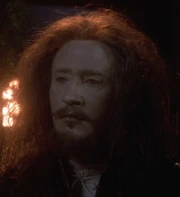
Data practices as Prospero
Data and Captain Picard are at the holodeck as Data is rehearsing his performance of Prospero , a character from the William Shakespeare play The Tempest . After adjusting the set lighting when Picard complains that he can hardly see the android while he is performing, they discuss the character of Prospero, when suddenly they see three lights approaching in a distance, which Data identifies as a steam-powered locomotive . When the computer fails to end the program on Picard's command, the two barely manage to get out of the train's way. After they have both fallen to the ground, Picard has received a cut on his right cheek.
Act One [ ]
Upon exiting, Data examines the holodeck controls and tells Captain Picard that the train originated from one of Beverly Crusher 's programs, a recreation of the Orient Express . In a malfunction of the holodeck database retrieval program, the two programs somehow became linked together temporarily. Picard orders Data to run a diagnostic of the holodeck system, and to discontinue the crew's use of the holodecks just to be sure.
In sickbay , Picard has Dr. Crusher examine him for possible injuries while discussing her program and the history of the Orient Express. Just after Crusher suggests that Picard take a trip on the Orient Express himself, Picard is hailed by Commander Riker , who reports that "all sections are ready to begin the survey." Crusher again insists that Picard ride on the Orient Express one day, stating that he'll never know who he'll meet on the famed train.
On the bridge , Riker tells Picard that they will probably find no new sites in the current systems, because most of the stars are main-sequence binaries with no M-class planets . As Picard is ordering to continue, the Enterprise suddenly goes into warp drive . Riker asks who ordered the maneuver, but Data reports that no one did. " Helm and navigation controls are not functioning. Our speed is now warp 7.3 and holding. "
Down in engineering , Geordi La Forge can only tell his inquiring captain that he does not understand what happened: " The impulse systems suddenly cut out and the warp drive just kicked in. " He tries to take the warp drive off-line.
On the bridge, Data notes that the current heading is 187 mark 4. " I am unable to determine our destination, however we are moving away from the Mekorda sector. " La Forge reports that the computer has locked all the controls and he is unable to override it. In order to stop, he would have to initiate an emergency core shutdown . Riker remarks that this would leave Enterprise without warp power for over a week. While taking this in, Picard then orders La Forge to initiate the procedure. However, the ship stops immediately. Data reports: " We are no longer at warp, sir. Impulse power has resumed, all systems show normal. " The Enterprise has stopped thirty billion kilometers from their previous position. Picard congratulates his chief engineer , but La Forge concedes that it wasn't him, since he didn't have time to begin the shutdown procedure. Picard tells La Forge that he wants an explanation.
Later on, La Forge rounds up his investigation with Data on the bridge, finding only more mysteries. It shows that a theta flux distortion had been building up around the ship. The sensors were never designed to detect such distortions, yet there was a record of the distortion in the sensor log. Data reports that " one fact is clear however. The distortion was growing in strength. If we had remained at our original position 1.7 seconds longer, the distortion would have ruptured our warp core ." La Forge tells Picard that if the ship had not entered warp when it did, the Enterprise would have been "blown to pieces." Picard takes this in and is at a loss for words.
Act Two [ ]
La Forge and Data head down to a power conduit . While crawling through the Jefferies tube , they theorize about what could have caused the Enterprise to go to warp. Data suggests a random power fluctuation , but La Forge thinks the chances of that occurring are too small. As an alternative explanation, Data suggests that the sensors somehow did pick up the distortion and engaged the warp systems to protect the ship. La Forge objects that the sensors aren't connected to the warp system. They reach the conduit, finding a strange set of tubes inside the system. La Forge states that it looks like a new circuit node, connected to at least half a dozen points of the sensor array . To Data, " it appears to be connected to several other systems as well, including the warp control circuits. " When La Forge tries to access the node, it turns out to be protected by a force field . Data remarks the node "appears to be protecting itself."
In engineering, La Forge and Data report their findings to Commander Riker. The nodes have formed all over the ship, linking all systems together, including sensors, warp control, and the defensive systems . The sensors detected the threat, which tripped the defensive systems, which in turn activated the warp engines to protect the ship. Data speculates about the magnascopic storm having had an unexpected effect on the ship's systems. The nodes are also multiplying. The more of them that are created, the more difficult it will become to keep control of the ship. Riker instructs that their " first priority is getting back control over the ship. " All of the circuit connections appear to be connected to holodeck 3. Data notes " it appears to be a focal point of some kind. " La Forge believes there may be a way to disable the nodes permanently, using the holodeck circuitry.
When Riker, Data, and Worf arrive at the holodeck, Data finds it in operation, even though he had shut down the entire holodeck system earlier for a diagnostic. The holodeck has reactivated itself, and will not disengage. Data tells the others that several different holodeck programs are running simultaneously. As they enter the holodeck, Riker comments that " this should be interesting. "
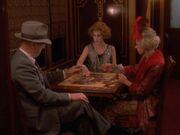
Holodeck characters constructing the "emergent lifeform" jigsaw puzzle
They enter into the Orient Express. The train compartment is filled with a strange crowd of holodeck characters. There is a knight in armor , cutting figures in old papers, a hayseed , two flappers , and a gentleman sitting at a nearby table building a jigsaw puzzle . Then, an old western desperado enters the compartment from the opposite side. He takes a puzzle piece out of his pocket and puts it on the table with the other pieces. Riker says " You weren't kidding, Mister Data. " Data estimates that the scene contains portions from seven distinct holodeck programs. Riker orders Data to access the affected circuits.
A conductor enters the car, asking for the passenger's tickets . When he comes to the hayseed, the hayseed tells the conductor that he has " never been away from home. Now I'm going to Vertiform City . " At first, the conductor passes the officers without taking notice of them. Data calls Riker to him and reports he has found a large concentration of nodes, connected directly to the holodeck's main power coupling . Riker orders Data to depolarize the entire holodeck grid . As they attempt to open the floor to access it, however, the conductor has returned, telling them to "get away from there." He asks the officers for their tickets. Riker explains that they left their tickets in their compartments and blames Worf for leaving them. The conductor says he doesn't "think you folks belong on this train."
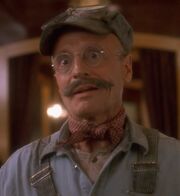
The train engineer
At that, the train engineer enters the cabin, and tells the conductor to leave the officers alone, since " they're only trying to help. " The conductor orders the engineer to go back to the engine since this affair is of no concern to him. The engineer complains to the Enterprise officers that " they're all trying to hijack the train! " The hayseed wonders who is doing the driving of the train. Then, the engineer is shot by the hitman , a mafioso stepping in to the compartment from behind the engineer, and falls dead in Riker's arms.
At that same moment in engineering, the console La Forge is working on explodes, throwing him to the floor without seriously injuring him. After being brought to his feet by Russell , he finds the navigational relay has overloaded.
In the train, the conductor looks out the window, then operates the emergency brakes. At the same moment, the Enterprise goes back to warp, and La Forge reports to Picard that the warp controls have "completely burned out." He is not sure if he can stop the ship. Back in the train, Data says he believes that they have changed direction. The conductor, with a smile on his face, tells them that " now we're on the right track. Ladies and gentlemen, we are on our way! " The hitman comes up to the engineer's corpse and takes a brick from his uniform. The conductor urges him to " take good care of that. We can't afford to lose it. " The conductor asks the officers if they will leave voluntarily; if not, they would have be to be forcibly removed. Data tells Riker that through his tricorder , he has determined that the holodeck safety protocols have been disengaged, making the hitman's weapon lethal. Riker tells his men to retreat with him.
Back in engineering, Data and La Forge inform Picard that the number of nodes has increased considerably. Sensors, engines, replicators , and propulsion systems are all working together, almost independent of the main computer . The nodes also link all the systems through the holodeck. Data theorizes that the events on the holodeck directly affect the ship, asking La Forge whether he recognizes the pattern of the nodes' distribution. La Forge remarks that it looks a lot like Data's positronic brain , which Data confirms, concluding that the nodes are beginning to form a rudimentary neural net . " Unlikely as it may sound, I believe that the Enterprise may be forming an intelligence. "
Act Three [ ]
In the observation lounge , Data briefs the senior staff about the current situation. He points out the similarities between the Human neocortex , his own positronic net and the nodes' current distribution, concluding with the hypothesis that the Enterprise is forming some type of intelligence. When Deanna Troi asks how this could even be possible, he explains that this is an emergent property . " The Enterprise contains a vast database , which is managed by a sophisticated computer . This complex system gives the ship many of the characteristics of a biological organism. [...] I believe a self-determining intelligence is emerging. " Data also believes that " the key to understanding the ship's behavior lies in the holodeck. All of the connection nodes intersect at that location. It is clearly some kind of processing center. " Troi volunteers to go to the holodeck to interact with the characters and gather clues from this to learn what is happening. Picard agrees and sends Data and Worf along with the orders to disable the nodes without damaging them – if the ship is creating an intelligence, " it deserves the same kind of respect as any other being. "
Troi, Data, and Worf enter the holodeck. Troi finds one of the ladies clinking her cup to the knight's armor in a repeating loop. The hitman and the desperado are playing cards. As Data goes off to depolarize the power grid, Troi and Worf try to distract the other people. They go to look at the puzzle, now being built by the other lady and the hayseed, which is still not quite finished. The picture on the puzzle somewhat resembles the nodes, but nobody can quite identify the picture. Worf sits down to help with the puzzle, while Troi visits the two men playing cards. She asks to be dealt in, but the hitman says it is a two-man game. Then the counselor notices that the desperado is tied around his chest. When trying to examine a brick lying on the table, the hitman grabs her hand and warns her not to touch it, it being worth "plenty." He also tells her that he has to get it to Keystone City , which is the place where "everything begins." After that, he puts his cards down and says " Gin. " Troi notices the same strange picture, the same as on the puzzle, on each card.
Worf checks on Data, who is now ready to access the power grid. At that moment, the conductor comes in announcing the next stop to be Keystone City. When he notices Worf and Data, he asks to see their tickets again. As they don't have any, they have to leave the train in Keystone City. The hitman also gets off, and Troi advises the others to follow him, as she considers the brick to be an important clue.
The hitman disappears in the streets of Keystone City. Data manages to find an access point below a manhole cover in the street. He attempts to depolarize the holodeck grid with a low-frequency inversion field , as this may disengage the nodes without destroying them. Then Troi spots the hitman again rounding a corner, and she and Worf go after him. When Data attempts to access the hologrid, a taxi appears out of nowhere heading for his position. Data only barely manages to avoid an impact.
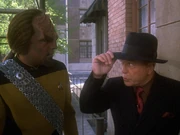
Worf and the hitman
The hitman walks to a building under construction, with a wall missing one brick in the center. Troi and Worf walk up to him, and Troi asks the man what he is doing. He comments that he is "laying the foundation." At that he places the brick in the hole, the whole wall glows for one moment, and the brick melts in perfectly with the rest. The hitman leaves, remarking that he has a train to catch.
At that moment on the bridge, La Forge informs Picard that he cannot explain why Cargo Bay Five suddenly depressurized , but that everyone were able to get out in time and he has re-established the containment field . He also reads massive power surges and all kinds of transporter activity in the cargo bay, which prompts Picard to send him there to investigate.
In Cargo Bay 5, La Forge finds a strange object which looks exactly like the picture on the puzzle as well as the playing cards at the holodeck, an ominous light glowing in the center of it. Picard asks him what it is, but La Forge is unable to tell him exactly what.
Act Four [ ]
In the meantime, back on the holodeck, Troi and Worf are discussing the strange events. Troi says " That man said he was laying a foundation. " Worf replies " For what? " Troi asks Data how he is doing. Data is then seen holding off the same taxi (which is still trying to run him over) with one hand while working on the now exposed node with his other. He reports that he has " encountered a minor difficulty, counselor, but it has been dealt with. " He begins to depolarize the holodeck power circuits.
In the cargo bay, the object has by now grown halfway to about knee height. La Forge remarks that " the ship's replicators and the ship's transporter systems have merged somehow to create this. " He does not know, however, what "it" is, and orders an ensign to run a full spectral analysis on the object. Then the cargo bay begins to shake and rumble, causing a large cylindrical container to fall off of a shelf. La Forge reports " massive power fluctuations. The ship is losing its structural integrity . "
Back with Troi and Worf, the holodeck also begins to shake. The brick wall collapses, almost on top of Troi. Behind the wall is a building entrance, bearing number 1136. La Forge tells Data to stop with whatever he is doing, and the trembling stops. Troi has suffered minor injuries. La Forge suggests that he and Data " ought to get together and compare notes. "
In sickbay , Crusher is treating Troi, who believes the ship was protecting itself. " Whatever it's doing, it intends to continue. " La Forge thinks it has something to do with the strange object forming in the cargo bay. Troi agrees, seeing how the symbols in the holodeck all point to something being created. Picard asks his chief engineer what the object might be, but all he can tell Picard is that it is composed of silica polymers , duranium , and " a couple of other compounds we haven't been able to identify yet. " Creating it however, has had a major effect on the systems. " Warp power has dropped 47 percent. " Picard asks Troi if she has been able to determine anything else on the holodeck. She tells him it is full of metaphoric images, like it was having some kind of day-dream. The character could represent different systems: the engineer stands for navigation, while "the gunslinger could be the weapons system ." Troi tells Picard it will be difficult to reason with the characters, since they "seem unaware of what is going on." She feels the intelligence is still in an infant state, and "the only experience it can draw on is ours, through our holodeck programs." Picard asks if there is some way to influence the characters' behavior. Troi thinks there is, and wants to go back in. La Forge argues that the safeties are still off-line, and Crusher tells her that while her injuries were not too severe this time, she could get killed if it happens again. She understands, and still wants to go. Picard agrees, and suggests they cooperate with the holodeck characters.
Troi, Worf, and Data enter the Orient Express once again. Immediately, the conductor tells them they "don't belong on this train." Worf then shows him three tickets to Vertiform City, upon which the conductor admits that he was in error about them, and welcomes them aboard. The lights go on and off, and the train shakes. Worf asks what's going on, and the conductor tells him " the engine's running out of steam. I hope we make it to Vertiform City on time. " Troi asks if they can help, and the counselor asks Worf to help the conductor and brings him to the engine room. Both leave, and the hayseed walks up to Troi, worried if they will make it to Vertiform City in time. Troi reassures him that they will and inquires about Vertiform City. The hayseed describes the city as having an all-you-can-eat restaurant with the best food around.
At the engine, the conductor tells Worf to shovel coal into the fire, saying that he's "much obliged for [his] help." Up on the ship's bridge, Riker reports from the tactical station that warp power is back to normal. Picard asks him for their heading, and Riker tells him they are going to Tambor Beta VI , a white dwarf star . In the train, the conductor compliments Worf and tells him to keep going.
When the Enterprise reaches the star, Riker reports the ship is " using a modified tractor beam to collect vertion particles from the star. " Picard makes the connection between vertion particles and Vertiform City, and concludes this is what the ship was looking for. The ship trembles, and Riker reports that " the particles are being routed through the transporter system into Cargo Bay Five. " La Forge reports that the object is absorbing vertion particles, and growing even faster than before. Also, he is "picking up internal energy," reports coherent emissions and matter conversion.
Suddenly, something appears to be going wrong, power is fluctuating, vertion absorption rate is dropping. Riker reports " the beam has exhausted the supply of particles in the star. " The energy output of the object is decreasing.
In the engine room, the conductor is alarmed: " This was supposed to be Vertiform City. We've been on the wrong track all along. " He pulls the brake lever and the train screeches to a stop, jumping off the tracks and knocking all the passengers to the floor.
Act Five [ ]
Worf comes to Troi and Data, who are just standing up after having been thrown to the floor, to report that " the conductor accidentally derailed the train. " Data informs Picard, who is now in the cargo bay, about the accident, asking whether there had been a similar incident on the Enterprise . Picard tells him that they have had " a ship-wide shutdown. We've lost attitude control, and most systems are off-line. "
La Forge asks Picard to take a look at a PADD , explaining " When the particle beam cut off, the object was beginning to form a coherent energy matrix . The emission patterns were almost organic in nature. " He concludes that the Enterprise is trying to create a lifeform . Picard asks if it will survive, but La Forge observes that its energy levels are decreasing rapidly. Unless the lifeform gets a new infusion of vertion particles as soon as possible, it might not survive. The cargo bay shakes. La Forge walks to a console and tells Picard that the systems are functioning again, and the ship is moving at warp 9. Picard and La Forge head back to the bridge.
Back in the train, the Hayseed tells Troi, Worf, and Data that they are now heading for New Vertiform City . Data relays the information to Picard. On the bridge, Riker announces that they are heading toward the Cordannas system , the nearest white dwarf star . La Forge interrupts: " We have a problem. " Even at warp 9, the system is twelve hours away, and though the object will survive that long, all energy is rerouted to propulsion, including life support, and there are only two hours of reserve oxygen . The captain orders Data to gain control over the train to stop the Enterprise , then asks for another source of vertion particles closer than the Cordannas system. La Forge reports white dwarves are the only natural source of vertion particles, but, at Picard's suggestion, he begins trying to find an artificial one.
Back aboard the train, Data and the others attempt to go to the engine and stop the train. All other characters suddenly spring to life to stop them, the hayseed stating that they "are going nowhere."
On the bridge, La Forge has found the MacPherson Nebula , which is a supernova remnant , and Dikon Alpha , which is a class nine pulsar . Both are close along their flight path and both can produce vertion particles if a modified photon torpedo is detonated inside them. La Forge cannot guarantee if enough vertion particles will be produced, if any at all. Picard leaves it up to La Forge to decide where to go. He decides on the nebula . Picard agrees, and tells him to " begin the torpedo modifications. "
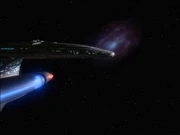
The Enterprise heads towards the MacPherson Nebula
On the train, Troi tells the hayseed that they understand what is happening, and want to help the holodeck characters to get to New Vertiform City. The hayseed is reluctant, but Troi convinces him. Data is allowed to go to the engine, but is stopped by the conductor and the hitman. Data argues he knows a shorter route to New Vertiform City. The hitman doesn't trust him, but the conductor grants permission, " but no funny stuff! " Data reports to Picard he has " taken control of the engine room. " Picard orders Data to slow the Enterprise to impulse speed. Data adjusts the train's speed, using the brake to slow it down accordingly while the conductor remarks " I hope you know what you're doing! "
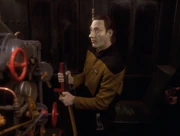
" Mr. Data, I need you to slow us to impulse speed. " " I will attempt to do so. "
The Enterprise approaches the nebula and launches the adapted torpedo. La Forge reports it is working, and that the nebula is producing vertion particles. In the train, an ecstatic conductor proclaims that they've arrived at New Vertiform City.
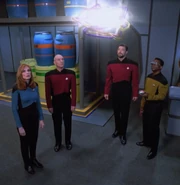
The lifeform leaving the Enterprise -D
Crusher, Picard, Riker, and La Forge are assembled in the cargo bay and observe the lifeform. Riker observes that the nodes are disappearing and systems are beginning to function normally again. Picard concludes the entire purpose of the ship's odd behavior was to bring the lifeform into being. The doctor remarks that some species die after they procreate. Then, the lifeform lifts up, disappears through the bulkheads, and exits Enterprise . On the holodeck, Worf, Troi, and Data are drinking champagne with the other characters. Then the program ends and the holodeck's grid appears.
Picard is drinking tea in his ready room at his desk when Data enters. He invites the captain to visit his performance of a scene from The Tempest in front of a small audience that evening. Picard asks Data what scene he will be playing, and Data tells him it will be the scene where Miranda first encounters other Human beings, since it seemed appropriate. Picard declaims: " Oh brave new world, that has such people in it. "
As Data is about to leave, he turns back around and observes that Picard " took a substantial risk by allowing the Enterprise to complete its task. [...] The object could have been dangerous. " Picard argues that the formed intelligence did not only come from the ship's systems, but also from the crew 's personal records, mission logs, fantasies, et cetera. " Now if our experiences with the Enterprise have been honorable, can't we trust that the sum of those experiences will be the same? "
Memorable quotes [ ]
" Yes, yes, Data. I know about the Orient Express but what is it doing on Prospero's island? "
" I never realized you were interested in trains. Are you aware that at its peak, the Orient Express carried more than ten thousand people a year? " " It isn't really the train itself that I'm interested in. " " What then? " " It's the experience. "
" I was right. He was trying to make off with my brick. " " Take good care of that. We can't afford to lose it. "
" Unlikely as it may sound, I believe the Enterprise may be forming an intelligence. "
" If the Enterprise hadn't jumped into warp when it did, we would have been blown to pieces. "
" Sorry, boys. You're getting off right here. "
" Complex systems can sometimes behave in ways that are entirely unpredictable. The Human brain for example, might be described in terms of cellular functions and neurochemical interactions, but that description does not explain Human consciousness, a capacity that far exceeds simple neural functions. Consciousness is an emergent property. " " In other words, something that's more than the sum of its parts. "
" Keep it steady. Put your back into it! That's the ticket! "
" The intelligence that was formed on the Enterprise didn't just come out of the ship's systems. It came from us. From our mission records, personal logs, holodeck programs, our fantasies. Now, if our experiences with the Enterprise have been honorable, can't we trust that the sum of those experiences will be the same? "
Background information [ ]
Production history [ ].
- Final draft script: 17 February 1994 [1]
- Filmed: 18 February 1994 – 28 February 1994
- Premiere airdate: 9 May 1994
- First UK airdate: 12 June 1996
- The story for this episode originated from Brannon Braga 's desire to create one more holodeck story prior to the series' end. After briefly considering a final Dixon Hill adventure, Braga settled on creating "the ultimate holodeck show". ( Star Trek: The Next Generation Companion , 2nd ed., p. 295)
- Braga elaborated, " I felt if we were going to do another holodeck show, we should do one like we've never seen before. It's a bizarre amalgam of all the holodeck shows we've ever seen. I had in my mind this image of Dixon Hill crossed with King Arthur's Court crossed with the Old West crossed with Modern Day New York – all thrown together and our people trapped in this adventure. I thought that would be neat and ended up coming up with the concept of the ship developing a psyche. These subconscious elements of that psyche would manifest themselves on the holodeck and we have to go in and interpret the symbolism and communicate to the ship through the adventures it's portraying. " ( Captains' Logs: The Unauthorized Complete Trek Voyages , p. 304)
- At the time, Braga was still busy writing the finale with Ronald D. Moore . As such, Jeri Taylor called upon Joe Menosky to write the script. ( Star Trek: The Next Generation Companion , 2nd ed., p. 295)
- As noted in the Star Trek: The Next Generation Companion , 2nd ed., p. 295, this was the only writing collaboration between the two writers who had a reputation as The Next Generation 's most offbeat. Braga and Menosky later collaborated on many episodes of Star Trek: Voyager .
- On Menosky's initial effort, director Cliff Bole joked, " I thought Menosky mighta had a couple of mushrooms when he wrote the first script. We all read it and thought, 'Jeeesus, you can't shoot this in thirty-five days!' I mean, marvelous crazy ideas, but it had to be down-scaled. " ( Star Trek: The Next Generation Companion , 2nd ed., p. 295)
- Naren Shankar provided an uncredited polish which scaled down some of the fantastic elements to a more manageable level. ( Star Trek: The Next Generation Companion , 2nd ed., p. 295)
- Data may have had good reason to ask for Jean-Luc Picard 's insight into the character Prospero . The following year (1995), Patrick Stewart played the role of Prospero on Broadway.
Production [ ]
- "Emergence" was filmed between Friday 18 February 1994 and Monday 28 February 1994 .
- No new sets had to be constructed for the filming of this episode. The train set was a reuse from the movie Bram Stoker's Dracula , although the Edwardian interior was refurbished into the desired 1920s look. Bole commented, " That train was marvelous. If we'd built that there would have been another 120 grand that would have been subtracted from everything else. " ( Star Trek: The Next Generation Companion , 2nd ed., p. 295)
- Likewise, Paramount's standing New York City set was used as Keystone City . The staircase that the crew ascends, according to the sign on the back, belongs to the New York City subway's 42nd street/Times Square Station. [2]
- Stock footage from the classic film Murder on the Orient Express was used for the train. Bole recalled that he had to plead with Rick Berman for a close-up of the wheels braking. While Berman maintained that this would violate point-of-view logic in that no one would be on the holodeck to see this, Bole remarked, " The sparks coming and all that – I had to have it! Sometimes for drama's sake you gotta break the rules, so I got away with it once. " ( Star Trek: The Next Generation Companion , 2nd ed., pp. 295-296)
- The emergent lifeform was a CGI animation created by Amblin Entertainment, Steven Spielberg's production company that also worked on the seaQuest DSV television series. The MacPherson Nebula was an old creation of Visual Effects Supervisor Dan Curry , who had been experimenting with laser light on plastic surfaces. ( Star Trek: The Next Generation Companion , 2nd ed., p. 296)
- This episode is director Cliff Bole 's 25th (and last), making him the most prolific director in TNG annals. He would go on to direct another 15 Star Trek episodes for DS9 and VOY .
Reception [ ]
- Ron Moore remarked, " I think that holodeck stuff is a riot. The re-creation of the Orient Express alone is worth the price of admission. " ( Captains' Logs: The Unauthorized Complete Trek Voyages , p. 304)
Video and DVD releases [ ]
- UK VHS release (two-episode tapes, CIC Video ): Volume 88, 26 September 1994
- As part of the TNG Season 7 DVD collection
Links and references [ ]
Starring [ ].
- Patrick Stewart as Capt. Jean-Luc Picard
- Jonathan Frakes as Cmdr. William T. Riker
Also starring [ ]
- LeVar Burton as Lt. Cmdr. Geordi La Forge
- Michael Dorn as Lieutenant Worf
- Gates McFadden as Dr. Beverly Crusher
- Marina Sirtis as Counselor Deanna Troi
- Brent Spiner as Lt. Commander Data
Guest stars [ ]
- David Huddleston as The Conductor
- Vinny Argiro as The Hitman
- Thomas Kopache as The Engineer
- Arlee Reed as The Hayseed
Uncredited co-stars [ ]
- Lena Banks as operations division ensign
- Debbie David as Russell
- Cameron as Kellogg
- Tracee Lee Cocco as Jae
- Nick Dimitri as Taxi driver
- Elliot Durant III as operations division ensign
- Keith Gearhart as operations division ensign
- Christopher Gilman as Knight in armor
- Fumiko Hamada as command division officer
- Grace Harrell as operations division officer
- Michael Moorehead as science division ensign
- Reed as Flapper
- Joycelyn Robinson as Gates
- John Tampoya as operations division ensign
- Oliver Theess as command division officer
- Dennis Tracy as Man in grey flannel suit
- Steve Whittaker as Gunslinger
- Dianne Zanuck as Flapper
Stunt doubles [ ]
- Christine Anne Baur as stunt double for Marina Sirtis
- John Nowak as stunt double for Patrick Stewart
- Brian J. Williams as stunt double for Brent Spiner
- Unknown stunt performer as stunt double for LeVar Burton
Stand-ins [ ]
- David Keith Anderson – stand-in for LeVar Burton
- Debbie David – stand-in for Brent Spiner
- Michael Echols – stand-in for Michael Dorn
- Nora Leonhardt – stand-in for Marina Sirtis
- Lorine Mendell – stand-in for Gates McFadden
- Richard Sarstedt – stand-in for Jonathan Frakes
- Dennis Tracy – stand-in for Patrick Stewart
References [ ]
19th century ; act ; astronomical database ; atom ; audience ; bearing ; binary star ; biological organism ; boiler ; brake ; brick ; cargo bay ; cell ; circuit node ; class 9 pulsar ; coal ; coherent energy matrix ; colony ; communications system ; compartment ; conductor ; connection node ; Cordannas system ; cross section ; Data 73 ; database retrieval program ; data-flux distortion ; daydream ; defensive systems ; Dikon Alpha ; dinner ; Dodge Touring Sedan ; dog ; duranium ; earthquake ; emergency core shutdown ; emergent lifeform ; emergent lifeform holodeck sequence ; emergent property ; energy matrix ; engine room ; engineer ; Federation ; flapper ; flight path ; force field ; foundation ; Freud, Sigmund ; full diagnostic ; full spectral analysis ; gangster ; gin ; gunslinger ; helm ; hijacking ; holodeck ; holodeck characters ; holodeck circuitry ; impulse speed ; impulse system ; IND Eighth Avenue Line infant ; inversion field ; IRT Broadway-Seventh Avenue Line ; Istanbul ; Jefferies tube ; Keystone City ; knight ; life support ; locomotive ; M class ; MacPherson Nebula ; magic ; magnascopic storm ; main sequence ; Manhattan ; Mekorda sector ; metaphoric imagery ; Miranda ; mission record ; modern era ; navigation ; navigation system ; navigational relay ; neocortex ; Neoplatonism ; neural matrix ; neural net ; neurochemistry ; New Vertiform City ; New York City Transit System ; newspaper ; No parking sign ; Orient Express ; oxygen ; painting ; paper doll ; Paris ; personal log ; pharmacy ; phenomenon ; photon torpedo ; play ; polymer ; positronic brain ; positronic net ; power coupling ; power grid ; processing center ; Prospero ; Prospero's Island ; puzzle ; Queens ; Renaissance ; replicator ; reproduction ; scene ; sensors ; sensor array ; sensor log ; sensor range ; set ; Shakespeare, William ; silica ; steam ; Stein, Gertrude ; stellar cartography ; subway ; Sunshine Radio System ; Supernova remnant ; synapse ; tailor ; Tambor Beta-6 ; taxi ; Tempest, The ; theta flux distortion ; ticket ; The Bronx ; toast ; torch ; tractor beam ; train ; tricorder ; Vertiform City ; vertion ; warp control ; warp control circuit ; warp drive ; warp jump ; weapon system ; white dwarf
External links [ ]
- " Emergence " at Memory Beta , the wiki for licensed Star Trek works
- " Emergence " at Wikipedia
- " Emergence " at MissionLogPodcast.com , a Roddenberry Star Trek podcast
- "Emergence" script at Star Trek Minutiae
- " Emergence " at the Internet Movie Database
- 1 Daniels (Crewman)
- 3 Calypso (episode)
Emergence Stardate: 47869.2 Original Airdate: 9 May, 1994
<Back to the episode listing
Star Trek ® and related marks are trademarks of CBS Studios Inc . Copyright © 1966, Present. The Star Trek web pages on this site are for educational and entertainment purposes only. All other copyrights property of their respective holders.
Star Trek: The Next Generation : “Emergence”/“Preemptive Strike”
“Emergence” (season 7, episode 23; originally aired 5/7/1994)
Or The One Where The Enterprise Gets A Heart, Brain, and Courage
After what seems like months of slogging through sub-par to awful TNG episodes, I finally catch a break just before the end, with a pair of decent to great episodes to ease me into the forthcoming Movie Extravaganza, and, ultimately, the series finale. Out of this week’s pairing,“Emergence” is easily the weakest; it feels more like an episode from the second season, an interesting idea that’s more than a little undercooked, with an ending that’s less a conclusion and more a shrug. But it’s consistent in its aims, which means there’s no sudden, poorly justified twist at the end, and it’s weird enough that it’s never incredibly boring. The cast isn’t forced to betray their characters for narrative purposes. Beverly isn’t sexually assaulted by an alien . It’s the little things that make me happy these days.
Related Content
Speaking of little things, “Emergence” opens with what I’m assuming is a reference to the show approaching its conclusion, as Data plays Prospero from The Tempest for the benefit of a somewhat distracted Picard. The monologue Data recites comes from near the end of the play, as Prospero states his intentions to break his staff and burn his books and basically get on with his life, which isn’t a terrible sentiment to express when you’re getting ready to shut down a seven-year-old production. The scene is a nice callback to Data’s various efforts over the course of the show to develop his humanity, an arc that never really got the finale it deserved, but managed to generate many of the series’ most powerful, original moments. And maybe it’s appropriate that we never got a definitive version of Data-as-real-boy. Unless you’ve got a fairy godmother following you around, the journey to humanity isn’t one with a set or foreseeable conclusion. It would’ve been nice to spend more time with Data before the end, but given the general tenor of the seventh season (and the way that last Data-centric episode played out , with Lore and the Borg and, well, ugh, basically), maybe we’re better off this way. None of TNG ’s cast would be well-served by the film franchise, but poor Data got the brunt of the damage, so it’s a relief to see him here, much the same as he always was, without any unfortunate emotional tics or painfully forced attempts at comic relief.
Picard and Data have their little talk about the context of Prospero’s speech, but before Data can give it another go, the two are interrupted by a passing train. Which is, to the say the least, a little odd, and it marks the return of one of TNG ’s most reliably goofy plot generators: the malfunctioning holodeck. See, something happened to the ship when the Enterprise passed through a magnetic storm (“magnetic storm” is basically just “a wizard did it,” isn’t it?), and now various systems are acting up. Specifically, the engine takes control of itself and hits warp drive without Picard’s express command; but what’s really startling is when Geordi discovers the Enterprise ’s quick jump actually saved the ship from being destroyed by a build up of theta flux distortion, a kind of disturbance the ship’s computers weren’t actually designed to detect. This has all sorts of implications as to what’s really happening—it’s not just a series of malfunctions, it’s actually a behavior pattern. But what really struck me is how weird it is that there’s a kind of distortion which can build up naturally in space, which the Enterprise isn’t normally able to detect, and which, if left unchecked, can destroy the ship. Awfully convenient the computer developed sentience at exactly the right moment to save the day.
All of this is silly stuff, played as straight-forwardly as possible, and it gets sillier when Data and Geordi start finding curious nodes distributed through out the Enterprise ’s internal wiring, nodes that they’ve never seen before. Data theorizes that the ship’s computer has somehow developed an independent consciousness, demonstrating a survival instinct (i.e., that sudden burst of warp speed) and sort of random whimsy you could label as the efforts of a growing mind. There is something almost unbearably cute in having the Enterprise go all sentient, as though after seven years of being forced to carry around a gaggle of well-intentioned doofuses (and Picard), the ship suddenly decided it needed to have its own adventures. I’ve never been exactly sure what people mean when they say a location is a “character” in a movie or TV show—it always seems like one of those vague phrases critics use when they’re trying to indicate a concept that can’t be adequately pinned down in words—but if you can say it about anything, you can say that the Enterprise is a character on TNG . At the very least, we’ve spent a large chunk of the series worried about her well-being, and looking for cures to her various ailments, so it’s kind of adorable that here, right before the end, she gets to drive the action rather be a victim of it.
Also cute? The way the holodeck, as it has so many times before, becomes the capital of Crazyland. That train Picard and Data saw earlier wasn’t a singular phenomenon. Ripped off from Beverly’s Oriental Express program (sidebar: it irritates me that we learn this via a conversation between Picard and Beverly, in which he recites some facts about the Express, and she tells him he should just relax and embrace the romance of it. One of the more unfortunate assumptions of so much popular culture is that knowledge is somehow unromantic, and that true appreciation stems more from an emotional understanding than an intellectual one. Really, it’s been my experience that the latter generally leads to the former more often than not. To sum up: Beverly should have said, “Of course I know that, I designed the program, isn’t it fascinating?” and then we could’ve spent twenty minutes on train facts), the train now serves as a home to cast-offs from various other programs, each of which represents a different aspect of the ship’s burgeoning personality. When Riker, Worf, and Data enter the holodeck, they find a car full of disparate characters, from a knight in full armor, to a gunslinger villain, to an engineer, to a debutante, and so on. It’s weird and cheesy and not quite as creepy as it might have been, but close enough to be interesting.
Once the Enterprise starts flying itself again, and siphoning particles from a dwarf star in order to construct some sort of device or object in one of the cargo bays, Troi decides to communicate with the ship’s consciousness. So we get some more silly stuff with a gangster and a city set, and Data stops a 1930s era taxi-cab with one hand. This is the kind of episode I always have a hard time reviewing, because while I’m watching it, I’m fine with it; but when it comes time to write anything down, I can never think of what to say. “Emergence” isn’t terrible; I wasn’t cringing or actively embarrassed at any point, but I wasn’t engaged either, because apart from the goofy costumes and weird, quasi-eerie symbolism, there’s really nothing here to get that invested in. Troi gets hit in the head by some falling bricks, but apart from that, no one’s in any real danger; obviously it’s a problem that the Enterprise is controlling itself, but it’s not an immediate problem, because the ship isn’t screwing around with life support or playfully beaming various crew-members into open space. Apart from a general sense of strangeness, the only real tension in the episode doesn’t come up until the final 10 minutes or so, when the life form the ship is trying to create is in jeopardy. Even then, there’s no real sense that the thing might die.
And who cares if it does? “Emergence” spends so much time working on the symbolism on the holodeck that it never really does much with the various implications of its storyline, and that’s arguably the least interesting way to handle the central idea here. Picard pays lip service to the importance of treating any emergent life with respect and compassion, and that’s a fine idea, but there’s never any sacrifice necessary on the part of the crew to maintain these ideals. We’ve had episodes where our heroes have struggled with the difficulties raised by the Prime Directive, and the drama there emerged out of localized compassion conflicting against long-term philosophical necessity. Here, though, it’s simply, “We should get control back. Hm, I guess it may prove to be tricky. Oh look, we can actually get control and give the ship what it needs. We should probably do that!” And once this is accomplished, everything reverts back exactly to the way it was. The ship’s emerging intelligence vanishes, and the life form it put so much effort into generating (which looks like something that should be churning out sheets of candy dots in Willy Wonka’s factory) just flies out of the Enterprise , never to be heard from again. Data and Picard have a nice closing scene together, but it’s hard to shake the nagging sensation that nothing really happened here. Which is fine, not every episode needs to feature some titanic struggle and the collapse of the status quo, but it would’ve been nice if there’d been something approaching stakes in a storyline which ostensibly had thousands of people wake up one morning inside the belly of an unknown beast. Still, it was generally okay, and could’ve been considerably worse.
Stray observations:
- Most adorable moment in the episode? Probably when everyone on the train started drinking champagne after the ship completed its mission.
“Preemptive Strike” (season 7, episode 24; originally aired 5/14/1994)
Or The One Where Picard Puts His Complete Trust In Someone, But Shouldn’t Have
Politically, TNG has never been a daring show. Sure, we’ve touched on hot-buttons issues dressed up in science-fiction tropes from time to time, and we’ve seen our fair share of hateful bureaucrats getting in the way of letting our heroes do their job, but if you were to leave the series with an almost uniformly positive impression of the Federation as “good guys,” I’d be hard pressed to argue. That’s one of the main reasons why Firefly is structured the way it is; having the Federation-like Alliance serve as a force of control and a source of potential danger for the heroes was Joss Whedon’s way of undercutting the rah-rah-hegemony vibe of the Trek franchise. (It was also a way to mimic the classic Westerns trope of a former Southern soldier trying to survive a post-Civil War world, without calling up any of Johnny Reb’s unpleasant connotations.) From what I’ve heard, Deep Space Nine does some undercutting of its own, and I look forward to seeing how that plays out, but for right now, everything I’ve seen has led me to believe that Starfleet is just peachy. I may have my suspicions (mostly due to the show’s tendency to portray any culture that outright opposes the Federation as villainous), but that’s all they are.
It’s odd, then, that the series’ penultimate episode goes to such lengths to inspire sympathy for those outside of Starfleet, to the point where the episode’s climax features a major recurring character betraying Picard’s trust. Odder still, it’s pretty clear that the episode wants us to believe she made the right choice. “Preemptive Strike” is a challenging piece of work, and often an unsettling one, forcing us to look at Captain Jean-Luc Picard—ostensibly the most trustworthy character on the entire ship (I think I’ve used this phrase before, possibly in reference to Data, so let’s just call it a tie)—as well-intentioned but misguided obstacle in the path of Ensign Ro becoming who she really wishes to be. The episode doesn’t insist we take this view, and Picard never becomes outright villainous or cruel, but we spend considerably more time with Ro, watching as she comes to realize she’s finally found the place where she belongs. In a way, “Preemptive Strike” plays like a much smarter, much more effective version of “Journey’s End,” where Wesley realized his true destiny was to hook up with Lurch and go planet-hopping. Like Wesley, Ro meets a wise old man who helps her feel like her life has meaning again, and like Wesley, Ro is forced into a position where in order to follow her beliefs, she needs to disobey orders from her superior officers. But where “Journey’s End” concluded with a lot of hugging and smiling, the last shot of “Strike” is Picard, stone-faced, staring off screen. It’s one of a handful of TNG final scenes which isn’t inherently optimistic or accepting, and there’s something shocking about that. “Preemptive Strike” isn’t just a better episode than “Journey’s End” because it’s not inherently ridiculous; it’s also honest enough to admit that sometimes, you have to go against the people you care about. And when you do, there’s no guarantee your relationship will ever be the same again.
How did we get to this point? Why, trouble with the Cardassians, of course. It’s all political and complicated and whatnot, but basically, everyone’s supposed to be at peace, but the Cardassians keeps pulling nasty tricks on Bajoran settlers to drive them out of disputed territory, and in response, a group of Bajoran fighters calling themselves the Maquis have banded together to defend their people. Lately, the Maquis have decided to switch from defense to offense, and have started attacking Cardassian freighters. This doesn’t sit well with the Federation, because however sympathetic they might be to the Bajorans, they’ve got a treaty with the Cardassians to protect, and the Maquis’ actions could upset that treat. (I suddenly realized, if I’m going to cover DS9 , I’m going to have to get a lot more comfortable summarizing complicated, somewhat metaphorical political issues.) So Starfleet decides they need to take action to shut down the Maquis, and they want Picard’s help to do it. Of course, they’ll also need someone on the inside, and for that, they’ll need Ro Laren.
Another curious element of the this episode, when considered in terms of its placement next to the series finale, is the way the hour is largely devoted to Ro, first re-introducing her to the Enterprise , then watching her as she integrates herself into the Maquis and is slowly won over by their cause. There is absolutely nothing wrong with this, and it’s a key part of the episode; if we’d spent our time with Picard and Riker as they fretted over their lack of regular reports, and the growing doubts about Ro’s reliability, this would’ve been a decent but probably less complicated and interesting story. And yet, as a fan of TNG who has come to have a lot of fondness for the entire ensemble, I can’t help feeling cheated at seeing the show’s next-to-last episode focus so little on the main characters. Equally as curious is how the shift in focus serves to make the series’ regular leads come off as a little less heroic than they normally do. There’s Picard’s obstinacy, for one, but the few moments we get with Beverly and Troi make both women seem somewhat foolish, pampered and naive women who don’t understand the challenges of the real universe. Even Riker, for the five minutes we see him, comes off as something of… well, not a buffoon, not exactly. (I appreciate the episode’s subtle indication that Riker respects what Ro does, even if Picard doesn’t.) But his “loyal soldier” behavior makes him look a little naive. It’s not that I mind being made aware that these characters are more complex than we normally realize, but to get that knowledge so close to the end, without any chance for it to expand or affect other episodes, is a little disappointing.
That doesn’t take away from what this episode achieves, however, and while it doesn’t always feel like a TNG ep, it still holds up quite nicely, tricky morality and all. I especially appreciated the careful way “Preemptive Strike” re-establishes the relationship between Ro and Picard, her clear gratitude to him for all he’s done for her career, and his trust in her abilities and her loyalty. There’s nothing exactly romantic going on between them, and that’s for the best, but the chemistry between Patrick Stewart and Michelle Forbes is phenomenal. Late in the episode, Ro and Picard meet in a bar to exchange information. It’s a conversation that starts pleasantly enough; to hide what they’re talking about from prying ears, the two pretend to be a prostitute and prospective client, which means a lot of touching and lot of whispering in each other’s ears. Picard doesn’t realize it at first, but Ro’s doubts about her mission, after meeting all the kind, noble folks in the Maquis and watching a Cardassian shoot one of them down, have solidified, and she wants to call off a planned trap. The scene plays almost like a break-up, or a lover realizing his partner has had an affair. It’s not perfect; Picard’s refusal to listen to Ro’s doubts and his determination to have the mission go through as planned (even to the point of insisting on Riker being present to make sure she doesn’t try and back out) seems out of character for someone as resolutely humanist as Jean-Luc tends to be. But while it may not sit entirely comfortably within the context of the entire series, as a scene on its own, and working within this episode, it’s terrific.
Really, this whole episode is great, and if this is the sort of complexity I can look forward to in DS9 , I’ll have my work cut out for me. There are quibbles, because hey, I wouldn’t feel comfortable if I wasn’t able to poke a few holes here and there. Macias, the older Bajoran who helps convert Ro over to the side of the Maquis isn’t the subtlest of archetypes, and we’re never given much sign that his Andy Griffith routine is a ruse designed to earn people’s trust (I don’t mean it has to be a ruse, but he lays it on a bit thick either way). The fact that Macias dies is an overly convenient way to remind Ro that the Cardassians are evil, and I’m not sure how smoothly her plan to defect will work out in the long run. If the Federation wanted to be pissy about it, they could spread the word that she was a double agent, and given her record in Starfleet, some of the rumors would stick. But hey, that’s her worry, not mine.
Again, though, quibbles, as are my comments on the placement of the episode in the season’s overall order. It’s heartening to see TNG manage such an accomplished hour right before the end, one that builds on established relationships and moves in ways we don’t expect. That may be the biggest shock of all, really. Trek has trained us over the years to have faith in the system, to believe that every wayward soul can find his or her way back to society if they choose to—and, unless they’re actively evil, they always choose to. Only here, we have someone we have every reason to trust, someone who’s proven her basic decency and strength in every episode she’s been in, and she turns her back on what we thought were the good guys. Not because she’s evil or misled—at worse, you could say she’s misguided, but I have a hard time believing that. “Preemptive Strike” leads us to the inexorable conclusion that sometimes, there is no easy answer; sometimes, whichever way you chose means hurting someone you trust. It’s a difficult lesson to learn, but an important one, and it makes for a moving, uncompromising hour.
- Well, this is the last appearance Ensign Ro Laren makes in the Trek universe. Too bad, really; the character would’ve been fun to revisit a few years down the line.
- I have to tell you, the fact that this feature is ending keeps hitting me at odd moments. I’ve been writing these reviews for nearly two years now, and it’s hard to remember what my work schedule was like before I had to remember to make room for a double dose of Picard and his merry band each Thursday. I’m not sure how to feel about this. On the one hand, it’s not a huge deal. On the other hand, it sort of is. Ah well, maybe I should just stop thinking about it so much.
Next week: I suffer through Star Trek: Insurrection for your pleasure.
Emergence – Ft. Clay
The Enterprise has been a sort of character over the course of seven seasons. We’ve come to know it like the back of our hand. But what if it actually became a sentient being? “Emergence” tries to deal with this question, and it ends up with mixed results. Clay joins me to discuss bendy straw aliens, holodecks gone wild, and golden bricks!
- Post author By Wes
- Post date 01/11/2017
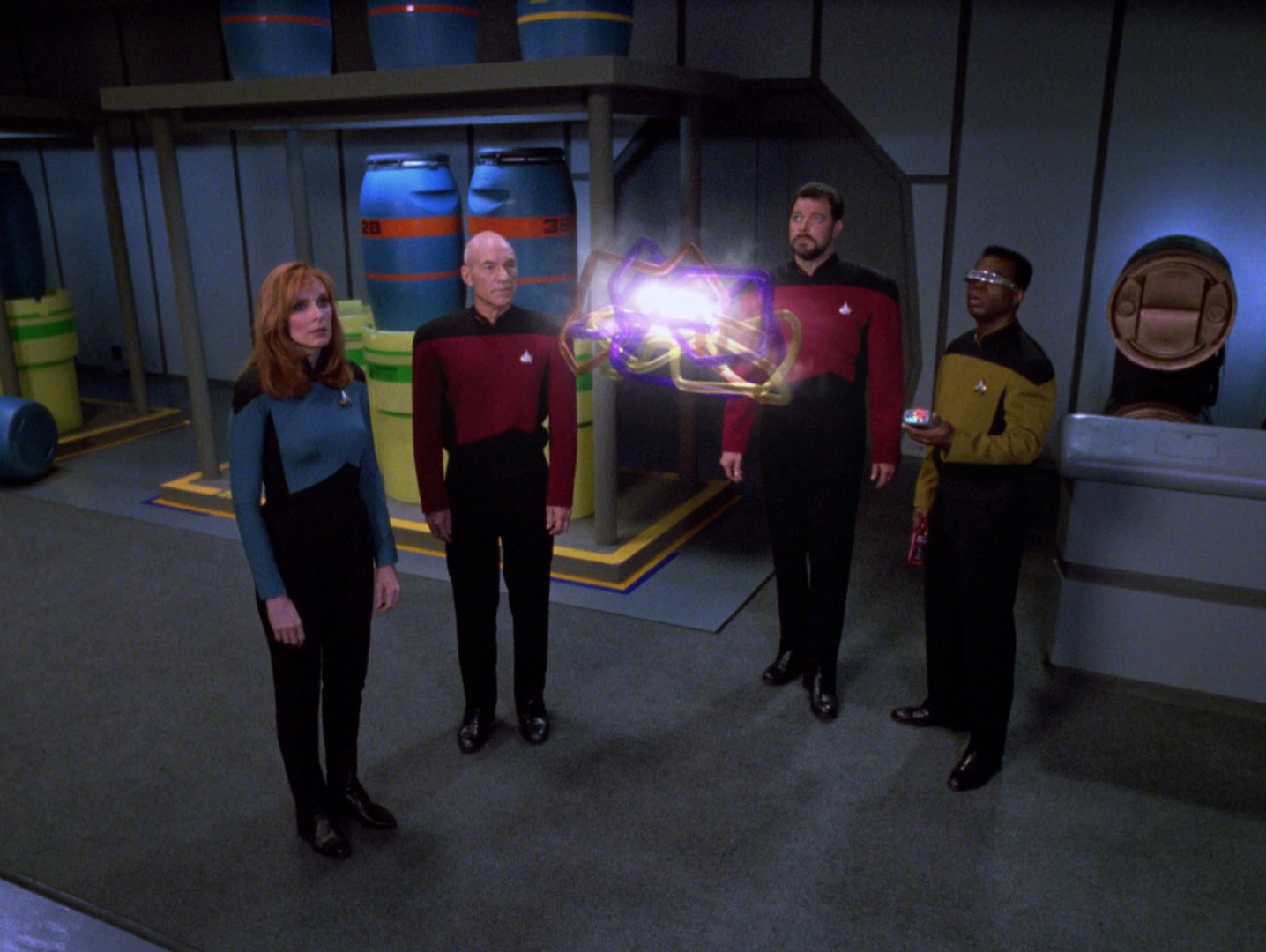
Subscribe: Apple Podcasts | Spotify | RSS | More
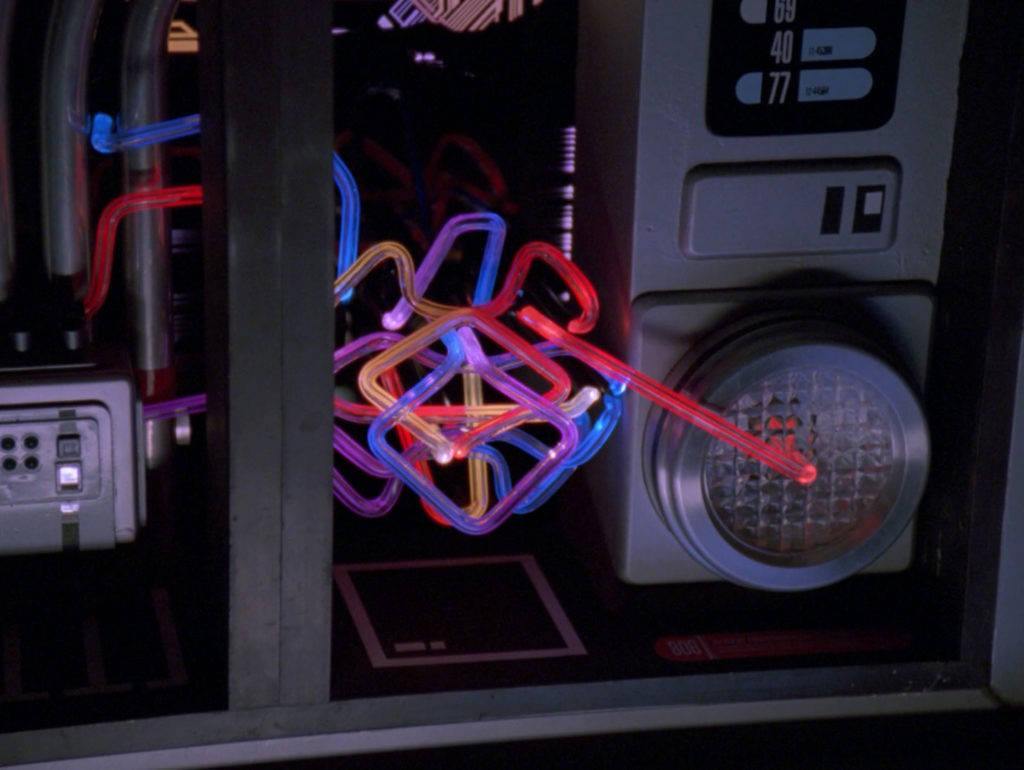
The Wikipedia plot summary for “Emergence”:
Lieutenant Commander Data , while practicing acting in an Enterprise holodeck , is surprised when the Orient Express train drives through his set of Shakespeare’s The Tempest . Later, the Enterprise suddenly jumps into warp on its own; subsequent investigation shows that the ship had been undergoing a deadly theta flux distortion, and only by jumping into warp was the ship saved from destruction. Data postulates that this may be a previously unknown safety feature of the Enterprise , and he and Chief Engineer La Forge investigate the ship, soon discovering one of several small nodes connecting the various ship systems within the ship, all protected by their own force fields. The bulk of the nodes connect to the holodeck, and the crew go to investigate.
Inside, they find themselves on the currently-running Orient Express simulation, where several random characters are interacting in strange manners. Data attempts to shut the program down to no avail. As they watch, a gangster character shoots and kills the train’s engineer, and the conductor pulls on a cord; the Enterprise is suddenly sent into warp again. On leaving the holodeck, the crew finds many more of the nodes about the ship, connecting all the major systems save the main computer; Data believes the formation of the nodes are similar to the human brain’s structure, and posits that the Enterprise is developing its own “Emergence”.
Data, Worf and Counselor Troi return to the holodeck to learn more. The gangster character takes a brick from the engineer and gets off at the next stop – Keystone City – which the three follow. The gangster places the brick in a wall, completing it; at the same time, La Forge detects a power surge in a cargo bay and finds a strange object being constructed atom by atom. Data attempts to access the holodeck circuits, but this causes the ship to shake violently. Troi believes that the characters are trying to act out various roles in the creation of a new entity, and Captain Picard agrees with letting the simulation run its course and the object in the cargo bay, considered to be a new lifeform, to develop.
On the holodeck, Data, Worf, and Troi return to the train, and find it is heading for Vertiform City, its final destination; meanwhile, the Enterprise has arrived at a white dwarf star and has started the collection of vertion particles from it, feeding them into the new object in the cargo bay. However, the supply of particles from the star is limited, and the object’s glow starts to wane; on the holodeck, the simulated characters have a shocked response, and the conductor pulls the emergency brake, which causes not only the train to stop but cause power to drop all around the Enterprise . La Forge determines without new vertion particles, the lifeform will die out.
Suddenly, the Enterprise re-enters warp, diverting power from all other ship’s systems, including life support, to maintain its top speed; the conductor on the holodeck simulation states they are now heading for New Vertiform City. With time short for the crew, Data suggests to the conductor that he knows a shorter route, and gains access to the train’s engine, from which he can control the Enterprise ‘ s course. With La Forge’s help, Data directs the ship to a nearby nebula, and subsequently fires a modified torpedo at it, causing the generation of numerous vertion particles. The ship collects these and completes the lifeform, while the simulated passengers on the train celebrate their arrival. The completed lifeform rises on its own and leaves the cargo bay; the Enterprise returns to normal operation. After verifying their systems have returned to their control and returning to their previous mission, the crew speculate on the nature of this new lifeform.
You can find “Emergence”, and every other episode of the show, at ThePenskyPodcast.com and you can follow me on Twitter at @PenskyFile!
Star Trek: The Next Generation
Cast & Crew
David Huddleston
The Conductor
Vinny Argiro
The Hayseed
Thomas Kopache
The Engineer
Information
© 2011 CBS Corp. All Rights Reserved.
Accessibility
Copyright © 2024 Apple Inc. All Rights Reserved.
Internet Service Terms Apple TV & Privacy Cookie Policy Support

Search this site
Star Trek: The Next Generation
“Emergence”

Air date: 5/9/1994 Teleplay by Joe Menosky Story by Brannon Braga Directed by Cliff Bole
Review by Jamahl Epsicokhan
Review Text
After three straight outings featuring stories that clearly hinted at a closing series tidying up unfinished character business (albeit not especially successfully), we get one last trip into bad sci-fi tedium with "Emergence," which would've been right at home in the middle stretch of season seven that gave us " Sub Rosa ," " Masks ," and " Genesis ," TNG 's Trilogy of Terrible.
Of those three, "Emergence" most resembles "Masks," in that there's a bunch of crazy stuff going on and it's all supposed to be a metaphorical representation of something more significant and highbrow (or at least middlebrow). At this point, I think maybe we've been one too many times to the metaphor well of Joe Menosky — who has the teleplay credit here from a story with Brannon Braga's name on it, but which mostly seems to be an asinine foray into a holodeck-gone-awry pastiche.
The plot is that the Enterprise begins developing its own conscious intelligence based on the massive knowledge base that is the ship's computer, with all its recorded mission logs and personal data. From this intelligence it begins to synthesize a series of connected circuit nodes that suggest the ship itself is becoming sentient. The ship begins synthesizing a physical presence in a cargo bay that the crew believes is its progeny.
That's not a bad concept for a sci-fi story. But the show drives itself into a coma-inducing morass when the computer's consciousness begins using the holodeck to express itself through a series of holodeck programs, combining various characters, eras, and scenarios into a ponderous muddle of sequences that do not for a moment cohere into anything thoughtful or intriguing. They instead come off as random scenes playing out in front of us, alleging the illusion of meaning where none actually exists. The most thematically consistent part of all this is that there's a train, and everyone aboard it is trying to get to "Vertiform City," which is the computer's way of symbolizing the realization of its birthing journey. There are plenty of other details, but none of them work as good storytelling. (Meanwhile, I kept wanting — now, albeit not in 1994 when it originally aired — for the train conductor, played by David Huddleston, to break out and shout at somebody, " Condolences! The bums lost! " But all he could muster was "Ticket, please.")
There's probably a decent story that could've been made from the crux of "Emergence." The idea of the ship becoming its own intelligence and creating its own offspring is reasonably intriguing, as is the idea of the final scene, where Picard notes that he didn't view the entity begotten from the Enterprise as threatening because, well, it came from us. But unfortunately, the way the vast majority of "Emergence" is executed makes success impossible. Here is yet another seventh season episode where it feels like everyone is sleepwalking through it — the writers, the producers, the director, the actors, everyone.
Previous episode: Bloodlines Next episode: Preemptive Strike
Like this site? Support it by buying Jammer a coffee .
◄ Season Index
Comment Section
77 comments on this post, latex zebra.
I remember this episode being on a VHS of 3-4 episodes I'd managed to grab when it was first aired in the UK. I remember this being really bad. I have no desire to revisit it. I feel sorry that you had to.
This should have been saved for Voyager. It's just the kind of high concept sci-fi that Menosky was famous for. He was always kind of a Bragga-lite.
In a way, this show is as much a first season bookend as "Bloodlines" and "All Good Things," only they didn't make it explicit. Consider everything that happened to the Enterprise computer in its first year after launch: it became a repository for the Bynar planetary mainframe, host to Picard's disembodied consciousness and the Velara microbrain, and was goosed by the Jarada probe. In year two, the computer conjured a self-aware Moriarty and merged with the mind of Ira Graves. It was also infected by the Iconian probe virus, but that was presumably wiped out. Beyond that, after being infested with self-aware nanites, interfacing with Barclay's super-genius, absorbing Data's daydreams, and transforming into whatever "Masks" was about, we should've been surprised if the series had ended *without* the Enterprise computer coming to life.
GC McDowell
Interesting observation, Grumpy. It might have been more interesting if even a few of those connections to self-aware computer concepts from throughout the series were made explicit. It might have been more interesting than the random holo-characters that were used instead.
I agree with Grumpy's point; and in general I think there is actually a metaphorical function that the ship's computer coming to life serves as well. The episode opens with Picard explaining his interpretation of The Tempest as Prospero recognizing that his existence is ending and wondering what the future will hold; that was written at the end of Shakespeare's career. Given Menosky's long-standing interest in myths, I think idea of a new life being birthed from the ship and in particular from the holodeck (the stories the crew tell themselves) means that is "about" the show ending, and the notion that the story lives on after the writers and cast and crew work on it -- that the show takes on a figurative life of its own. I don't think the episode itself is good or anything (I haven't watched it in years, so can't comment; I doubt it is anything to write home about) but the episode is concerned with the series ending and the show's legacy in a way that the rest of episodes in this stretch are, too. It's just not particularly effective at exploring that.
This episode has always been a pleasure of mine (I was going to say "guilty pleasure", but why should I feel guilty about liking something?). Maybe it's just because I love trains. Or maybe I enjoyed the puzzle pieces and clues that the crew had to pick up to figure out what was going on. Did it amount to anything? Probably not. But it was still an interesting ride. I always get a kick out of Data casually holding the car back as he makes repairs to the sewer!
OK,Nic and William, you have talked me into it, I will finally see this episode again for the first time in 20 years! Wait, what I meant to say was that if I was trapped on a deserted Island and had nothing else to do, and this was the only episode of ANYTHING, that I would re-watch.
When you put it that way, William B, now I wish this episode had actually been about those themes, not just potentially. At the time, I caught the significance of the Shakespeare allusion, but it doesn't carry through the rest of the story.
One of my least favorite episodes of TNG. I think it's a perfect example of how TNG was out of gas. There is an interesting premise here. But it's horribly rendered -- the train stuff is just dumb and boring. It's also another example of season 7's overuse of Troi and the very slow and dull pace of many of the episodes. Honestly, season 7 of TNG in many ways could be considered season 1 of Voyager -- shipbound action that falls flat and has poor use of characters.
At the very end, after they say "End Program" and the Holodeck finally shuts down, why do the champagne glasses remain?
I would've lobbied for him to say "Never mind that shit, here comes MONGO!!"
In the words of Chris Pine's Kirk, "Enough of the metaphors, ok? That's an order." I guess the champagne glasses were replicated, I think it's in Trek lore somewhere that as well as projecting holograms and conjuring force fields a holodeck can also act like a giant replicator so you can eat and drink in all those simulations of France and whatnot. Replicators are always seen constructing the container as well as the drink. Also explains why Wesley comes out wet in the very first episode - whoever created the program must've thought it was funny (or maybe feels more realistic) to use replicated water instead of holographic.
Riker: But why the holodeck? It doesn't make any sense. Data: Commander, I believe what happens on the holodeck has a direct effect on the ship. That's gotta be the worst of TNG in a nutshell right there
This would have been a fun episode for an early season, where the ship came to life and became a permanent sentient character on the show.
I thought this episode was bad because of its ending. All of this buildup and the end result is: the life form leaves, the ship's intelligence disappears, and everyone goes on their merry way. We never find out why the life form was created or what it set out to do, and why the ship randomly decided to just create it. There was no cause and no end result, with a bunch of random stuff in between.
Q messes with Picard but this time he does it secretly. It's either that or the ship's computer becomes temporarily sentient and gives birth. I'm going with Q.
Cute. The Enterprise comes alive and creates life. Not a bad idea. Could have been really good. Sadly, it was not.
Am I the only person who thought this was a mostly good, fairly ambitious sci-fi episode??
I watched this episode from the perspective of it being one of the last episodes of the series. There was much foreshadowing of Deep Space Nine in season 7, with cameos by DS9 characters in TNG episodes. This episode was decidedly not good, but I got what they were attempting. The opening scene has Picard explaining to Data Shakespeare's perspective of Prospero being the change from one era from another, from the Renaissance to the modern era, and that Shakespeare was excited about it. Prospero represented the old, who had one last trick. TNG, at this point, was Prospero -- now the old series making way for a new one in Deep Space Nine, as well as looking forward to the large screen roll-out of TNG. It's Star Trek, so there must be allegory. The Enterprise, becoming self-aware, is "reproducing." The squiggly node in appearance resembled DS9. At the end of the episode, having completed this new "life form," it goes away, birthed from the Enterprise, out into Deep Space. I bet if I re-ran that scene, it's departure arch would have looked like a nine. Cornball, but given the nature of the writing in the last season, entirely expected. Then we see Picard explaining his willingness to allow this beast almost destroy the Enterprise because new life is good, or some such thing. There.
Unlike many people, I didn't mind Sub Rosa that much, and I thought that Masks was at least trying something interesting. This one, though, had nothing new or interesting to say. Holodeck episodes are generally hideous - how many times must the holodeck go wrong before they install an emergency cut-off switch? - and this must be the about the worst. The holodeck sequences here are just a miscellaneous heap of unrelated stuff, with no obvious point. I mean, why the heck would the ship generate all this stuff as some kind of metaphor? It adds nothing to what is, at best, a pretty run of the mill sci-fi plot. This episode is right down there with the worst of season 1. Zero stars. I hate saying that. The writers gave us so much over the course of the series, but this just seems like self-indulgence on their part.
SkepticalMI
Weird, I like this episode. Random comments: 1) I don't consider it a "holodeck malfunction" episode. Yes, the safeties went offline again, but it wasn't a major plot point. Yes, the holodeck screwed up, but only because the entire Enterprise was going haywire. So I see it as a "something weird happening on the Enterprise" episode, which I have a higher tolerance for. 2) While everyone talks about the ship coming to life and all, the truth is that the ship was more of an incubator for the new life. Whatever caused the thingy to be created, it wasn't the idea of the Enterprise. Of course, the question remained how a species could have evolved to using the computers in random passing starships to reproduce, but whatever. In any case, that means I don't have a problem or a particular fascination with the idea of the computer becoming an emergent intelligence. Adam thought that the birth of the new life going away made the whole thing pointless, but I disagree. We saw a radically different new life form being birthed, which to me was a satisfactory conclusion to this mystery. It is, after all, part of the Trek credits that the goal is to seek out new life. 3) In general, I thought the holodeck scenes worked ok. It had that random element of weirdness, but the metaphor aspect worked ok. I think in part it worked because nothing was explained. Troi suspected that different people on the holodeck represented different systems, but we have no proof of that. In fact, the engineer seemed to be an avatar of a personality that supported the crew, and then got shot. But the engines didn't die. So she was clearly wrong (what else is new?). But what was going on? It just seemed like the ship's way of talking to itself and figuring stuff out. But it was never actually explained which worked out nice. 4) This is one of the few true ensemble episodes in the latter part of the show. For once, we don't just have one character roaming around while everone else has a tiny bit-plot. Picard, Riker, Troi, Worf, and Data all had significant parts to play in the show. While first season episodes tended to be awful, one good thing about them is it tended to involve everyone. And it was just nice to finally see that again. Character pieces are great and all, but sometimes you just want to lay back and watch the team solve a weird problem. And really, to me that's all this episode is. Just pretty good fun. It's not overly impressive by any means, it's not Cause and Effect or Timescape, but to me it's servicable. Even though The Tempest analogy at the beginning was about the most unsubtle metaphor imaginable, it did feel like one last hurrah of the classic TNG episode: a weird mystery happens, and the crew solves it. Maybe Trek was moving away from that style, and so be it. Maybe this was just one last hurrah. And it wasn't the best hurrah, admittedly. But to me, it was good enough. One thing I would change would be to throw a few little in-jokes in there. After all, the holodeck was explicitly made up of different characters that were already programmed in, so we could have seen some old characters. Instead of Data getting run over by a car, why not have one of Worf's monsters attack him? Why not have Dixon Hill's secretary on the train? Or, for a lot of fun, why not have Barclay's mini-Riker or goddess of empathy there too?
I enjoyed this episode. I'm always happy to see a Star Trek story that can be described as sci-fi rather than soap. I'm also happy to see the charming, but frequently poorly written Troi given something sensible to do. As a couple of other posters have mentioned, it is enjoyable to watch the crew team up to solve a problem.
The Enterprise used personal logs and holodeck programs to help design the new widget. Two problems: 1. “Erase all programs filed under ‘Reginald Barclay’.… Except program nine.” 2. “Riker to bridge: If you need me, I’ll be in holodeck four.” And this supposes that Professor Moriarty is still locked away in Reg’s little yellow cube. I just watched it (and actually enjoyed it quite a bit, although it’s hardly a classic — I’d say 2.5, maybe 3), and when Picard and Data were talking about the thingamajig in the ready room, I could only think that maybe they made a mistake. (Personal logs, too. Think of Worf saying as if reciting a weather report, “The conditions were difficult. Many contestants were maimed.” Yikes!) Good luck, universe. Enterprise Junior is on the loose!
This episode did what Inception tried to do. Throw in some Back to the Future 3 and James Bond From Russia with Love and you get this, not so bad.
I absolutely loathe this episode. -1.5 stars. One of the major problems with Star Trek (and other sci-fi, I suppose) is that things happen. Thing happen that should shatter the lives of the characters we watch and alter their lives forevermore. But, then, they don't. The Enterprise's travels with The Traveler, and Computer-Barclay. The engineered humans that aged Pulaski. The soliton wave. The somehow deflection of half of a transporter beam to create an instant clone of Cmdr. Riker. All of these things should have drastically and forever altered the Star Trek universe, but they did not. And now the Enterprise's computer becomes alive on some level, and the ramifications of that are lost on everyone in the universe. Give me a break. This is utter garbage. The concept of the ship's computer being so complex as to become alive is not interesting on any level. Our brains are made to be alive. Ships' computers are not. Bizarre alien influences (perhaps tech, but not influences) cannot cause that to be. The alive ship, then wanting to create progeny, turns a cargo bay into a womb. After "giving birth" (to what we'll never know, but it must be good, because human nature is never evil, right?) the ship instantly reverts to the dumb tool it used to be. Everyone breathes a sigh of relief. "Whew! That was cool, but I hope it never happens again." The worst part of this episode's premise is that it elevates humans to the realms of gods. Unwitting gods who unwittingly engineer new life, just as their ancestors' lives may have been created eons earlier. And yet, the philosophical consequences of this alone are lost on the crew and on all subsequent Trek. The second-worst part of this episode is that Geordi knows how to turn everything off--we've seen him do it. But he doesn't. And the ship runs amok, flying wherever it wants. The whole crew humbly assumes no peril can come to them should the ship accidentally fly somewhere on its instinctive mission that might accidentally kill them all. If there's any possible good that can come from this episode--besides a solid demonstration of how not to philosophize and write science fiction--is that somewhere there is some fan fiction with the story of what would have happened if the ship got randy and desired to reproduce sexually.
Best line ever in all of Star Trek: Troi: "That brick may be an important clue" Me: "Sheesh" (face palm)
"I kept wanting — now, albeit not in 1994 when it originally aired — for the train conductor, played by David Huddleston, to break out and shout at somebody, "Condolences! The bums lost!" But all he could muster was "Ticket, please." Ah! So that's it, Jammer! I kept thinking I knew that conductor from somewhere. He's the Big Lebowski himself, who hired The Dude to help his kidnapped wife (ostensibly). While I forgot about that movie, as I watched the episode, I kept thinking of two other films/shows I'd seen before. First, the TOS episode "The Ultimate Computer" also has the Enterprise's computer basically becoming sentient and taking over after some further tweaks by its original designer, Dr. Daystrom. I kept wondering if this episode was some kind of homage to the TOS one, coupled with the earlier TNG episode where the holodeck's Moriarity becomes sentient. Then again, maybe not. After all, a recent episode -- EYE OF THE BEHOLDER -- lifted the exact title from a Star Trek the Animated Series episode and it had no relationship to it whatsoever. I'm not convinced this show's writers watched classic Trek. I also kept thinking about the Matrix, or more specifically the two weaker sequels, where a subway train ride becomes some sort of manifestation of the matrix interacting with Neo. In all fairness, those movies came after this show, so it's entirely possible this episode was fodder for the Wachowski's imagination. Maybe I'm being charitable given the show was nearing the end of its life, but all in all this episode was not bad. Yes, it was more than a bit nonsensical, mostly because the end goal of a sentient Enterprise was only to give birth to what reminded me of the twisty plastic tube puzzle-thingy for children you see in daycare centers and doctor's waiting rooms. Oh well, parents always see more in their children than outsiders do, so who am I to judge? I also found it a bit silly that Geordi could easily come up with the plan to use a modified photon torpedo launched at a nearby nebula to produce enough vertion particles to deliver the tube-puzzle baby...and yet the sentient ship itself, with full access to all the ship's computers and scientific data, had no clue to do that. Maybe that's the writer's way of reassuring us, "No matter how smart AI computers get, they will always need a human to help out in a pinch."
Star Trek is itself a work of imagination, so why is 'Emergeance' criticised so often as being a ludicrous story? Myth is often just as ludicrous, but also just as useful an effective in its function.
Yeah, this episode IS pretty terrible I gotta' admit. Half of TNG S7 is medicore or downright bad, I don't know what happened :( Off the top of my head, "All Good Things", "Pegasus", and "Pre-emptive Strike" were the only big standouts. Maybe that 2 parter with Worf on the planet with the Klingon / Romulan colony. Maybe when adult Alexander comes back from the future.. But for sure NOT Genesis, Aquiel, Sub Rosa, or this one.
Whoops, apparently many of my examples were from Season 6 :D
Ben Franklin
"The concept of the ship's computer being so complex as to become alive is not interesting on any level. Our brains are made to be alive. Ships' computers are not." Won't Jovet be kicking himself when Skynet becomes sentient in computers that are 300 years older than Enterprise-D's computer :) My Rating 2. Jammer basically said it all, but I do like an ensemble episode. Also, I never can be too hard on TNG... the crew is like a second family to me lol.
It was way too convenient that an anomoly that the ship's sensors have no means of detecting and that could make the ship explode just happened to occur just when an entity that can detect it was altering the Enterprise. It's a good thing it didn't happen to Enterprise the week before.
What can I say about "Emergence"? It's average, nothing more. I might as well add this to my list of "Museum Quality Specimens of Run-of-the-Mill TNG episodes" along with "Hero Worship" and "Imaginary Friend". There is nothing really stand-out good about this episode, at all. Neither is there anything stand-out bad about it. What we have, instead of the standard A-B plot structure, is one plot split into two halves - one focusing on the holodeck and one on the entity being created in the cargo bay. The half focusing on the birth of the new entity is.... well, pretty boring. Absolutely nothing happens that even remotely holds any interest. The ship inexplicably jumps to warp, LaForge discovers that they were literally less than two seconds away from destruction (from something the sensors don't even scan for - rather serious design flaw there, wouldn't you say?!), he and Data crawl around a Jefferies Tube and discover some odd nodes, the ship goes haywire, and then a new lifeform is born from the haywire malfunctions and goes on its merry way. There, I just described that entire half of the episode, in one sentence. As you can see, there's nothing really of note. The highlight is the second part involving the holodeck. And even there, there is nothing that elevates the episode beyond run-of-the-mill. Basically, it's just weirdness for the sake of weirdness. None of it ever really goes anywhere. What was the point? Troi says that the images are meant to be symbolic representations (like the Engineer symbolizing the engines and the gunslinger representing the weapons systems). Okay, so what does the knight represent? The shields? Maybe. What does the 30s era gangster symbolize? The conductor? The country farmer on his first trip to the big city? The 20s era flapper woman? That explanation quickly falls apart. Then they say that it's all random bits drawn from various holodeck programs. So it means nothing; it's all just random nonsense? Make up your minds! It really seems like they just wanted to throw out random images and hope they would be funny enough to carry the episode. Let's have a train in the middle of a Shakespearean play - ha-ha-ha. Let's have a medieval knight in shining armor on the train - ha-ha-ha. Let's have a gangster and an Old West gunslinger playing gin - ha-ha-ha. Let's have the gunslinger tied up when he's supposed to be playing - ha-ha-ha. Let's have Data act like Superman by stopping a car just by holding its front fender - ha-ha-ha. Granted, some of this is kind of humorous, but it all ultimately means nothing and doesn't contribute to the plot. There's a nugget of an idea here - seen best in the final scene when Picard talks about how the new lifeform came from their interactions with the ship. This could have lead to them all questioning whether or not they were, in fact, as good a people as they would like to be - would the lifeform be good as a result. Instead we got Picard just decreeing that it will, of course, be good since it came from them. One of the absolute best scenes in all of Trek is in the TOS episode "Arena" - when they discover that the destroyed Federation colony was in Gorn space and the Gorn thought they were repelling invaders. We get this exchange.... McCOY: Can that be true? Was Cestus Three an intrusion on their space? SPOCK: It may well be possible, Doctor. We know very little about that section of the galaxy. McCOY: Then we could be in the wrong. Beautiful. It acknowledges that these are good people, but people all the same. They are capable of faults and failings. We could have had something very similar here, but sadly didn't. I guess we needed more time watching Worf shovel coal into a train engine. Geez. But what we're given isn't bad. Just imagine if this story had been told in Season One, or even Two. It would have involved an alien demanding the destruction of the lifeform and Picard pompously pontificating about how "the lifeform will undoubtedly be good because it comes from them; now shut up and bask in the unalloyed glory that is 24th century humanity!". In the end though, "Emergence" just reeks of laziness. Jammer is absolutely right to say that everyone was just sleepwalking through their parts - especially the writers. 5/10
Diamond Dave
This has some of the feel of an early season throwback, particularly as yet another example of an interesting premise not being delivered upon. Given the prevalence of the feeling that by this point of Season 7 everyone on cast and crew is phoning in their performances and waiting for the finale, what we have here is filler and little else. Ironically, it does actually find a use for the holodeck. Even if the slightly surrealistic imagery doesn't always work, the plot device hangs together as the ship is visualising its emergent needs through the holodeck. I certainly don't see it as a holodeck gone awry episode. Not much to hate, but no classic either. 2 stars.
gordon phipps
another "actor's wankfest" episode. Data acting in shakespeare, blah blah blah. And the plot itself is only highbrow in the receding hairline sense as Brannon Braga and Rick Berman grew further and further out of touch about what made Star Trek worth watching.
Ugh. I really wanted this episode to be good. The premise was excellent. The execution was... not. Everyone else has already mentioned most of the problems, but two scenes really bugged me because it once again showed the Trek writers' rather limited view of space in a show about space. The scene where they arrived at the white dwarf star and the Enterprise used a modified tractor beam to siphon ALL the vertion particles from it in about 15 seconds was just silly. Nevermind that vertion particles were just made up for this one episode, but I can't imagine a single starship being capable of siphoning an entire supply of anything from a star, let alone doing it that quickly. Also, if the viewscreen showing the star was any indication of how close they were, I imagine they had to have been at least several million miles away. Assuming the tractor beam moved at the speed of light AND could be shot that far anyway, you see the problem. The other scene was when they arrived at the nebula. Nebulas are also huge, but Star Trek has a history of showing them as just pockets of gas floating in space, waiting to be used as a hiding place or whatever the plot called for that day. And again, the viewscreen showed the ENTIRE nebula, yet a photon torpedo traveled there in like a second and was shown to create a shockwave across the whole thing. Lazy lazy lazy.
I always confused this episode with the "cellular peptid cake - with mint frosting" episode. The holodeck scenes are reminiscent of the dream sequences and Data's trying to find out what an unknown entity is up to through symbolism. Unfortunately, this episode makes our heroes look like idiots. Hearing their lines of them trying to determine what's going on is just painful.
"I think we should follow that man, that brick may be an important clue" She just doesn't even care any more.
wanderer2575
"LaForge to Bridge." "Picard here. What's going on?" "I wish I could tell you." Then why the hell did you contact the Bridge? Dialogue like that makes me want to throw that gold brick at the TV screen.
There isn't anything wrong with that dialogue if the "I wish I could tell you" is an introduction to more information. It isn't being used as "I wish I could tell you. Bye." It's being used as "I wish I could tell you. Check this out..."
^ That's a big "if" and it wasn't present in the episode. With the music, it was just another Manufactured Dramatic Moment (With A Camera Hold On A Character's Face) As We Go To Commercial.
Believe it or not I liked the idea-self emergent AI, the holodeck thematically expressing its growth and the ship seeking out needs like a baby seeking milk or food. This is a harder sci fi concept and is a lot better than Soap Opera which DS9 apparently is popular for. It does raise questions are ships in Trek if they've been around long enough, accumulated enough data and crew experience is the emergence of sentience inevitable? So the Federation has a real problem much like Androids and Holograms what if ships, industrial replicators and planetary networks become alive? Will they it happen even if the AIs aren't necessarily going to be nice or will they lobotomize and do everything in their power to prevent AI from occurring? Hence showing that the Federation will only embrace NL and NC only so far.
Sometimes an episode is carried by a great idea and the execution is secondary. I really like this episode and always found it inspiring. Think of how many TNG episodes carry much less meaningful messages. To see the birth of a new intelligence is one of the great stories in Science Fiction. That being said, the less-than-ideal execution never stopped me from enjoying this episode. 2.5 stars at least.
That rainbow pipe thing the Enterprise created looks like an old Windows screensaver. Seeing the characters stare at it in amazement is hilarious.
This may have have been the greatest episode, but it did have one great scene: the first scene with Data doing The Tempest and Picard commenting. I loved it and still remember it though I haven't seen it for years.
Everything in this episode is a metaphor for TNG ending, laying the foundation and giving birth to a new series...Voyager. It starts brilliantly with Captain Picard explaining Shakespeare's Tempest. The next episode starts the makis. Re-watch it knowing everything you see and hear represents the entire series...not just the enterprise.
I remember really liking this episode the first time I saw it. The concept of the ship coming to live with sensors as eyes and ears and the computer as brain. It stuck with me, I remembered the episode and was really looking forward to it while rewatching all episodes. But I forgot the poor acting in this episode. The explanation about the sensors and everything is really awful. Like a highschool play with everyone dutifully saying their lines. No passion, nothing. And the end trekt result is bad indeed. The offspring just flies off and life goes on. Bye unique lifeform that our ship made! Don't forget to send a postcard! Concept on paper is still great. Even the train could've worked. But it didn't emerge beyond the sum of its parts...
This topic was dealt with before in 'The Terminator' with SkyNet, an AI that becomes self-aware. It's just that such a topic needs the reverence it deserves, not a late season 7 also-ran episode of TNG.
Startrekwatcher
2 stars I was actually looking forward to this episode after such an awful string of episodes after the entertaining Genesis weeks back. It was an ensemble show and a mystery show and TNG had done great sci fi mysteries. The outing started out promising and intriguing but Unfortunately like most of this season the episode had a good idea that just wasn’t done well. Here was a chance to do something bold by having the Enterprise become sentient as the series was on its way out but instead they pulled back and chickened out with the wholly underwhelming choice to have it only give rise to a new lifeform. Quite disappointing
It was just boring.
Another Braga TNG episode so you know it's going to be a bit of a mind-bender. Sometimes they work, sometimes they don't. This one didn't. The biggest thing as I'm watched this episode is I'm wondering why should I care -- is it just weirdness for the sake of weirdness or is there some important analogy or lesson ultimately behind it. The Enterprise gaining sentience is an intriguing sci-fi premise although it is bizarre and it's not clear initially why/how it started. Thought it was going to be more holodeck shenanigans after the teaser. Plenty of metaphorical happenings in the holodeck to mirror what the sentient Enterprise is going through -- a bunch of oddball characters that aren't worth caring about. Picard's philosophizing (or bullshitting) about the nature of the sentient ship's mission being honorable and thus the alien being formed by the ship being benevolent -- if that's the kicker for sitting through this hour, I'm disappointed. If this is supposed to be a beautiful birth or creation of a new life form, it also failed to generate the right emotional response from me. 2 stars for "Emergence" -- heavy on the sci-fi and with plenty of potential but most of the episode is tedious and was slow to develop. Ultimately the plot is pretty basic with the sentient ship just looking for these particles to nourish its "infant" while the crew go about problem-solving with hardly the payoff needed.
This is definitely one of the episodes that is better high. I love it when Trek makes weird, almost psychedelic scenes as in Masks and that one where they're watching the operating table materialise. I also like that this is, in a sense, the Enterprise's very own Family Tree episode.
Robby the Arandarian
So no-one caught the reference to Forbidden Planet? Even with the Tempest hint? Dear oh dear. Holodeck/holographic materialization of thought like FP’s conscious materialization of ‘good’ (including Robby) versus nightmarish dream realization. But no ‘monsters from the Id’ this time, coz Picard trusts his ship!
I've always loved this episode, easy 3-4/4 for me. I think what I like about it is that for once the crew are able to be cooperative with the crazy hologram instead of the holograms just being a stubborn obstacle. The holograms are suspicious of the crew's motives, but are willing to listen to reason and are excited to be able to get where they're going (and are disappointed when they fall behind). The idea of the ship becoming conscious or whatever is kind of silly, but I always really liked the performances of the people on the train and the connection it had to the real ships engines was cool, too.
Wow... I seem to belong to the small minority of people very much enjoying this episode. Lazy writing? Hm. Even so, with the Orient Express, the Enterprise becoming sentient, all characters involved, Shakespeare recital etc. - not much can go wrong here. I found the episode to be refreshingly surreal and mysterious after all those episodes about long forgotten relatives etc. But in general I have a fondness for season 7 - even in its badness ("Sub rosa" not included). I found the concept of the Enterprise becoming intelligent not at all ludicrous. And I do appreciate that they play around with the concept of emergence and philosophy of mind. And I liked Picard's final words that if the adventures of the Enterprise were honorable the sum of it would be too. One funny production mistake though: When Data depolarizes the power grid in the holodeck while keeping a taxi at distance with his left arm we can clearly see both hands in the next shot.
Don Meisner's Jubilee
"I want an explanation Mr LaForge. Picard out. " No shit! Their technology is soooooooooo flaky! Picard's reaction after hearing about the Theta buildup and the mysterious force that saved their lives is every IT manager's life.... clearly the writers of this had no technical background if they think the shite systems could form an intelligence I'm all for science fiction but this isn't consistent with the shitty (did I mention that?) systems as they are... 4/10 the lowest of the low
I just finished watching the episode....and while I enjoyed the Prospero bit and thought that Brent Spiner looked great in a goatee, I ended up wishing that the locomotive had taken me out. There was a strong resemblance to the episode Phantasms with its ominous group of proletarians working with crude tools in the middle of a ship hallway. The resemblance wss so strong, in fact, that I half-expected the writers of Emergence to put another Troi birthday cake on the poker table inside the Orient Express. The music was an utter drag, but this time the composer really surpassed all previous efforts by producing a score guaranteed to leave the human nervous system completely anesthetized. No need to risk patients with ether anymore, just play the background score to Emergence, count back from 100 and start open heart surgery before reaching 99. Some have commented that this episode vied with Masks for the "Worst of Season 7" trophy. I disagree. Masks is a little gem playing out a myth drawn from some buried Sumerian memory, while Emergence recedes from the mind as quickly as it appears. And I say thank heaven for that.
When I first watched this I thought it would be used as a 'birth of the crystalline entity' story line; where it used the knowledge of datas positronic brain to form itself and then go off on travels, somehow become a baddie and sent back in time. To then seek if data, mistake Lore and so on... But was disappointed to just be there's a thing..off it goes..see you next week
Frake's Nightmare
They still haven't secured the blue barrels ! No wonder Worf went nowhere near that cargo bay.
Hotel bastardos
Och, well as the series winds down, why not let the ship itself become the main character... give it a break- it's hauled it's ass around a lot for seven years, n maybe that wee technoperve Geordie never gave her the good loving she deserved.....
As it happens, I really like this one. I well remembered an episode with imaginary characters digging coal that I'd liked from way back when, but when that episode with Data having dreams turned up, I thought that must have been it. As I watched this, it occurred to me that it felt like an episode from one of the first couple of series. Which in turn made me think that maybe the earlier stories are a bit more imaginative. I didn't really like the idea that the new ship's intelligence saved the ship from being blown up in a sudden unexpected instant. Bit over-dramatic. I thought Deanna was taking a bit of a risk going into the Holodeck the first time, given that someone had already been shot in there. An in the end, it's a bit bizarre, isn't it? The Enterprise becoming self-aware and giving birth to an intelligent object? And I still don't quite get how it manufactures the colourful plumbing around the various parts of the ship. Despite all this I really liked the Holodeck imagery / conundrum and I think this is one of the better Series 7 stories. Picard's comments at the end about mission records and experiences being honourable .. I think that's a sentimental commentary on the entirety of TNG, as it draws to a close. Just two left .. I think I started this TNG-athon in March 2019. I'll miss it.
Icarus32soar
Finally. Some intelligent life on the Enterprise, all the tech getting together to exceed the sum of its parts. Wish the human component would do the same!
It’s almost amazing how bad this is. There’s a decent high concept here, but it doesn’t come together at all. Totally perfunctory.
Bob (a different one)
So Crusher has an Orient Express program? Interesting. I think a Murder on the Orient Express pastiche might have been fun. First off, it's the type of story which would involve the whole cast. Secondly, Picard and Data are both mystery lovers so it seems like a natural fit. Patrick Stewart would have been a much better fit in an Agatha Christie story than in one by Raymond Chandler.
Braga's output is a mixed bag. When he's good, he's good. When he's bad, he's very, very bad. This is a dull episode, no way around it. The premise could be interesting, but it's handled in such a ludicrous way that it just fails to be engaging. What a perfect way to see Season 7 off (yes, I know there are still two more episodes after this one).
The fourth in the series-end parent/child shows, and far away the most bizarre. In fact, total nonsense from beginning to end complete with technobabble (magnophasic data flux… lol). But like The Royale - its “sister” episode - there’s great entertainment to be had. The Orient Express is a fun environment, not least from seeing Worf as a railway locomotive fireman! As long as you suspend your disbelief and accept this as a comic book show, then it’s a show worth watching with a Martini in your hand and some company to share the laughs with. Talking of Martinis, I had to giggle at the end when the holodeck program ended yet Troi, Data, and Worf still had holodrinks in their hands. “Computer, end program. Oh, but leave me some alcohol…” 2.5 stars?
Conductor to Dr. Crusher: "Oh, blow it out your ass, Howard."
For me this is pretty much the same story as Evolution and The Quality Of Life, ie something we thought wasn’t life becomes a life form and that raises ethical issues etc. I am surprised no one else has drawn attention to these similarities. This is the worst of the three of course.
"Follow that brick!" 🤦♂️🤦♂️🤦♂️🤦♂️🤦♂️🤦♂️🤦♂️🤦♂️🤦♂️🤦♂️🤦♂️🤦♂️🤦♂️ It wasn't too bad, actually, pure comedic idiocy (bordering on the Abbot and Costello at times) notwithstanding. I'd give it two, maybe even 2-1/2 stars, just for being so dumb!
@Michael why do you think this episode is dumb and not creative and original and smart I'm curious?
Willy Lovington
I say, the Enterprise having a baby? Whatever next! Why, back in my day with that young scallywag James Tiddlywinks Kirk, it was all fire phasers and giving the Klingons a damn good thrashing before tea and crumpets at Starfleet Command. What! I hope they gave it a name... hmm... I think Willy would be a first class name for a young sprog like that!
@Leif We may be the only two people who enjoyed this episode
Why didn't they say "Computer, end program" early on? Assuming that didn't work, how did they enter and exit the holodeck if it wasn't responding to their commands?
Projekt Kobra
I love this episode AND Masks....I will always watch them if they are on...they are just fun. Like The Quick And The Dead, and Last Man Standing....they are just...awesome. I dont get the hate.
It's hard to put a finger on what's wrong with this episode. It just feels tired. This is one of those (many) episodes of S7 that made me glad they put TNG down. They could, after all, simply rotate our crew for new officers, and that would have been a fully legit thing to occur. But it would have been run into the ground and tarnished the show. I suspect if you didn't watch the show in order back in the day and this was one of the first episodes of its ilk you saw, it might have indeed come across a lot better. Aside from that, the darn D gave birth to some sort of baby, and that seemed like the more intriguing story. Yet not only is that ramifications of that not explored, nobody seems to care at all.
I've long opposed the generally held belief that TNG's S7 was bad, as I've noted many episodes in it that I think were excellent. I've always like Gambit more than I think most people do, Phantasms is a guilty pleasure of mine, Attached is a nice character story, Parallels, The Pegasus, and Lower Decks are all excellent, and of course All Good Things. And through this watch-through I've also noticed how many amazing isolated character scenes S7 has, far and above more lively than any season before, as if they had truly coalesced into a real family. So imagine my amazement at the sheer amount of times I was embarrassed while shrugging to my wife during this watch-though at the absurd stories we have to contend with. Emergence is perhaps the last straw, but one of many, causing me to realize that S7 really is the weakest season in terms of stories, maybe aside from S1. Many of these really do seem like pathetic attempts to throw hands up into the air and admit defeat. Very little in Emergence, in particular, makes sense, nor is it even saying anything. It's just weird to be weird. There is a lot of suggestive text that is not much more than a red herring. Like this: PICARD: Well, Data, Shakespeare was witnessing the end of the Renaissance and the birth of the modern era, and Prospero finds himself in a world where his powers are no longer needed. So, we see him here about to perform one final creative act before giving up his art forever. DATA: There is certainly a tragic aspect to the character. PICARD: Yes, but there's a certain expectancy too. A hopefulness about the future. You see, Shakespeare enjoyed mixing opposites. The past and the future. Hope and despair. Data, what is this? Is this part of your programme? (bright lights are coming towards them, a steam whistle blows) DATA: No, sir. PICARD: What is going on? DATA: It appears to be a steam locomotive. Is this supposed to be illuminating? Picard's speech about past and future, and mixing of technological ages has The Tempest being mixed with The Orient Express, inside a starship holodeck. That's on theme, but saying what? Nothing really, since the images the holodeck conjures up through the episode appear to be little more than arbitrary. Why have a knight, a gunslinger, and a train conductor, all in the same room? To be weird. How about this: CONDUCTOR: I don't think you folks belong on this train. ENGINEER: Hold it! You leave these people alone. They're only trying to help. CONDUCTOR: You go back to the engine. This doesn't concern you. ENGINEER: They're all trying to hijack the train. RUSTIC: Hey, if you're the Engineer, who's doing the drivin'? (a gangster shoots the Engineer in the back) GANGSTER: I am. Later we're told that the Enterprise isn't really sentient, but draws on human fantasies to create some kind of narrative or perspective for itself. Even assuming that's true, what are we to gather from this scene? Some part of the Enterprise knew the crew were friendly, and the "gangster" shot that part. Are we to understand that some malevolent force has hijacked the ship's computer? That the computer has a malevolent side that has just killed its old loyal self? But no, none of it means anything, because later on the holodeck characters are more than friendly when it suits them, and the good old computer is there when the dust settles. The "Gangster" is just a dude in a random costume. TROI: The holodeck was full of metaphoric imagery like it was having some kind of daydream. It may not make literal sense, but symbolically it probably does have some kind of logic to it. CRUSHER: The characters you spoke to, do they have any significance? TROI: I think they represent different aspects of the ship. The Engineer, for instance, may represent the navigational system, the gunslinger could be the weapon system. Ridiculous! Why would she think the weapon system shot the navigational system? The ship wouldn't be able to go anywhere. Even Menosky's attempt to create some kind of interpretation of his own script is laughable. The metaphor (except it really isn't one) goes off the rails (sorry) once Data earns the trust of the conductor: PICARD: Mister Data, I need you to slow us to impulse speed. DATA: I will attempt to do so. CONDUCTOR: I hope you know what you're doing. (Data closes a valve and pulls on the brake) Read that description again: Data closes a valve and pulls on the brake. I try to apologize for these kinds of things when watching with my wife, but even if almost fell of the couch. How does Data know that closing some valve is the way to drive the Enterprise correctly? Why does pulling on the giant brake create a new destination and speed for the ship? Hoo boy. And then there's the yada yada into a conclusion: PICARD: Captain's log, supplemental. The Enterprise is back under our control. All traces of the emergent intelligence are gone and the object it created has disappeared into space. I don't know how you can hear that and not burst out laughing. The quality control that allowed this thing to air must have been abysmal. And I'm afraid this isn't the only episode in S7 for which that can be said. I have been forced into a new perspective: that the great S7 episodes happened *despite* the drop in writing quality.
Submit a comment
- Show Spoilers
- Night Vision
- Sticky Header
- Highlight Links

Follow TV Tropes
http://tvtropes.org/pmwiki/pmwiki.php/Recap/StarTrekTheNextGenerationS7E22Emergence
Recap / Star Trek The Next Generation S 7 E 22 Emergence
Edit locked.

Original air date: May 10, 1994
Data is on the holodeck, performing a rendition of The Tempest for Picard. As they are musing over the symbolism of Prospero's character, they notice what appears to be a steam train approaching them from out of the darkness. When the computer fails to respond to Picard's order to shut down the program, Data throws them both out of its path, narrowly saving them from being hit.
Outside, Data finds that the train was from a program of The Orient Express, accidentally inserted into their program by an LCARS glitch, so for safety Picard asks him to shut down the holodecks until the problem can be diagnosed.
On the bridge, as the Enterprise is scouting nearby systems for potential colony sites, another computer glitch occurs when the ship suddenly engages its warp drive on a random heading for several moments. Much to the crew's surprise, on further investigation they find that this was no random glitch, but that it saved them from a growing theta flux distortion that was about to destroy the ship — a distortion that the sensors shouldn't have been able to detect in the first place.
La Forge and Data soon discover that multitudes of new circuit nodes have started growing within the ship, forming connections between various systems. It was these nodes that detected the threat to the ship and triggered the warp drive to protect it. Fortunate though this was, the nodes are starting to take control of the ship, raising force fields to prevent the crew from tampering with them. The locus of the nodes is centered on Holodeck Three, so they decide to go there to search for a way to regain control of the ship.
What they find there is a program of The Orient Express, populated by a hodgepodge of anachronistic characters. Data attempts to depolarize the power grid from within the program, but the train conductor turns hostile. With the holodeck safeties off, they have no choice but to back off. The crew also notices that events within the holodeck reflect what goes on in the real world. When the train changes tracks, for instance, the ship changes course.
As the nodes expand and take over more of the ship's functions, Data observes that they resemble a neural net, not unlike a primordial version of his own or that of a humanoid. He concludes that an intelligence is emerging from the ship's processes, and that the holodeck is where its thoughts and instincts are expressed. The crew therefore decides to return there, but with a less confrontational approach, in hopes they can regain control of the ship without destroying the nodes. Picard reasons, "If the ship is truly an emerging intelligence, then we have a responsibility to treat it with the same respect as any other being."
Meanwhile, Cargo Bay 5 has become a new center of activity. A bizarre object is growing there, fueled by the ship's power. The ship approaches a nearby white dwarf star and starts drawing vertion particles from it. Picard notes that the holodeck train is heading for a place called "Vertiform City," so this must be its destination. The object in the cargo bay starts growing rapidly from the particles, but only briefly, as the star is exhausted of particles in only a matter of seconds.
La Forge's scans of the object while it was growing suggest that it is a new lifeform that the ship is attempting to create, but without vertion particles, it will not survive. The ship bolts off towards the next nearest white dwarf, but in its haste has drawn all power to the engines, including from life support, so the crew will not survive long enough to reach it.
On the holodeck, Data convinces the conductor to give him control of the train, which he uses to redirect the ship to a much closer nebula. La Forge detonates a modified torpedo within, creating enough vertion particles that the ship's offspring can become self-sustaining. It flies off into space, and all remaining signs of the emergent intelligence vanish from the ship.
After things have returned to normal, Data visits Picard to invite him to a small recital he is putting on of a scene from The Tempest . Picard quotes a line from the scene, "O brave new world, that has such people in it," and notes its appropriateness. In parting, Data asks the captain why he allowed the ship to create and send off the new entity, when its nature was unknown.
Picard replies, "The intelligence that was formed on the Enterprise didn't just come out of the ship's systems. It came from us. From our mission records, personal logs, holodeck programs, our fantasies. Now, if our experiences with the Enterprise have been honorable, can't we trust that the sum of those experiences will be the same?"
Tropes featured:
- A.I. Is a Crapshoot : Subverted. The ship doesn't turn evil, but rather develops its own primitive instincts that drive it to create a sort of offspring of itself. It has no interest in the crew except when they are helping or hindering it in its goals. (Though it does shut off life support and divert its power in its desperation to save its offspring.)
- Anachronism Stew : The ship's "subconscious", as visualized on the holodeck, has a few characters clearly out of place, such as a Medieval Knight in Shining Armor .
- Anthropomorphic Personification : The holodeck characters from the Orient Express hologram may be considered as this to each system of the Enterprise .
- Arc Symbol : A multicolored knot of lines seen in a puzzle and on playing cards in the holodeck simulation. Through the first few acts of the episode, the crew try to figure out what it means. It's ultimately revealed to be the alien creature's physical form.
- Everything Sensor : Subverted. The ship's sensors shouldn't have been able to detect the theta flux distortion because they weren't designed to.
- Explosive Instrumentation : Geordi's console explodes and knocks him to the deck. Only his Plot Armor saves him from serious injury (or worse).
- Hyperspeed Escape : The ship's helm laid in a course and the warp drive automatically engaged once the sensors detected the theta flux distortion. Except none of those systems are designed to interface together like that.
- Journey to the Center of the Mind : The holodeck is useful to the crew for its symbolic representation of what the ship is trying to do.
- Lightning Can Do Anything : Data theorizes that the magnascopic storm encountered prior to the episode provided the spark of life for the emergent intelligence.
- There's the magnascopic storm, encountered off screen before the episode and the presumed spark that created the nodes.
- Then there's the theta flux distortion, supposedly invisible to the ship's sensors, which would have destroyed the ship if the emergent intelligence hadn't warped away from it.
- Patrick Stewart Speech : Picard closes the episode with such a speech, to explain to Data why he felt confident that the emergent offspring, having been born from the Enterprise logs and personal records, would take on the same benevolent character as the crew.
- Reality Subtext : Picard's discussion of The Tempest and its End of an Age themes mirrors the imminent end of this series, and Star Trek: Deep Space Nine and the then-upcoming Star Trek: Voyager assuming the mantle of the "current" Star Trek shows. Additionally, Picard's mention of Prospero's performing "one final creative act before giving up his art forever" referenced writer Joe Menosky's having written the script under the assumption that it would be his last time working on the franchise— he would, in the event, return for much of the run of Voyager , and briefly on Star Trek: Discovery .
- Sci-Fi Writers Have No Sense of Scale : One of several examples of the writers not quite getting that a ship as big as the Enterprise has a lot of oxygen for the crew to breathe. Even with life-support failure, everyone should still survive for over a day.
- Short-Lived Organism : The Enterprise exhibits peculiar behavior. The crew determines that the ship's computers are becoming sentient, and have embarked upon assembling a construct in one of the holodecks. Once this construct is teleported outside the ship, the ship returns to normal, having attained sentience for only the one episode, just long enough to produce an "offspring".
- Shout-Out to Shakespeare : The episode starts with Data playing Prospero from The Tempest . At the end, Data chooses to perform the scene in which Miranda first encounters other humans for his recital, which he decided was topical after the events of the episode. Picard can't resist quoting a line when he learns. Picard: "O brave new world, that has such people in it."
- What Happened to the Mouse? : To this day, no part of the canon has ever touched on this episode again. The fate of the emergent lifeform, or the fact that the Enterprise would probably have wound up being spacedocked for the rest of its existence with every scientist they could throw at it crawling through its innards trying to figure out how and why it became sentient and technologically reproduced over the course of a week, is never even brought up.
- Star Trek The Next Generation S 7 E 21 Bloodlines
- Recap/Star Trek: The Next Generation
- Star Trek The Next Generation S 7 E 23 Preemptive Strike
Important Links
- Action Adventure
- Commercials
- Crime & Punishment
- Professional Wrestling
- Speculative Fiction
- Sports Story
- Animation (Western)
- Music And Sound Effects
- Print Media
- Sequential Art
- Tabletop Games
- Applied Phlebotinum
- Characterization
- Characters As Device
- Narrative Devices
- British Telly
- The Contributors
- Creator Speak
- Derivative Works
- Laws And Formulas
- Show Business
- Split Personality
- Truth And Lies
- Truth In Television
- Fate And Prophecy
- New Articles
- Edit Reasons
- Isolated Pages
- Images List
- Recent Videos
- Crowner Activity
- Un-typed Pages
- Recent Page Type Changes
- Trope Entry
- Character Sheet
- Playing With
- Creating New Redirects
- Cross Wicking
- Tips for Editing
- Text Formatting Rules
- Handling Spoilers
- Administrivia
- Trope Repair Shop
- Image Pickin'
Advertisement:

Star Trek The Next Generation: Emergence
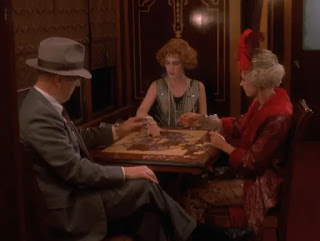
Such a strange episode. I liked the different people on the train as different parts of the Enterprise, but as a whole, "Emergence" had the potential to be the ultimate holodeck story but it just sort of fizzled out. Only two episodes to go! We've been reviewing Next Gen since 2014 and there's only two episodes to go!
We love comments! We moderate because of spam and trolls, but don't let that stop you! It’s never too late to comment on an old show, but please don’t spoil future episodes for newbies.

- Web Channels
- Star Trek: The Next Generation

The computer systems on board the Enterprise begin experiencing repeated malfunctions, leading the crew to suspect that the ship itself may be evolving.

Thomas Kopache
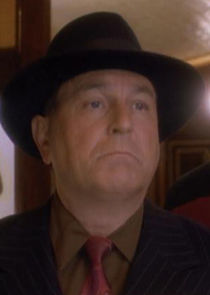
Vinny Argiro
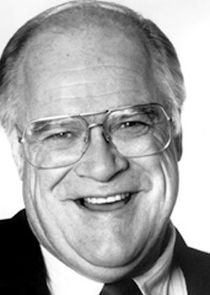
David Huddleston
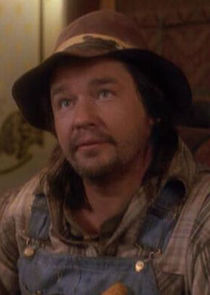
Nick Dimitri
Cast appearances.
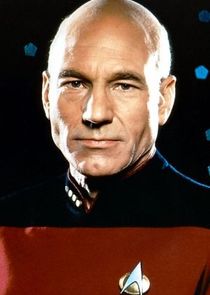
Patrick Stewart
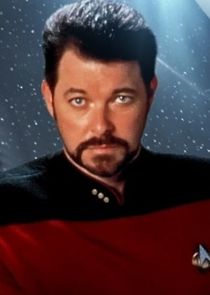

Jonathan Frakes
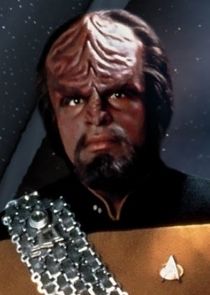
Michael Dorn

Gates McFadden
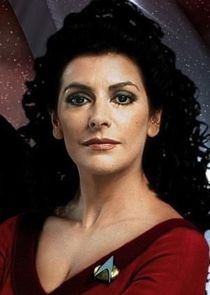
Marina Sirtis
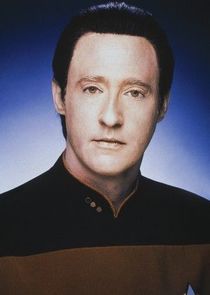
Brent Spiner
Episode discussion.
No comments yet. Be the first!
Screen Rant
Star trek is finally ready to embrace the real final frontier (not space).

Your changes have been saved
Email Is sent
Please verify your email address.
You’ve reached your account maximum for followed topics.
Why It Took Star Trek Almost 24 Years To Visit The Klingon Home World
Star trek confirms doctor phlox's fate centuries after enterprise, spock's famous catchphrase gets a horrifying new twist, as he submits to the franchise's grossest aliens.
- Star Trek introduces a horrifying new universe with exciting implications for the franchise as a whole.
- The multiverse concept plays a significant role in Star Trek , with alternate timelines and realities explored.
- Future Star Trek shows should embrace the multiverse concept to tell strong stories and expand the franchise.
Warning: contains spoilers for Star Trek: Defiant #14!
Star Trek ’s famous opening sequence calls space “the final frontier,” but there are frontiers in the franchise that stretch beyond the galaxy and even the entire universe. Star Trek has utilized the multiverse concept since its earliest days, leaning into it even more in recent years. In Star Trek: Defiant #14, a new (and horrifying) universe is revealed, although it has exciting implications for the franchise as a whole.
Star Trek: Defiant #14 is written by Christopher Cantwell and drawn by Angel Unzueta. Worf and the Defiant’s crew are facing a potential invasion from the “Conspiracy” parasites. Spock attempts a mind meld to learn more, but he is taken over and leaves Worf. Spock makes his way to the Starbase’s power center, cryptically mentioning “the door” opening. As the issue unfolds, it is revealed that the parasites are not from the same universe as Worf and Spock.
Instead, they are from a reality where they are the dominant life form.
The "Conspiracy" Aliens Are Only the Tip of the Star Trek Multiverse
In addition to multiple universes, star trek has many alternate timelines.
Introduced in Star Trek: The Next Generation’s first season episode “Conspiracy,” the parasites wormed their way into Starfleet’s upper echelon. Picard and the crew of the Enterprise are able to stop them, but the episode ends on an ominous note: the parasites sent a signal to…somewhere. The episode never received a follow-up, and became one of the franchise’s biggest dangling plot lines. Previous issues of Star Trek: Defiant hinted the parasites originated from outside the universe, and this issue seems to confirm that. It adds an even darker layer to the parasites, making them even more alien.
This revelation also serves as a reminder that a multiverse exists in the Star Trek franchise. Star Trek has, on many occasions, played with the concept of alternate timelines. Episodes such as “City on the Edge of Forever,” “Yesterday’s Enterprise,” and “Year of Hell” took this particular concept and spun gold out of it. The entire Kelvin series is also alternate timelines. Star Trek has sometimes used the terms “universe” and “timeline” interchangeably. Some refer to JJ Abram’s films as either “the Kelvin Universe” or “the Kelvin Timeline.”
What distinguishes the two is that, with a few exceptions, the Kelvin Timeline unfolded in much the same way as the Prime did, in terms of personality and career choices. Shortly after the first Abrams’ Star Trek film in 2009, IDW launched a series that reinterpreted classic episodes using the Kelvin crew, meaning that events unfolded in both universes in similar fashions. However, Star Trek has also shown realities where everything is completely different, such as the popular Mirror Universe.
Star Trek's Mirror Universe is A Pop Culture Touchstone
Star trek's mirror universe has been featured in the comics as well.
Introduced in the episode “Mirror, Mirror,” airing during Star Trek’s second season, the Mirror Universe has become one of the most endearing in the franchise, and Spock, with his menacing goatee, has become the stuff of pop culture legends.
Introduced in the episode “Mirror, Mirror,” airing during Star Trek’s second season, the Mirror Universe has become one of the most endearing in the franchise, and Spock, with his menacing goatee, has become the stuff of pop culture legends. In the episode, an ion storm sends Kirk, Uhura, Scotty and McCoy to the Mirror Universe. They are horrified by what they found: the Enterprise was not a ship of peace and exploration, but an instrument of evil used by a fascist empire. The episode ends with Kirk placing the seeds of revolt in Mirror Spock’s brain.
The Mirror Universe returned during DC Comics’ Star Trek comic. In The Mirror Universe Saga, running through Star Trek #9-16 and written by Mike W. Barr and drawn by Tom Sutton, the Federation faces an invasion from the Terran Empire. Spock did not go onto implement reforms, and instead doubled down on his fascist ways. Thanks to Kirk and the recently revived Prime Spock, the Federation was able to defeat the Terran Empire, and the story ends with Mirror Spock finally joining the side of good.
Star Trek: Deep Space Nine Flipped the Script on the Mirror Universe
Idw's star trek comics gave fans mirror jean-luc picard.
While this would seem to bring the story of the Mirror Universe to a close, the concept proved too good to let go, and it returned during Star Trek: Deep Space Nine’s second season. In the episode “Crossover,” it was revealed Spock’s reforms worked—all too well. It left the Empire in a weakened state, and it was quickly overrun by the Cardassians and the Klingons. It would go on to appear in two episodes of Star Trek: Enterprise and was a major part of Discovery’s first three seasons and will play a role in the forthcoming Section 31 movie.
The Mirror Universe was still not finished, however, and the comics once again picked up the story. In 2017’s Star Trek: The Next Generation: Mirror Broken, the Terran Empire still exists in the 24th century, albeit in a dilapidated and broken state. Now confined largely to Earth’s solar system, Captain Picard of the ISS Stargazer learns of a new and powerful weapon the Empire is building, one that may be able to restore its former glory. Picard, desperate to make a name for himself, steals the weapon, revealed to be the Galaxy-class Enterprise .
The Star Trek Multiverse Is a Scary Place
Between the "conspiracy" aliens and the mirror universe, it is a truly dangerous frontier.
Most heart-breaking of all was Barclay, who, in the Mirror Universe, was a scheming and cold-hearted man, seeking revenge on those who wronged his family.
IDW released several additional Star Trek: The Next Generation comics set in the Mirror Universe, and they painted a befittingly bleak picture. Deanna Troi, the ship’s empathic counselor, was reframed as the Inquisitor. Standing by Picard’s side, Inquisitor Troi scans everyone, ferreting out the loyal and the dissidents with ruthless efficiency. Most heart-breaking of all was Barclay , who, in the Mirror Universe, was a scheming and cold-hearted man, seeking revenge on those who wronged his family. The Terran Empire was no longer as mighty as it once was, but was still terrifying and disturbing.
The revelation that the “Conspiracy” parasites come from another world in the multiverse might seem to make the concept a terrifying one in the Star Trek mythos. Between the evil Mirror Universe and the utterly alien and disgusting parasites, it would seem the multiverse is full of unsavory characters, and the Federation would be best advised to abandon any research in this area. Yet this need not be the case, and indeed, it could open up new vistas in the Star Trek universe to explore. The franchise is built upon the concept of exploration, making this a logical next step.
Future Star Trek Shows Need to Lean More into the Multiverse Concept
The multiverse is a potentially infinite frontier.
The “Conspiracy” parasites emanating from another universe shows the strength of the multiverse concept as it pertains to the Star Trek franchise. The Mirror Universe has been a key component of the mythos for over 50 years. The “Conspiracy” aliens have been a part of the Star Trek universe for over 30 years, and making this established race part of the larger multiverse shows love for the concept. Future Star Trek media can use the multiverse as a springboard to tell some of the franchise’s strongest stories.
Star Trek: Defiant #14 is on sale now from IDW Publishing!
- More to Explore
- Series & Movies
Published Jun 6, 2024
The Infinite Diversity of Star Trek: Discovery's 32nd Century
A guide to the vibrant variety of sentient species we met during our trip through the 32nd Century!
SPOILER WARNING: This article contains story details and plot points for the fifth season of Star Trek: Discovery.
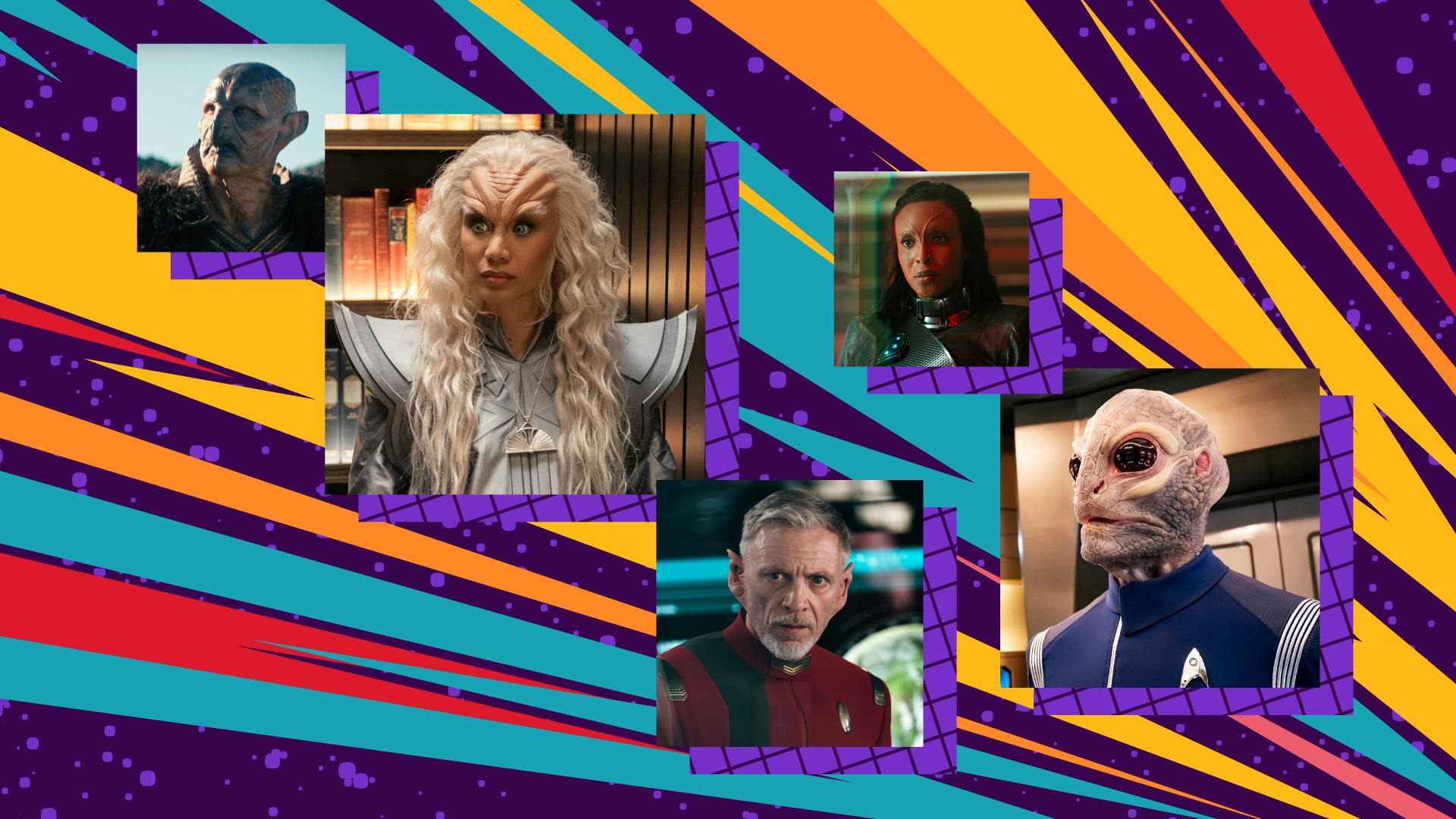
StarTrek.com
The quest for the Progenitors ' life-changing technology came to an astonishing conclusion in Star Trek: Discovery 's series finale, " Life, Itself ," as Captain Michael Burnham decided that such power was too great for any one individual or culture to wield. Since the Progenitors had brought infinite diversity in infinite combinations to the galaxy when they seeded humanoid life throughout the stars, Captain Burnham justifiably believed that the technology's mission had already been fulfilled.
The captain's astute observation was backed up by the vibrant variety of sentient species we met during our trip through the 32nd Century. As our investigation into Discovery 's cultural tapestry begins, we'll focus on some old friends who received more time in the spotlight and the new civilizations which were introduced by the series.
A Kwejian Connection

"The Sanctuary"
Cleveland "Book" Booker's appearance at the moment Michael Burnham arrived in the distant future in "That Hope Is You, Part 1" represented our first contact with the Kwejian, an empathic species capable of communicating with other beings. This fostered a strong connection between the Kwejian and the natural world, as they found great meaning in their planet’s all-encompassing World Root and the heirlooms created from its sap.
Sadly, the Dark Matter Anomaly (DMA) destroyed the Kwejian homeworld in "Kobayashi Maru," leaving Book as one of the last living Kwejian. Despite these hardships, Book continued to cherish the Kwejian way of life by connecting with lifeforms and safeguarding a World Root cutting. The birth of Leto, the son of Book and Burnham, guaranteed that the Kwejian culture would survive into the 33rd Century.
The Betelgeusian Resurgence
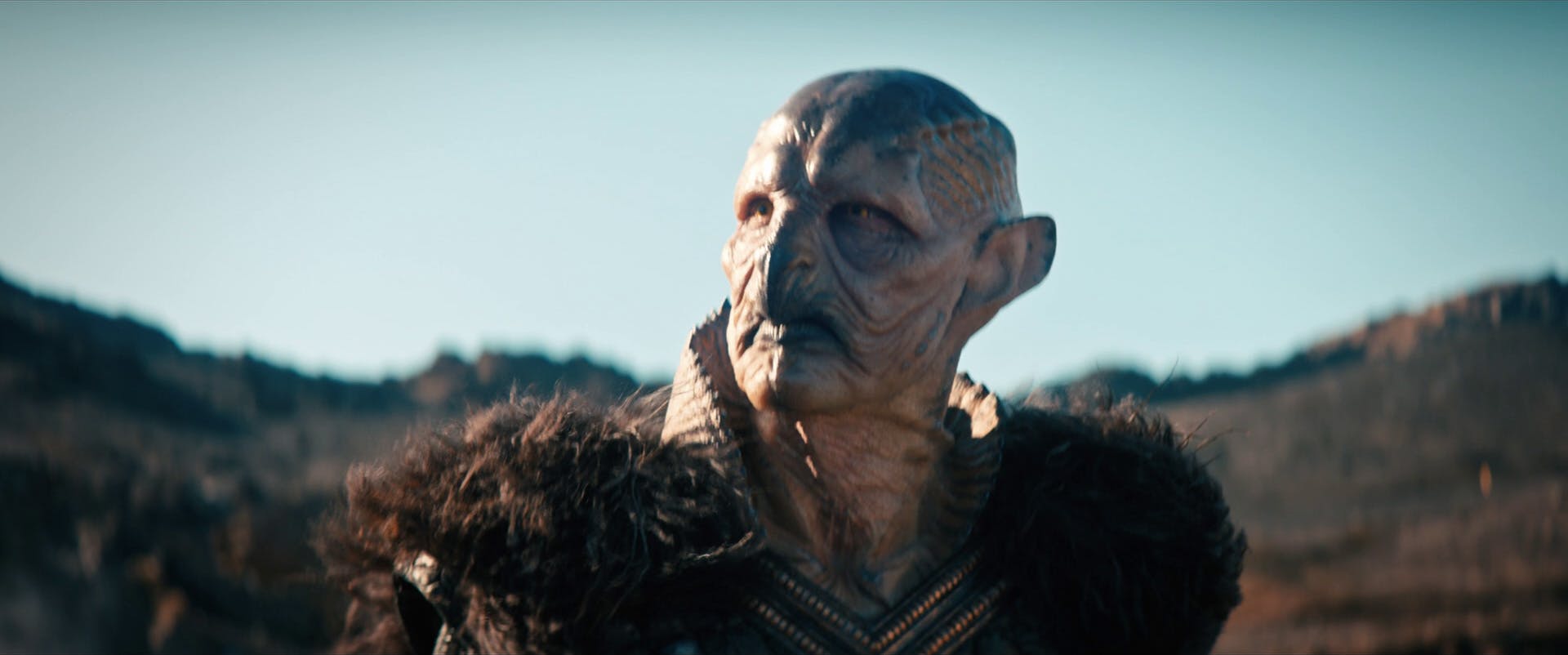
"That Hope Is You, Part 1"
Our earliest 32nd encounters also allowed us to meet Cosmo Traitt, an unscrupulous Betelgeusian courier who trafficked in trance worms. First seen among a crowd of U.S.S. Enterprise crew members in Star Trek: The Motion Picture and later glimpsed in Jett Reno's triage unit aboard the U.S.S. Hiawatha in "Brother," the Betelgeusian species finally took center stage… at least until the Emerald Chain chose to vaporize him for permitting his cargo to get stolen.
In " Terra Firma, Part 1 ," we learned that Commander Yor, a Betelgeusian time soldier, had been the only individual known to have traveled forward in time and across from another dimension prior to the Terran Philippa Georgiou accomplished the same feat. Unfortunately, Yor experienced a grisly death as every molecule in his body fought to either go back in time or return to the Kelvin Timeline.
Understanding the Alshain
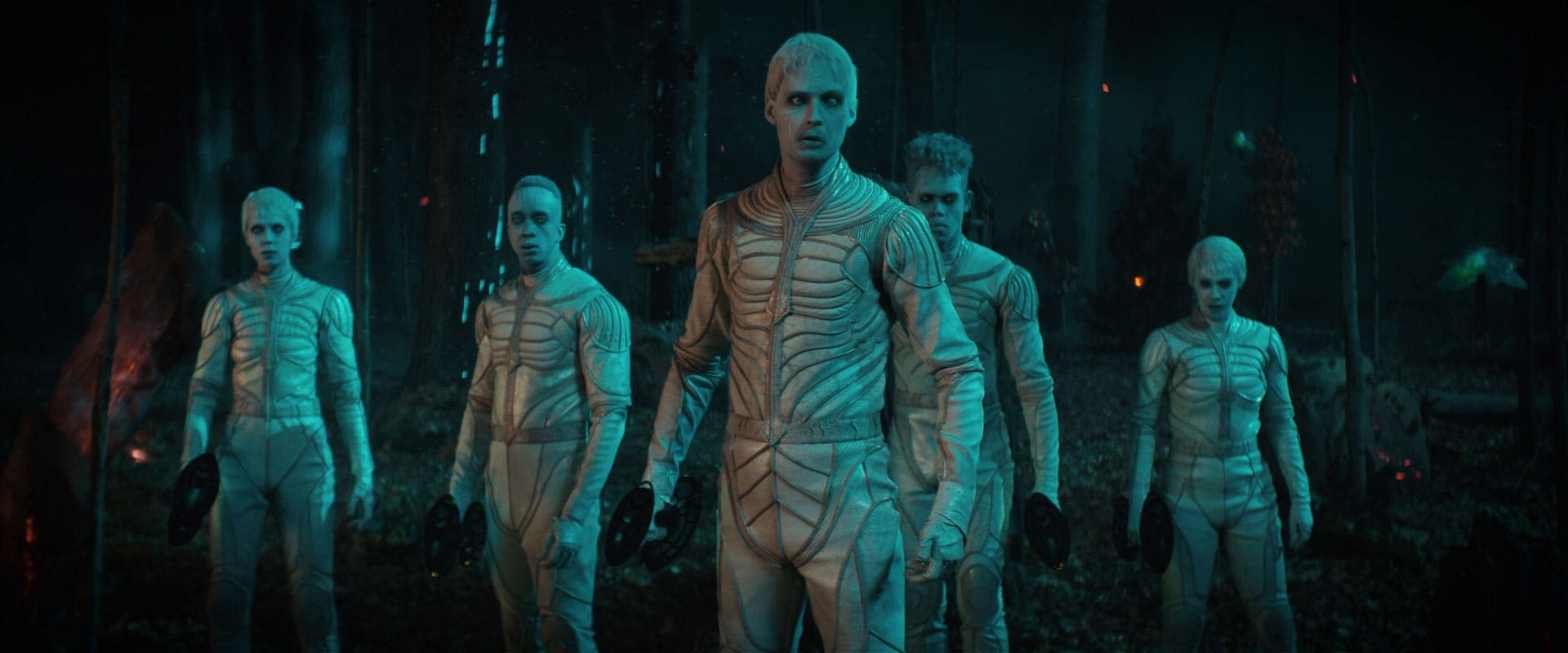
"Kobayashi Maru"
Ruled by Emperor Lee'U, the Alshain greeted Captain Burnham and Book with skepticism when the Federation offered to provide them with "no strings attached" dilithium in "Kobayashi Maru." With a reverence for monarchs and an apparent aversion to carnivores, the Alshain misunderstood Grudge's presence aboard Book's starship and nearly executed their friendly visitors.
Able to deploy delicate wings and utilize their planet's magnetic fields to navigate, the Alshain were forced to build satellites to help compensate for their world's shifting magnetic poles. Those artificial structures needed dilithium to operate, and Burnham's decision to reactivate the equipment played a significant role in easing tensions. The emperor opted to attend the Federation's emergency conference pertaining to the DMA, even going so far as to voice support for the diplomacy and courtesy Burnham exhibited toward his people.
The Eccentric Akoszonam
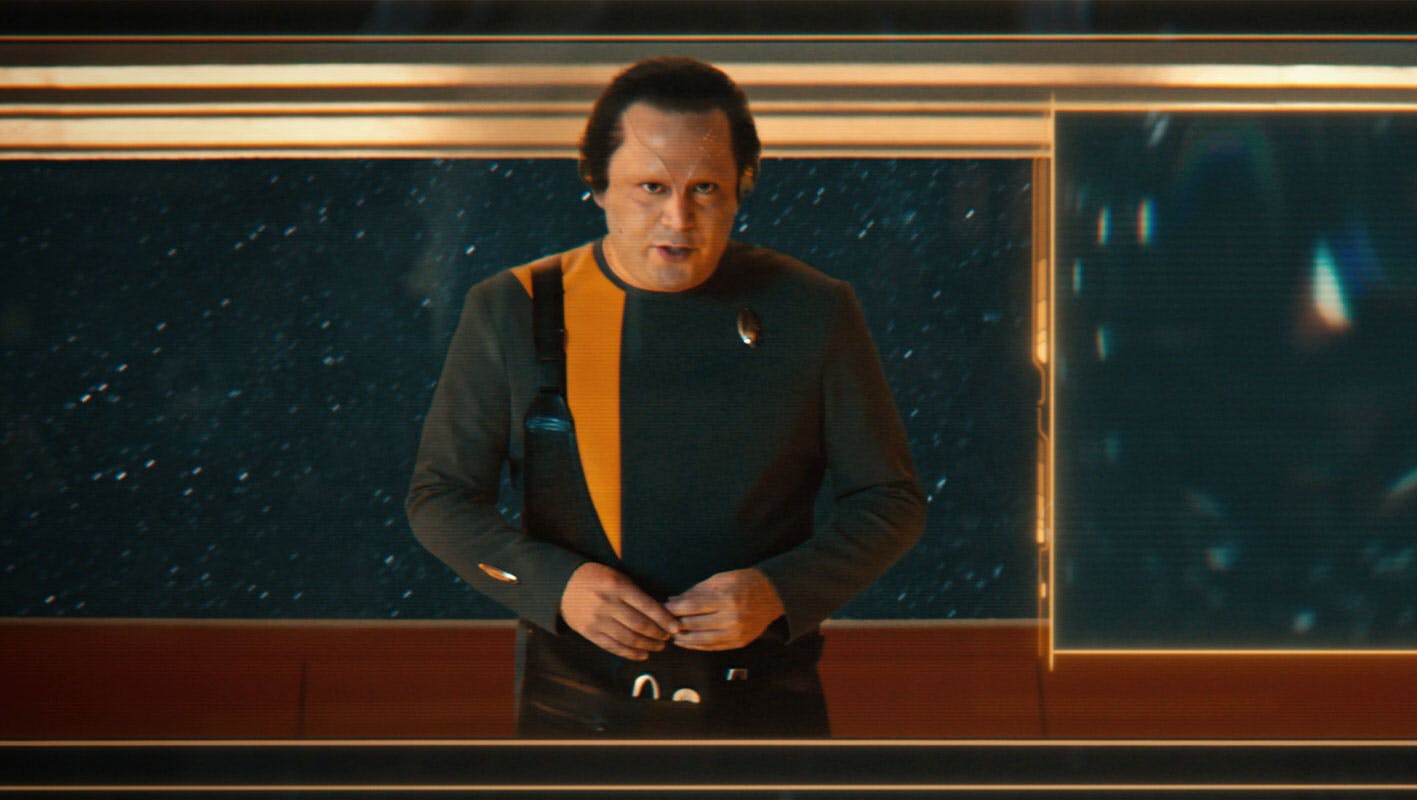
Although the Akoszonam only recently made their Star Trek debut in the Short Trek "Children of Mars," Discovery found an Akoszonam named Kanak working as one of Osyraa's Emerald Chain regulators in " There Is A Tide… ." While that individual endured an icy fate when she was launched out into the frozen void, another Akoszonam also perished in grim fashion during the events of "Kobayashi Maru."
Commander Nalas, the anxious officer who oversaw Starfleet's Deep Space Repair Beta Six, taught us the Akoszonam term "squiddled" — their word for "destroyed beyond repair" — and was impressed that President Laira Rillak knew of his homeworld's wondrous Fissure of Jorat. Panic gripped Nalas after the DMA interfered with his station, and he ultimately died in a fiery crash before he could safely reach Discovery 's shuttlebay.
The Stately Saurian
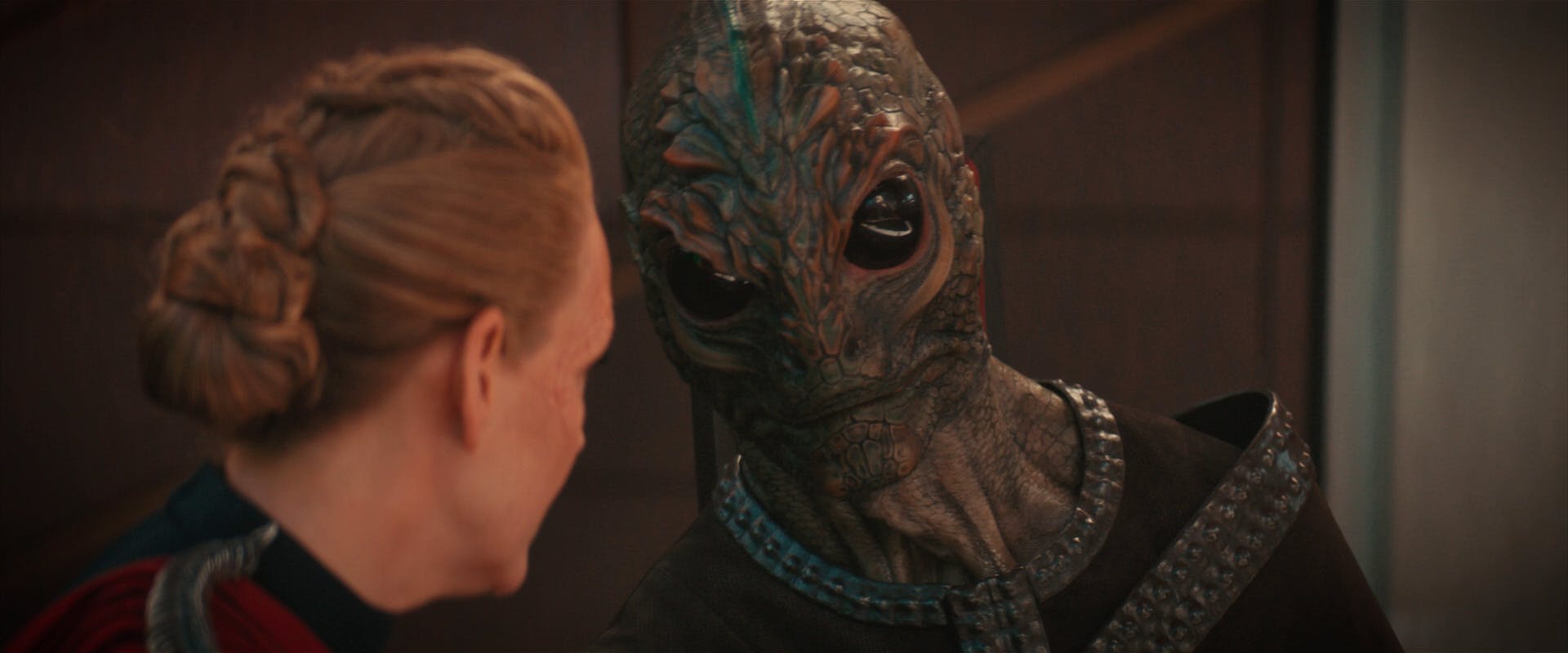
"All is Possible"
The Saurians made their comeback in the form of Discovery 's own Linus in Season 2, but the presence of a Saurian delegate at the final sessions of the Federation's negotiations to bring Ni'Var back into the fold in " All Is Possible " confirmed that the culture, famous for its Saurian brandy and yet another species introduced via a background character in The Motion Picture , thrived within the government body during the 32nd Century.
And, as an added bonus, we were treated to more run-ins with Linus across the show's last three seasons.
Haz Mazaro's Magic

"All In"
Even though his species was never mentioned by name, the multifaceted proprietor of Haz Mazaro's Karma Barge made quite the impression in "All In." Always prepared with a clever nickname for his customers or a creatively descriptive saying, Haz Mazaro ran a gambling establishment at the front of his business and presided over illicit sales in its back room.
A friend of both Burnham and Book, his facility became a hub for galactic controversy when the captain deduced that her partner would go to Haz to obtain isolynium for Ruon Tarka's unauthorized anti-DMA weapon. Haz's personality displayed an odd blend of extroverted affection and nefarious intentions, but he seemed to genuinely consider Book and Burnham to be his friends.
An Entreaty to Species Ten-C
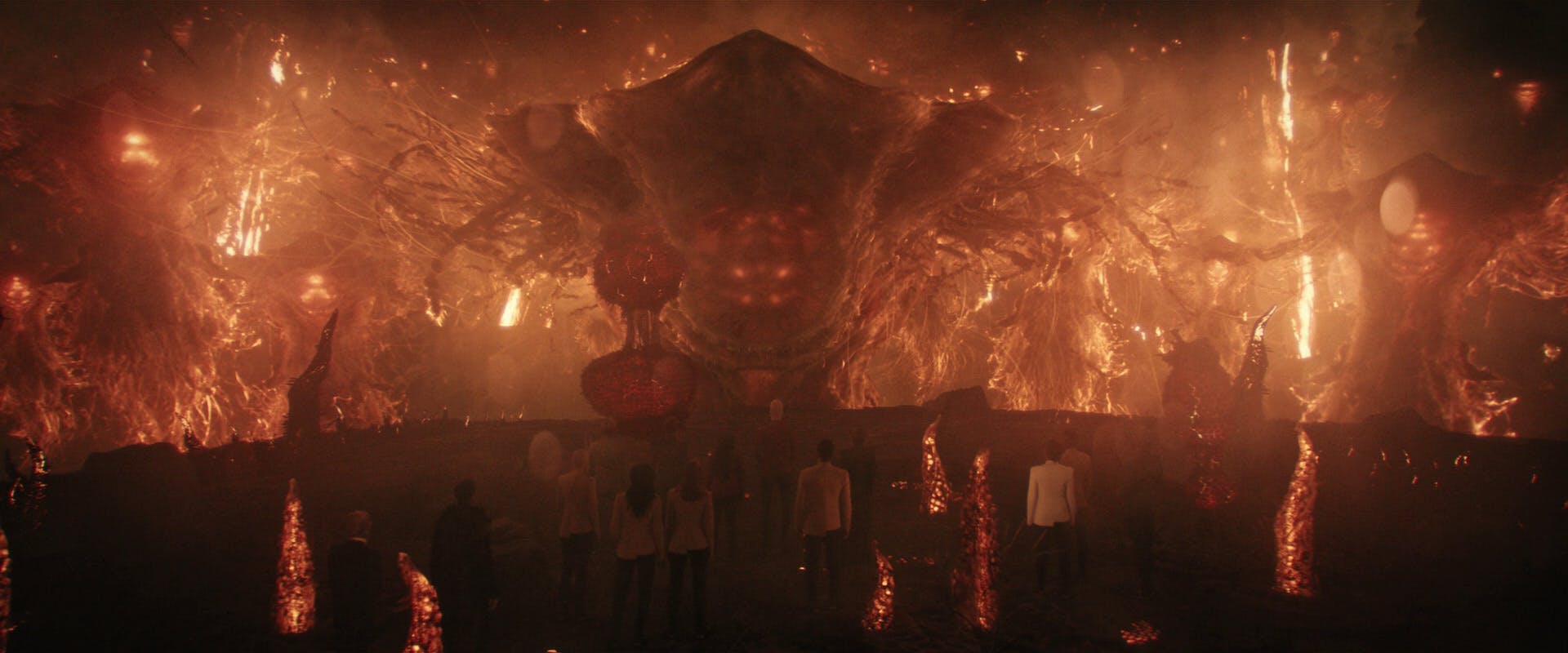
"Coming Home"
As the designation the Federation assigned to the culture that constructed the DMA, Unknown Species Ten-C did not reflect the highly-advanced civilization's actual name. With their planet having undergone a cataclysm, Species Ten-C relocated to another star system and fabricated an immense hyperfield to maintain their privacy.
Unaware that their DMA caused harm to other sentient life, the Ten-C unleashed it upon the galaxy to mine the boronite necessary to power the field. Captain Burnham and her crew discovered that the Ten-C communicated by emitting hydrocarbons and light patterns to express emotional inflection and context, a revelation that enabled them to convince Species Ten-C to halt the DMA and attempt to clean up the toxic mess it left behind in "Coming Home."
The Kellerun Commander

"Face the Strange"
Before reemerging in Discovery 's " Red Directive ," our sole confrontation with the Kellerun occurred in Star Trek: Deep Space Nine 's " Armageddon Game ." Depicted as centuries long enemies of the T'Lani who engaged in a vicious war involving biomechanical gene disruptors, the Kellerun became so dedicated to peace that they were willing to kill those familiar with how to create the infectious weapon.
By the 32nd Century, Kellerun had suffered under a harsh occupation led by Primarch Tahal of the Breen Imperium . Rayner, the Kellerun who would go on to serve as Discovery 's new Number One, resisted the Breen and witnessed his entire family die on Tahal's orders. Those traumas left unimaginable scars that fostered Rayner's ongoing disdain for the Breen.
A New Day for the Selay
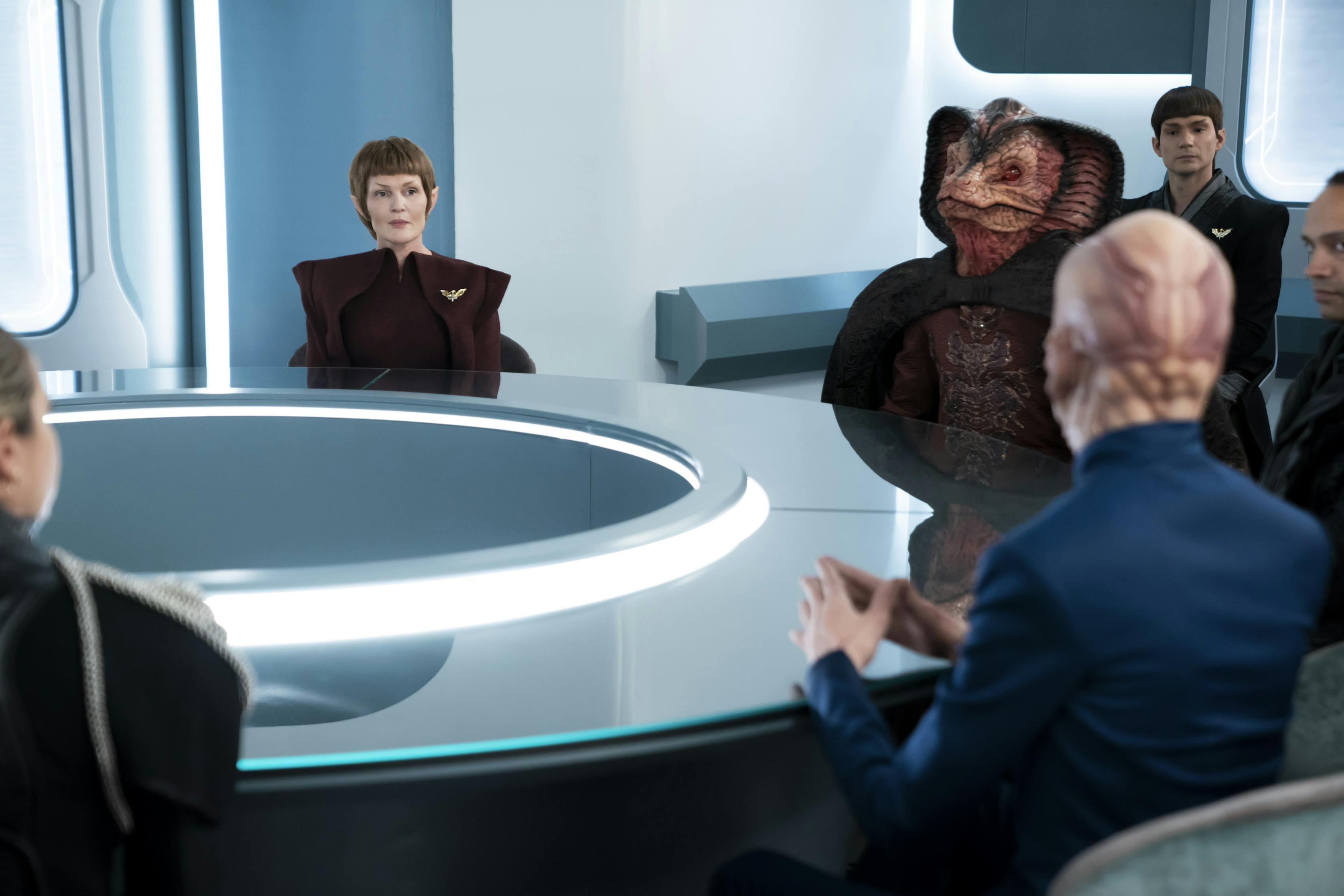
"Jinaal"
If the relationship between the Kellerun and T'Lani seemed extreme, then the Selay and Anticans' violent hijinx in Star Trek: The Next Generation 's " Lonely Among Us " will shock you even more. Though both species petitioned for Federation membership prior to their voyage, the two delegations hunted each other as the U.S.S. Enterprise -D transported them to their conference. The Anticans even took quite the interest in a meal that strongly resembled a missing Selay delegate.
In " Jinaal ," a Selay's attendance at an important meeting within the halls of Federation Headquarters indicated that his government's application had been approved at some point in the previous 800 years.
An Efrosian Archivist

"Labyrinths"
While an Efrosian bridge officer served aboard the U.S.S. Saratoga when Admiral Kirk took his jaunt through time in Star Trek IV: The Voyage Home , the Federation president from Star Trek VI: The Undiscovered Country stood as Star Trek 's most famous Efrosian until Discovery 's " Labyrinths ."
That installment brought us Hy'Rell, the delightfully chipper and well-read Efrosian archivist who spent her days assisting visitors to the Eternal Gallery and Archive. Eager to share her extensive knowledge and greet all those who came in peace, Hy'Rell nevertheless proved willing to raise the library's shields, threaten to sentence troublemakers to its oubliette, and revoke agitators' access to the station's invaluable collection of cultural treasures.
An Eclectic Committee
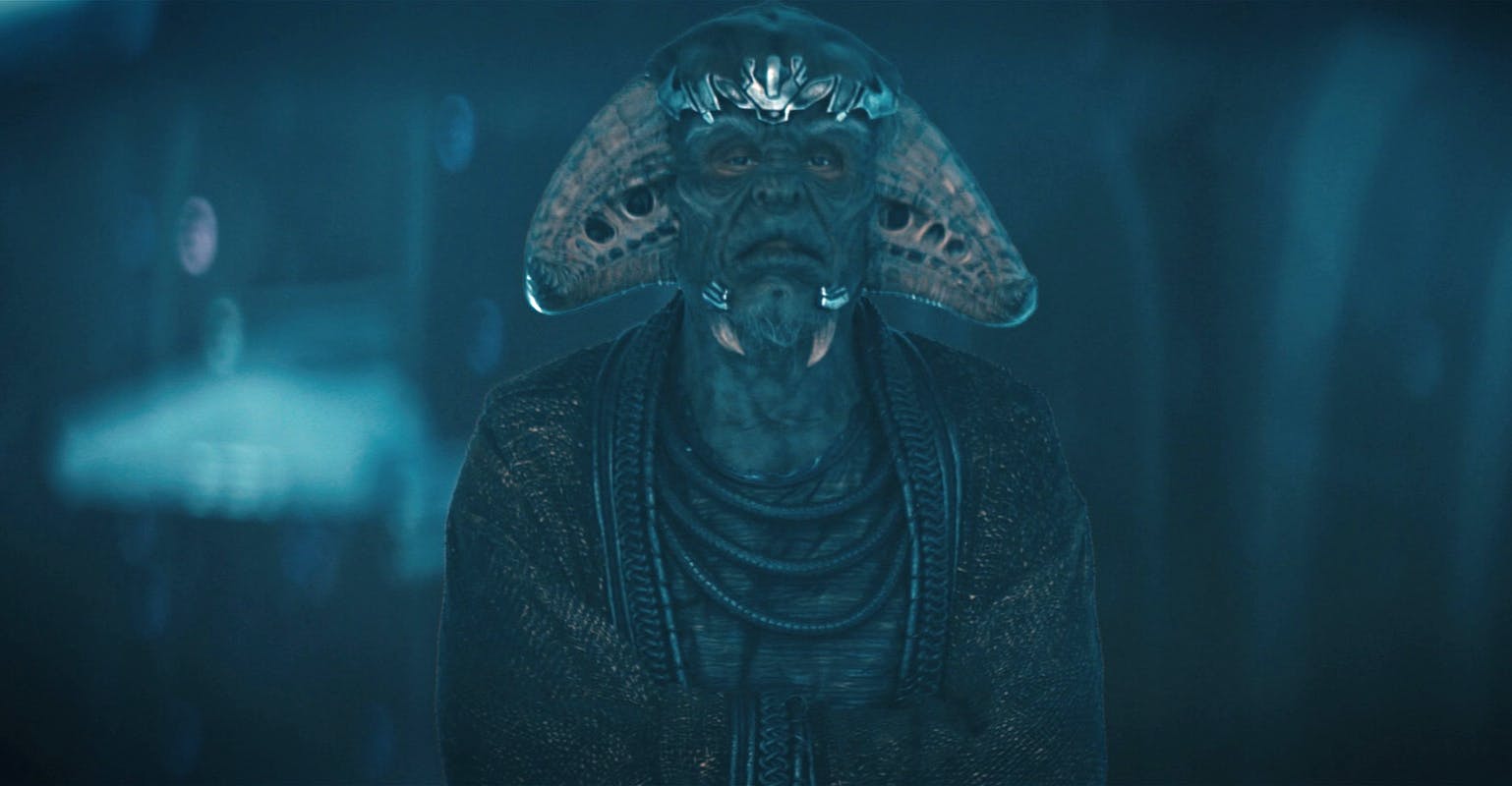
"...But to Connect"
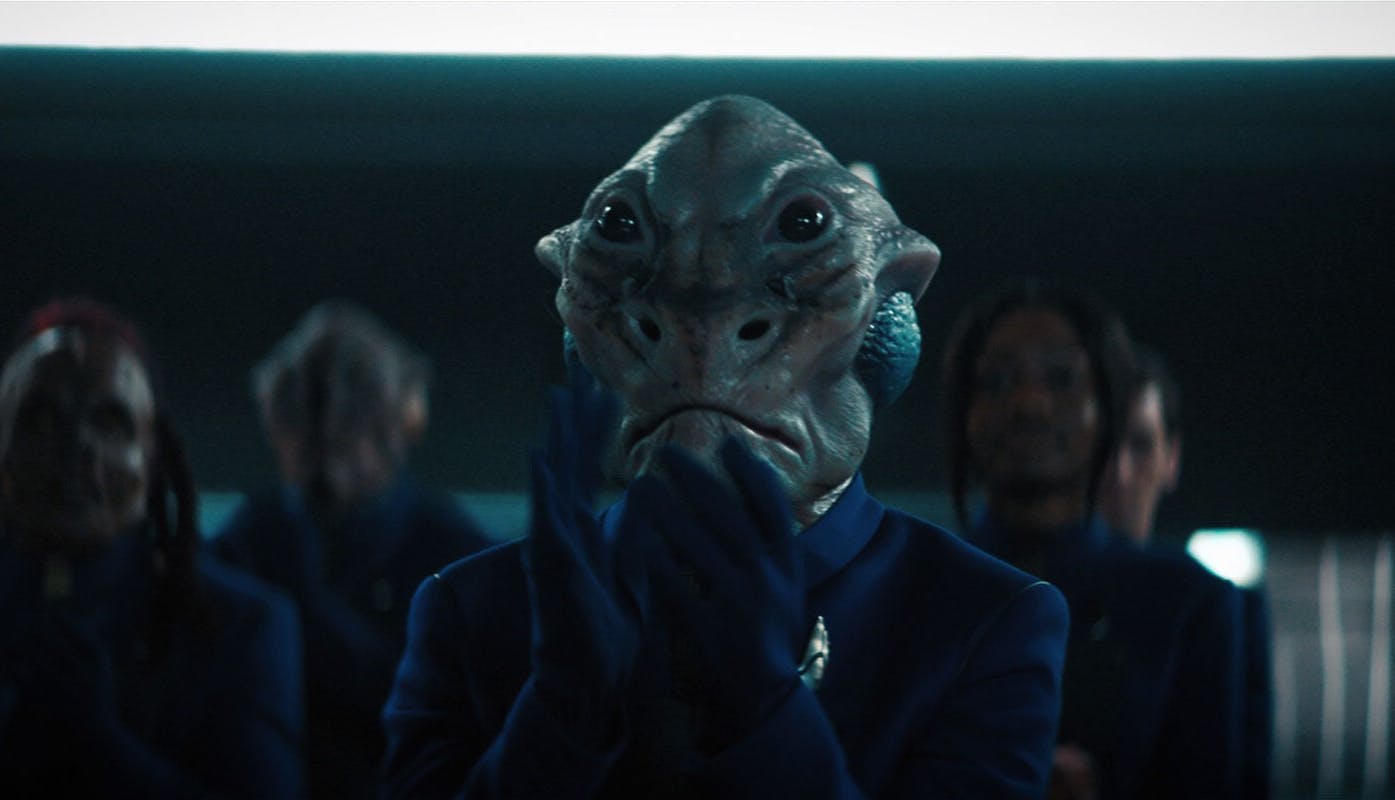
We'd be remiss if we didn't at least mention the multitude of unnamed species present throughout Discovery 's third, fourth, and fifth seasons. Most notably, many such cultures dispatched delegates to attend the Federation's DMA conference in "...But to Connect."
From a species which lost countless probes in the DMA to another that liquidated a wealth of latinum to figure out how to get a ship inside the anomaly, this grand assembly showcased the interstellar community's bustling and diverse nature.
Get Updates By Email
Jay Stobie (he/him) is a freelance writer, author, and consultant who has contributed articles to StarTrek.com, Star Trek Explorer, and Star Trek Magazine, as well as to Star Wars Insider and StarWars.com. Learn more about Jay by visiting JayStobie.com or finding him on Twitter, Instagram, and other social media platforms at @StobiesGalaxy.
Star Trek: Discovery Seasons 1-4 are streaming exclusively on Paramount+ in the U.S., the UK, Canada, Switzerland, South Korea, Latin America, Germany, France, Italy, Australia and Austria. Seasons 2 and 3 also are available on the Pluto TV “Star Trek” channel in Switzerland, Germany and Austria. The series streams on Super Drama in Japan, TVNZ in New Zealand, and SkyShowtime in Spain, Portugal, Poland, The Nordics, The Netherlands, and Central and Eastern Europe and also airs on Cosmote TV in Greece. The series is distributed by Paramount Global Content Distribution.
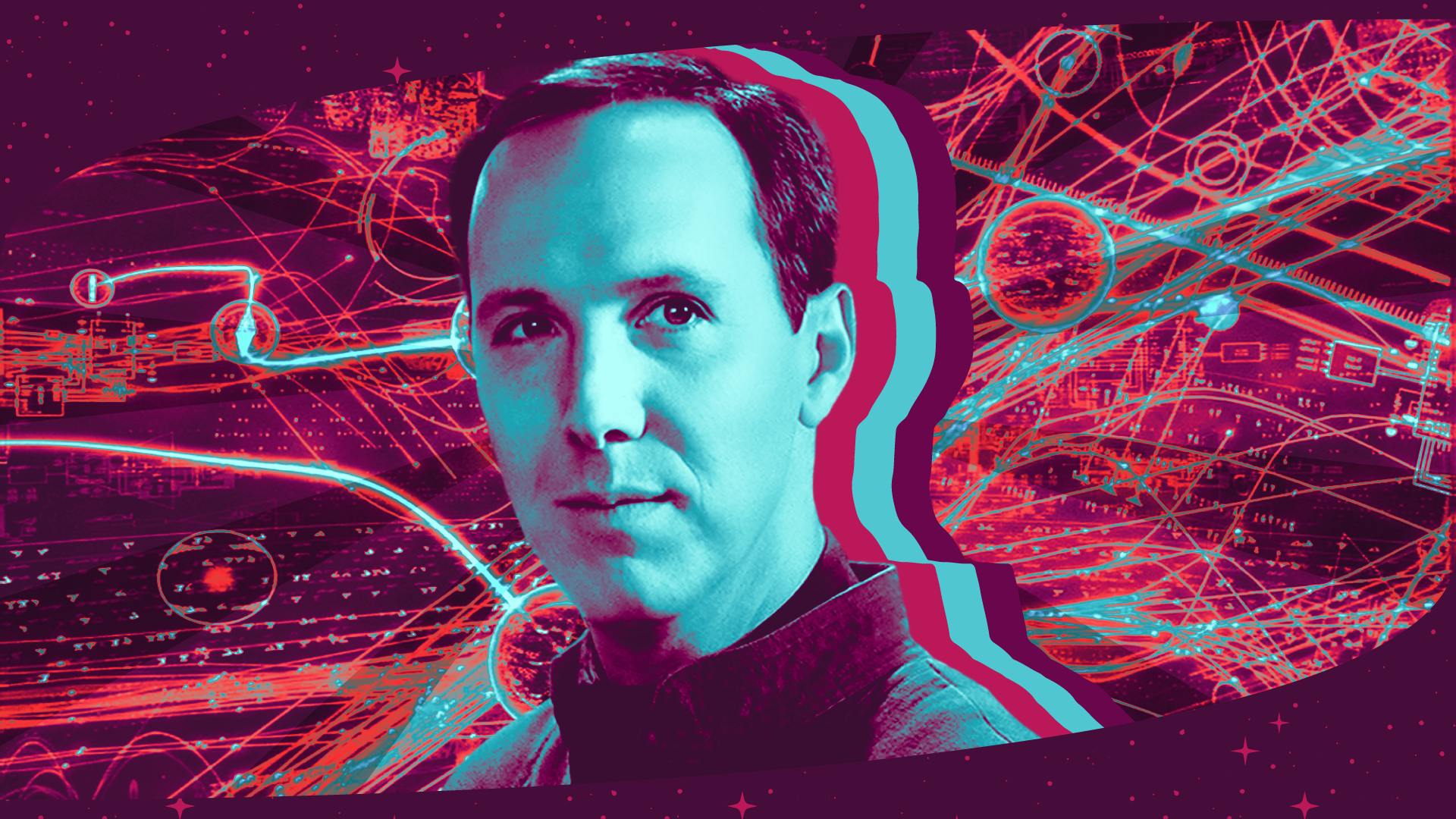
Game information
Patch 30 – Release notes
By Star Trek 11 May 2021
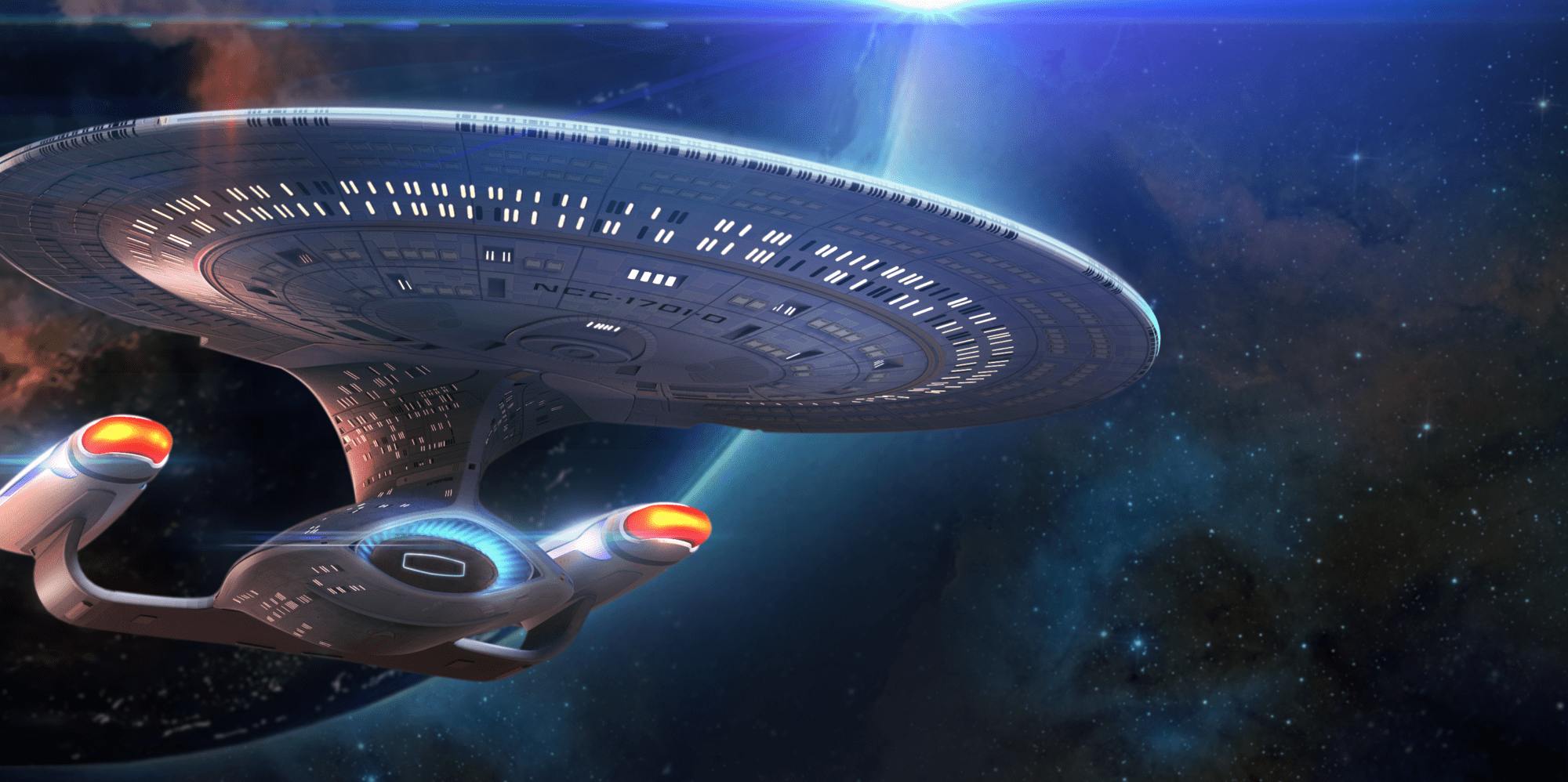
Commanders,
Today, there’s nowhere in the Alpha Quadrant where you can find more excitement. Star Trek: The Next Generation is here. We now begin an extended arc that embraces the iconic timeline of the Star Trek franchise. Join this long-term mission through undiscovered systems, with new content: officers, refits, events and much more.
This month, along with The Next Generation, we’re also launching a brand new feature previously mentioned in our Roadmap Update : Away Teams!
Introducing Star Trek: The Next Generation!
“I know that I am Lieutenant Commander Data of the Federation starship Enterprise. But I do not know how I ended up here, or what happened to the ship. ”
A strange encounter leads you to a discovery: the crash site of a Starfleet ship from a parallel universe: the USS Enterprise-D. Something terrible has happened, leaving its crew scattered across the galaxy, with no method of communication, and no way to return. The only one left on board is the android known as Data.
It quickly becomes apparent that something terrible has occurred. While Data doesn’t recall what happened upon the ship’s arrival, the damage and ruin left in its wake points to a calculated and malicious attack. Something or someone did not want the Enterprise crew in this galaxy.
And with the crew stuck on unfamiliar planets, and possibly in danger, it’s up to you to find them. Reunite the crew of the Enterprise. Can you solve the mystery of their arrival, and the events leading up to the crash?
The first part of Star Trek: The Next Generation in May includes:
- Away Teams feature
- New Officers Epic Data, Rare Beverly, Epic Geordi.
- New cadets Officers Data, Beverly, La Forge, Troi, Riker.
- Twenty TNG missions
- New Battle Pass
- Ten new Avatars
- Eleven new Frames
New Feature: Away Teams
The Away Teams feature allows you to dispatch officers who are not assigned to ships to assignments across the Galaxy! Make sure that you have the right officers for the assignment at hand. When an Away Team is successful, they bring back unique rewards!
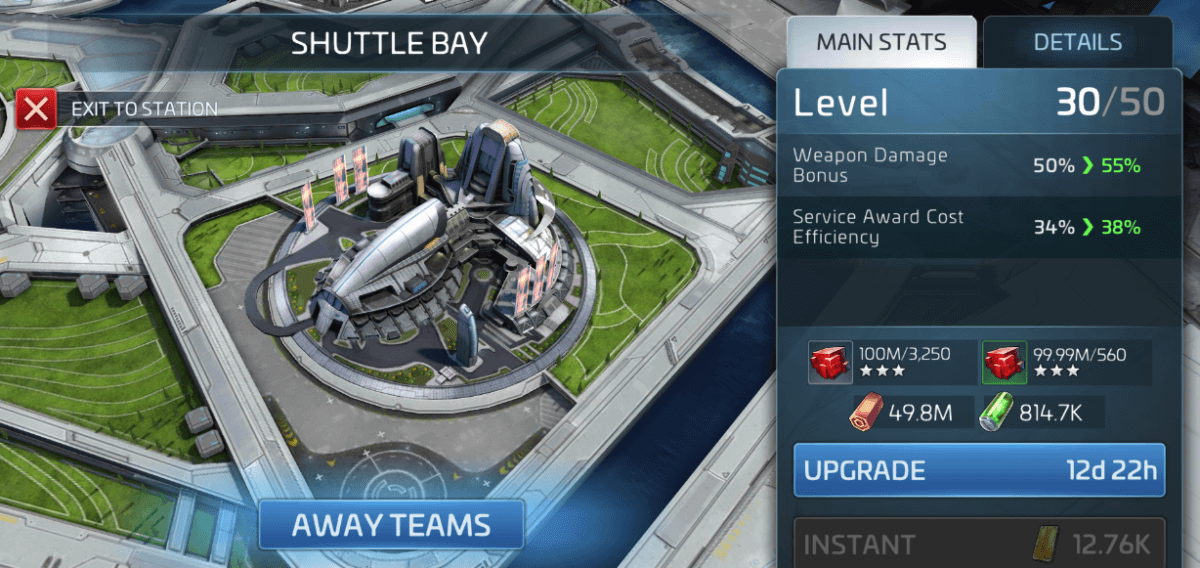
- A weapon damage buff to all starships
- A cost efficiency buff for the Away Teams research tree
- On launch day, the Station research required to build the building and also the building itself will require a Shuttle Bay Particle to unlock. These two required particles will be freely distributed in Gift chests to all players level 8+.
- Away Team assignments can be Common, Uncommon, Rare, and Epic, with higher rarities giving greater rewards. Common and Uncommon are free to start, while Rare and Epic require ‘Star Chart’ tokens that are earned by completing less challenging Away Team assignments.
- Away Team assignments can take up to a couple of hours or even several days to complete. However, assignments can be sped up using a new ‘Away Team Assignment Speed Ups’ resource
- Assignments that you do not undertake (in other words, those that are not currently in-progress) will be automatically refreshed every 12 hours. You can also manually refresh them at any time using a new resource ‘Assignment Refresh Tokens.’
- Away Teams brings with it a new research tree containing 71 nodes to unlock using ‘Service Awards’ and ‘Merits of Honor’ that you will earn by completing assignments successfully.
You can read more about Away Teams on this dedicated page on our site !
New Officers
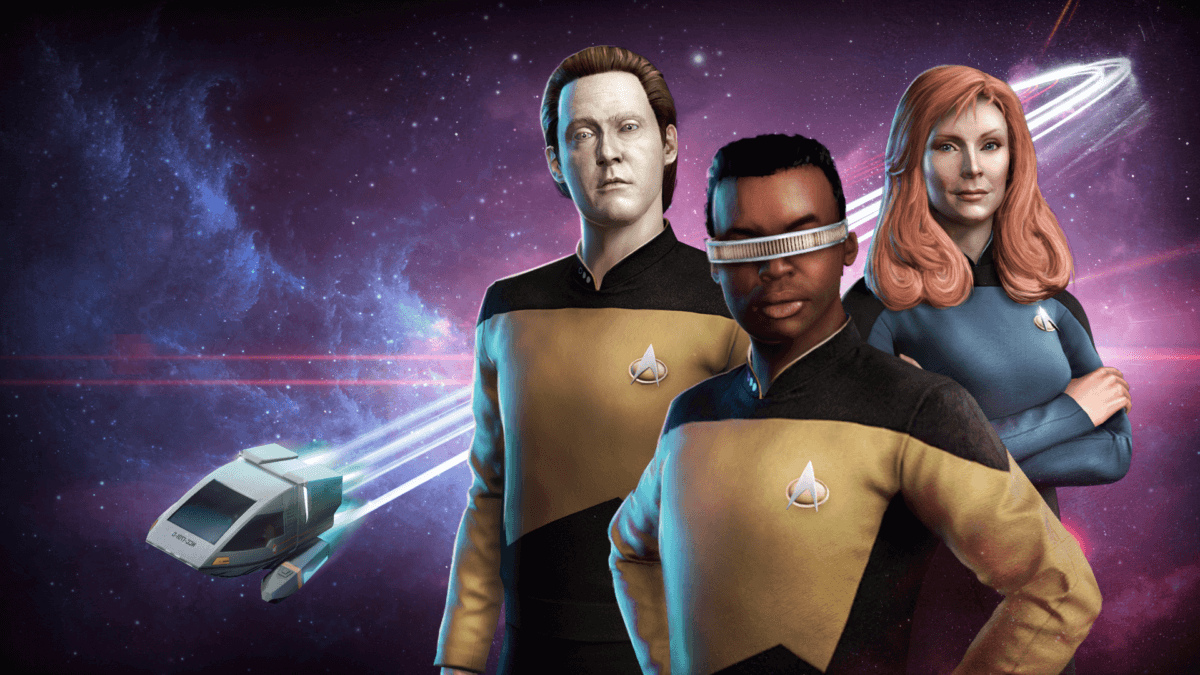
- Increase Crit Chance against hostiles/armadas by X%
- Against non-player targets, increase Penetration by X%
- When fighting armadas/hostiles, heal SHP every round by X% of crew Health
- When fighting armadas/hostiles, increase Mitigation by X% of crew Defense
- Increase rewards dropped from defeated Armadas
- Increase Damage vs. Klingon hostiles/armadas by X%
- Increase all Bridge Officer stats by +X%
- Increase Weapon Damage by +X%
- Increase Bridge Officer Health by +X%
- Increase CM Effectiveness by +10%
- Reduce opponent Weapon Damage by -X%
- Increase SHP by +X%
- Increase all Mitigation stats by +X%
- Increase damage of first round shots by +X%
- Increase Bridge Officer Attack by +X%
New Missions
The Next Generation landed in our universe and brought twenty new bespoke missions for you to progress through, assisting the new faces coming into our galaxy. Go and help the Enterprise’s crew!
Battle Pass
We have a new Battle Pass to begin The Next Generation arc. Claim officer shards, missions, cosmetics, resources, Away Teams resources, and more by taking part in events throughout the month, and earn your rewards!
- 1 Uncommon Spot Avatar
- 1 Epic Data Avatar
- 1 Epic Geordi Avatar
- 1 Rare Beverly Avatar
- 1 Uncommon Next Gen Troi Avatar
- 1 Uncommon Poker Chip Avatar
- 1 Rare Shuttle Bay Avatar
- 1 Rare Shuttlecraft Avatar
- 1 Epic Cardassian Insignia
- 1 Epic Away Teams Avatar
- 1 Epic Geordi Visor Frame
- 1 Uncommon Poker Chips Frame
- 1 Uncommon LCARS Frame
- 1 Epic Cardassian Ridges
- 1 Rare Transporter Frame
- 1 Epic Holodeck Frame
- 1 Uncommon Shuttlecraft Mk. I Frame
- 1 Uncommon Shuttlecraft Mk. II Frame
- 1 Rare Shuttlecraft Mk. III Frame
- 1 Rare Shuttlecraft Mk. IV Frame
- 1 Epic Shuttlecraft Mk. V Frame
Improvement – NPC Portraits
Our hard working Rigellian is finally getting some well deserved time off. We’ve improved on our NPC portraits for mission objectives, and now you will be able to see the correct opponent for the enemy you are targeting.
Additional Improvements
- Archived missions are now accessed through the mission panel through a dedicated button at the bottom of your missions list. The old ‘Archived’ tab has been replaced with the new Away Teams tab.
- Added support for links inside event objective tooltips. Stay tuned for this in future events, where for example you can just tap a link inside the event description or objective and directly go to an event system.
- Officers can now be sorted in Alphabetical order.
- Fixed an issue with the battle log where all the officers’ skills were shown instead of only the ones that were effectively activated.
- Fixed an issue with the resource icon that was missing on the “Cargo Lost” panel after viewing a battle report with no cargo lost/won.
- Fixed an issue with the XP shown above the ship that was different from the one inside the battle report.
- Fixed an issue where the “Convert Latinum” popup was showing up instead of the “Insufficient Resource” when attempting to summon a ship while having insufficient Cultivated Mycelium.
- Fixed an issue with long Alliance announcements that were not scrollable.
- Fixed a visual issue caused when trying to repair a ship destroyed during an Armada “federation outpost” in the ship management screen.
- Fixed an issue with Leviathan Part 10 mission where the Panel image wasn’t showing up.
- Fixed an issue with the Scrapyard that was causing multiple options to get selected.
- Fixed an issue where commas didn’t separate the numbers appearing in local notifications for event updates.
- Fixed an issue where Leaderboards data were empty when reinstalling or updating the game until the player made progress.
- Fixed an issue with Doomsday Armada that appears to be in another system while locating another ship.
- Fixed an issue that was showing Module level as 0/0 while upgrading.
- Fixed an issue with Dilithium & Tritanium that counted as “0” after converting the resources using latinum.
- Fixed an issue that was causing an “exception_error_200” when claiming a deactivated/expired bundle.
- Fixed an issue with long event descriptions that were not scrollable after viewing a short event description.
- Fixed an issue where the player inventory wasn’t scrolled all the way to the top when entering any tab.
- Fixed an issue with USS Franklin-A thumbnail that didn’t display correctly on some Android devices.
- Fixed an issue that was showing up an incorrect string of Armada Name and Description when tapping “i” in the full scan screen view.
- Fixed an issue with the target reticle being visible in the officer reveal screen while opening any bundle containing officer shards during a combat.
- Fixed an issue with the slider in the Inventory screen not showing up for players to select how many tokens to unpack.
- Fixed an issue with second Research and Builder queues that were missing for some players.
- Fixed an issue with Second Research Queue and main Research that were upgrading the same research simultaneously.
- Fixed an issue with Second Builder and main Builder that were upgrading the same building simultaneously.
- Fixed an issue causing the game to be stuck on the Officer upgrade screen after fully leveling up an officer.
- Fixed an issue with Swarm Armadas that are not shown as Rare armadas despite requiring Rare directives.
- Fixed an issue with Galaxy chats that were appearing on the alliance chat or private chat.
- Fixed an issue with Warp display icons that were placed in the wrong systems.
- Fixed roughly six localization issues.
DON’t miss THESE from AROUND THE GALAXY
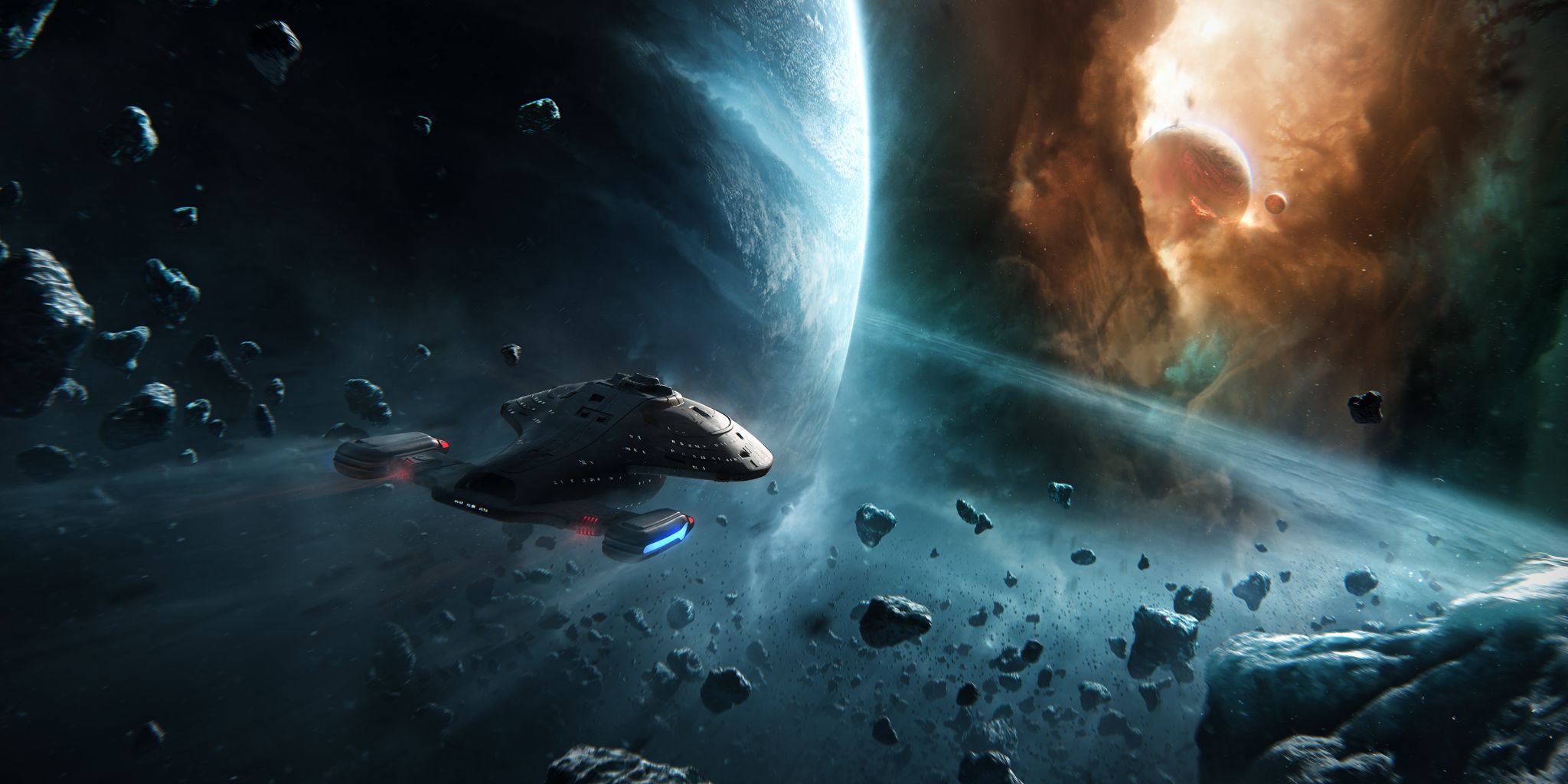
Update 56.1 - Patch Notes
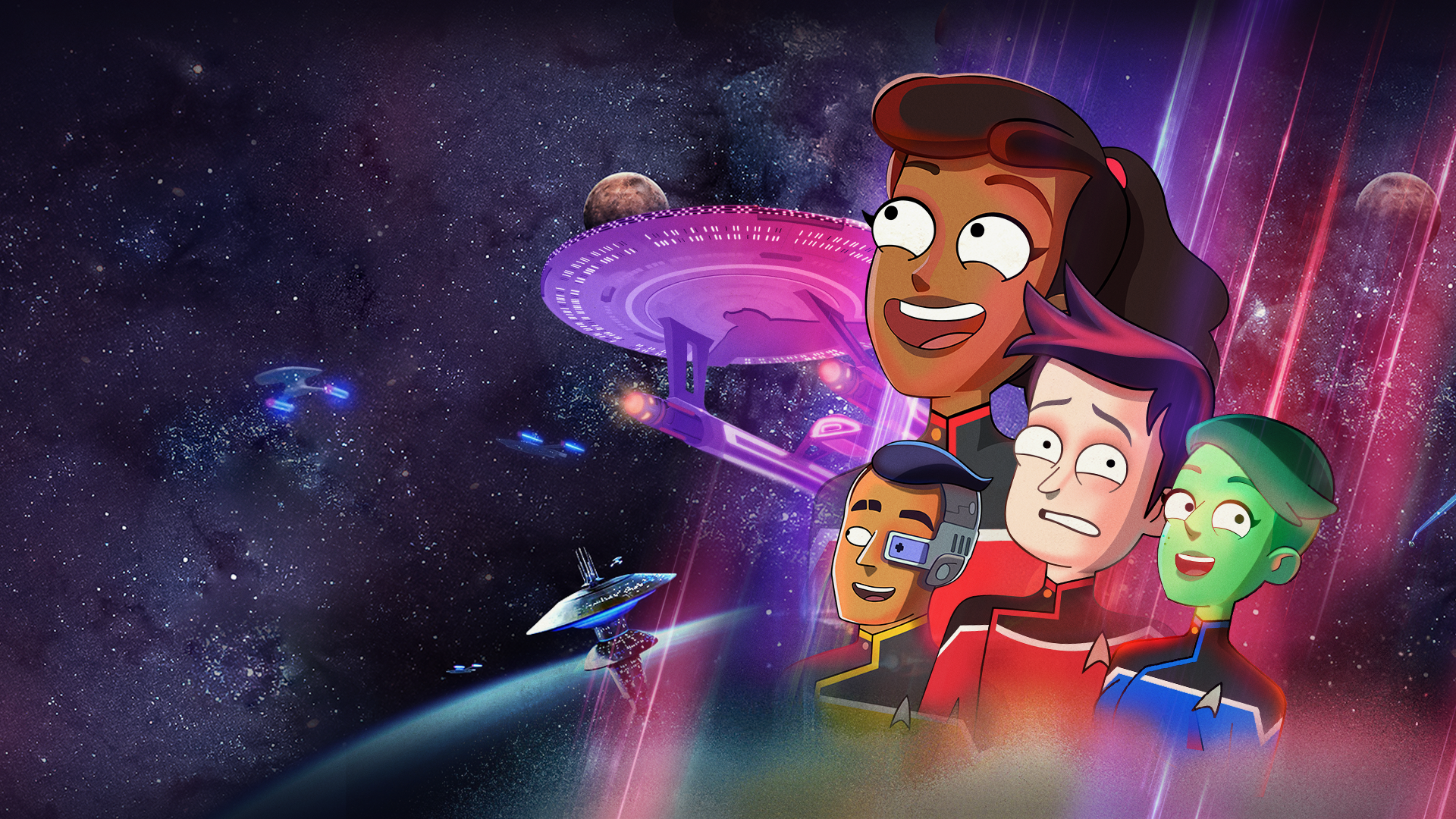
Update 41.1 - Release Notes
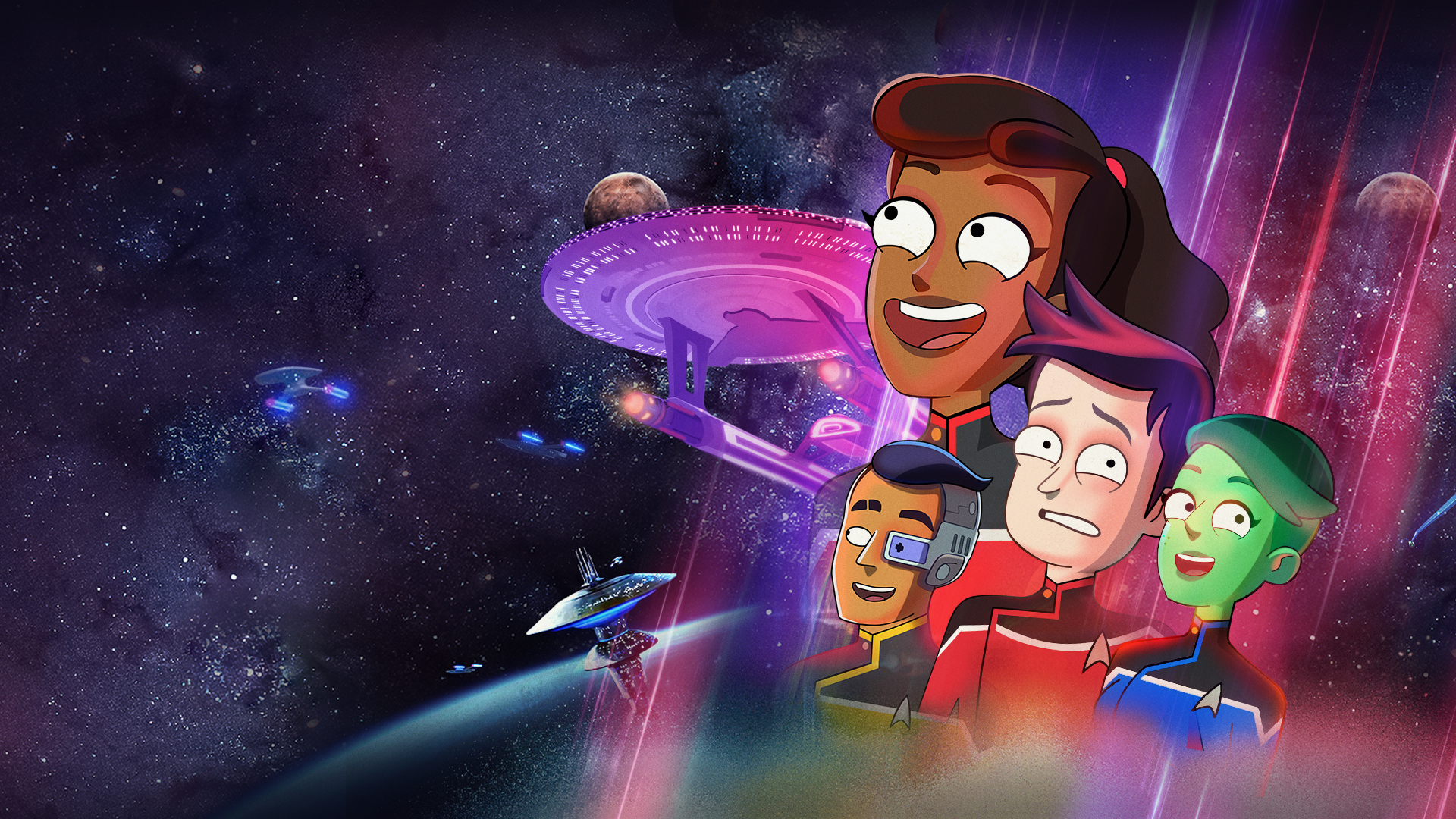
Patch 41 – Release Notes
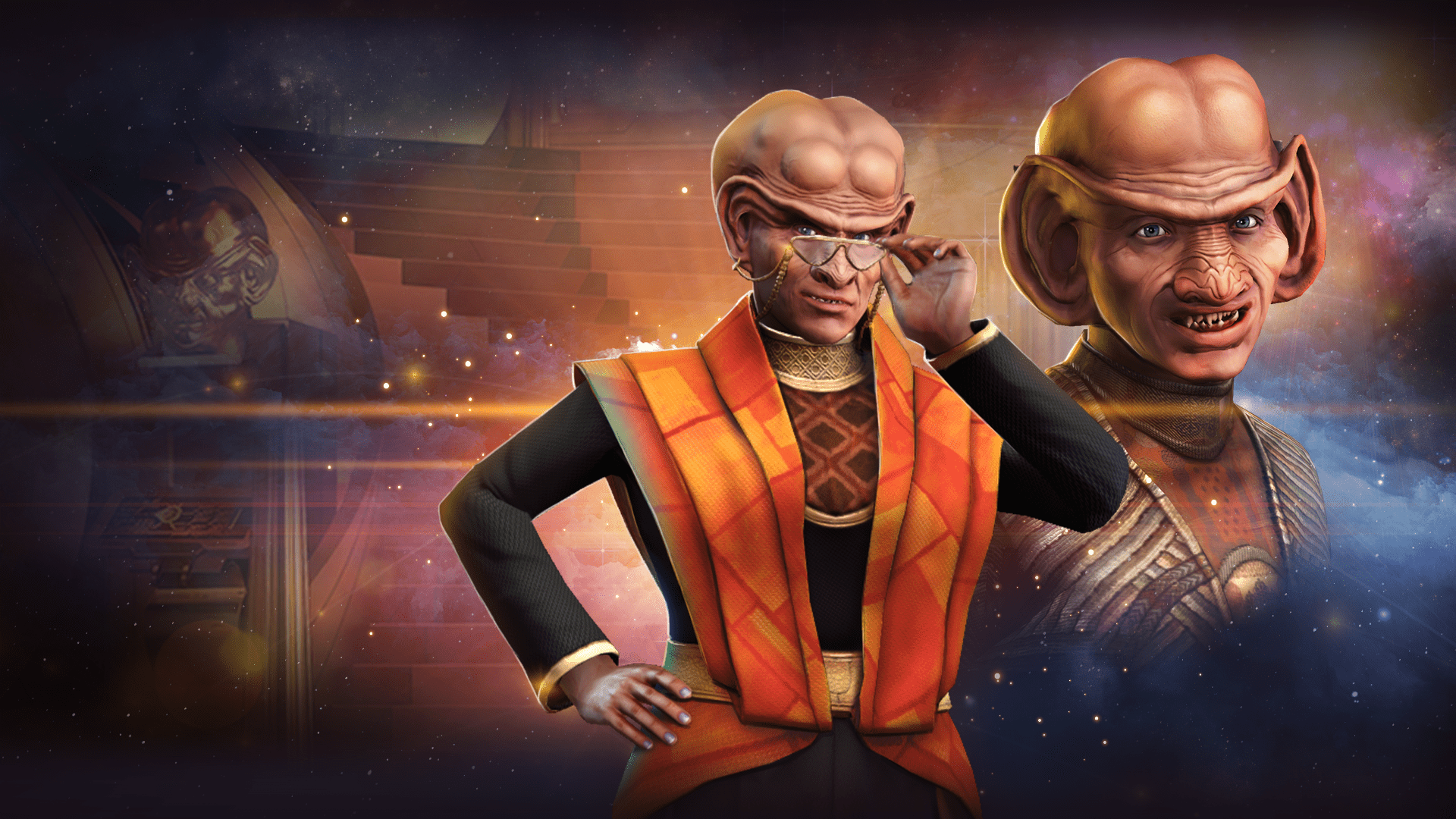
Patch 40 - Release Notes
Take the conn, download star trek fleet command today.
- AVAILABLE FOR -
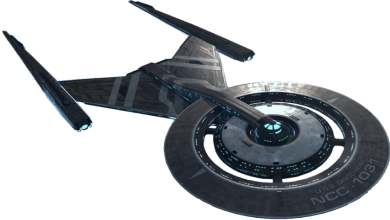
STAY INFORMED AND DON’T LOSE YOUR PROGRESS!
Subscribe for exclusive updates on our launches & more! Sync your progress across platforms and devices
- Cast & crew
- User reviews
Star Trek: The Next Generation

Set almost 100 years after Captain Kirk's 5-year mission, a new generation of Starfleet officers sets off in the U.S.S. Enterprise-D on its own mission to go where no one has gone before. Set almost 100 years after Captain Kirk's 5-year mission, a new generation of Starfleet officers sets off in the U.S.S. Enterprise-D on its own mission to go where no one has gone before. Set almost 100 years after Captain Kirk's 5-year mission, a new generation of Starfleet officers sets off in the U.S.S. Enterprise-D on its own mission to go where no one has gone before.
- Gene Roddenberry
- Patrick Stewart
- Brent Spiner
- Jonathan Frakes
- 321 User reviews
- 162 Critic reviews
- 39 wins & 61 nominations total
Episodes 176

Photos 3429

- Captain Jean-Luc Picard …

- Lieutenant Commander Data …

- Commander William Thomas 'Will' Riker …

- Lieutenant Commander Geordi La Forge …

- Counselor Deanna Troi

- Lieutenant Worf …

- Doctor Beverly Crusher …

- Enterprise Computer …

- Wesley Crusher …

- Chief Miles O'Brien …
- Youngblood …

- Lieutenant Natasha 'Tasha' Yar …

- Doctor Katherine Pulaski …

- Nurse Alyssa Ogawa …

- Ansata Terrorist …

- Ensign Ro Laren …

- Keiko O'Brien …
- All cast & crew
- Production, box office & more at IMDbPro
Stellar Photos From the "Star Trek" TV Universe

More like this

Did you know
- Trivia Almost everyone in the cast became life-long friends. At LeVar Burton 's 1992 wedding, Brent Spiner served as best man, and Sir Patrick Stewart , Jonathan Frakes , and Michael Dorn all served as ushers. Man of the People (1992) (#6.3) aired on that day.
- Goofs It is claimed that Data can't use contractions (Can't, Isn't, Don't, etc) yet there are several instances throughout the series where he does. One of the first such examples is heard in Encounter at Farpoint (1987) , where Data uses the word "Can't" while the Enterprise is being chased by Q's "ship".
[repeated line]
Capt. Picard : Engage!
- Crazy credits The model of the Enterprise used in the opening credits is so detailed, a tiny figure can be seen walking past a window just before the vessel jumps to warp speed.
- Alternate versions The first and last episodes were originally broadcast as two-hour TV movies, and were later re-edited into two one-hour episodes each. Both edits involved removing some scenes from each episode.
- Connections Edited into Reading Rainbow: The Bionic Bunny Show (1988)
User reviews 321
- Jun 1, 1999
- How many seasons does Star Trek: The Next Generation have? Powered by Alexa
- Who is the captain of the USS Enterprise?
- Did any cast members of the original Star Trek series appear in The Next Generation?
- September 26, 1987 (United States)
- United States
- Official Facebook
- Official site
- Star Trek: TNG
- Donald C. Tillman Water Reclamation Plant - 6100 Woodley Avenue, Van Nuys, Los Angeles, California, USA (location)
- Paramount Television
- See more company credits at IMDbPro
Technical specs
- Runtime 45 minutes
- Dolby Stereo
Related news
Contribute to this page.
- IMDb Answers: Help fill gaps in our data
- Learn more about contributing
More to explore
Recently viewed.
‘Star Trek: Prodigy’ Saved at Netflix; Season 2 to Debut in 2024
It'll begin streaming the first season by the end of 2023.
Picture: Paramount
Netflix has announced that it will be saving the short-lived Paramount+ series Star Trek: Prodigy, which recently had its second renewal order scrapped. After shopping the project, Netflix has announced it’ll soon be the new streaming home for both season 1 in 2023 and season 2 in 2024.
Aimed at younger audiences, Star Trek: Prodigy is one of many Star Trek shows (or at least was) produced exclusively for Paramount+ and what was then called CBS All Access.
20 episodes of the series have aired thus far, with season 1 being released across two parts. Season 1, part 2, was released on Paramount+ between October 2021 and February 2022, while part 2 dropped weekly between October 2022 and December 2022.
Created by Kevin & Dan Hageman, the 3D animated series followed a motley crew of young aliens finding themselves living aboard an abandoned Starfleet ship. Brett Gray, Ella Purnell, Jason Mantzoukas, Angus Imrie, Rylee Alazraqui, Dee Bradley Baker, Jimmi Simpson, John Noble, and Kate Mulgrew lent their voices to the series.
In June 2023, Paramount+ joined other streamers like Disney in purging some of its content from the platform, including the first season of Star Trek: Prodigy . In addition, it reversed the season 2 renewal order. That season was already deep into production, and reports at the time suggested that it would be allowed to be shopped to other networks.
Season 2 will be released exclusively on Netflix in 2024
Fast forward to today, and Netflix has announced it’ll be the new home for both season 1, which will drop in late 2023 (keep an eye on our coming soon section for more), and will also exclusively launch season 2 at some point in 2024.
On October 11th, Netflix Tweeted :
“Star Trek: Prodigy is coming to Netflix! Season 1 of the animated series launches onto Netflix later this year while a brand new Season 2 is slated to debut in 2024”
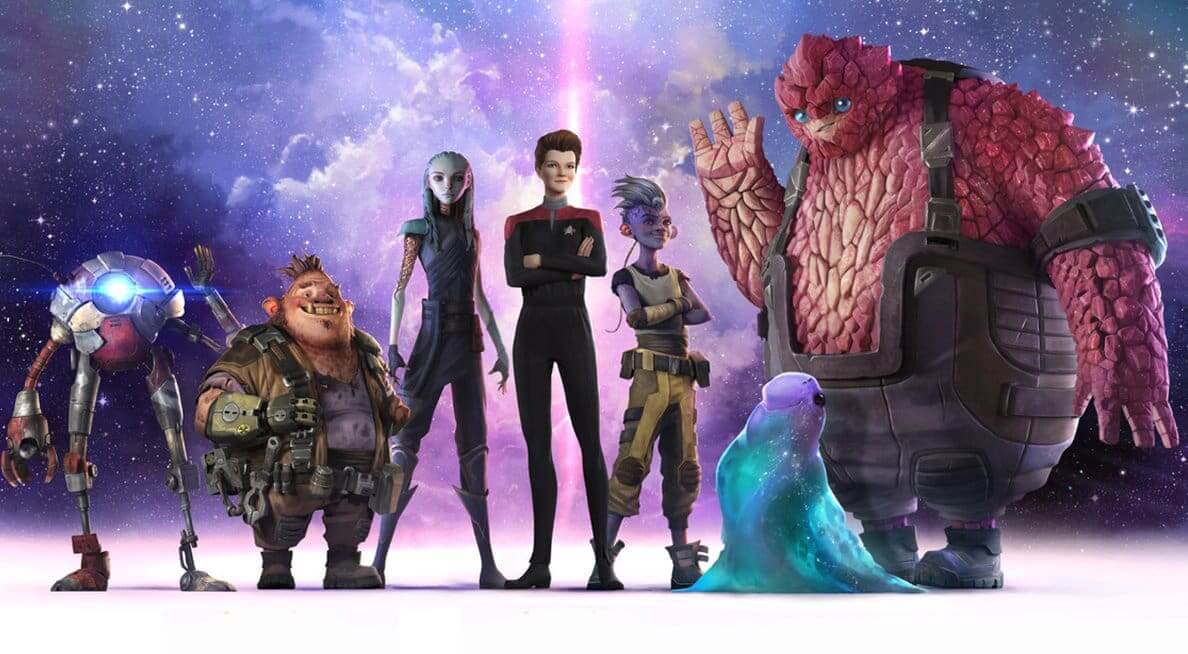
Picture: Paramount+
In a joint statement on Alex Kurtzman’s social pages, they thank the fans of the show and state that “they can’t wait to share it [season 2] with the amazing fans around the world.”
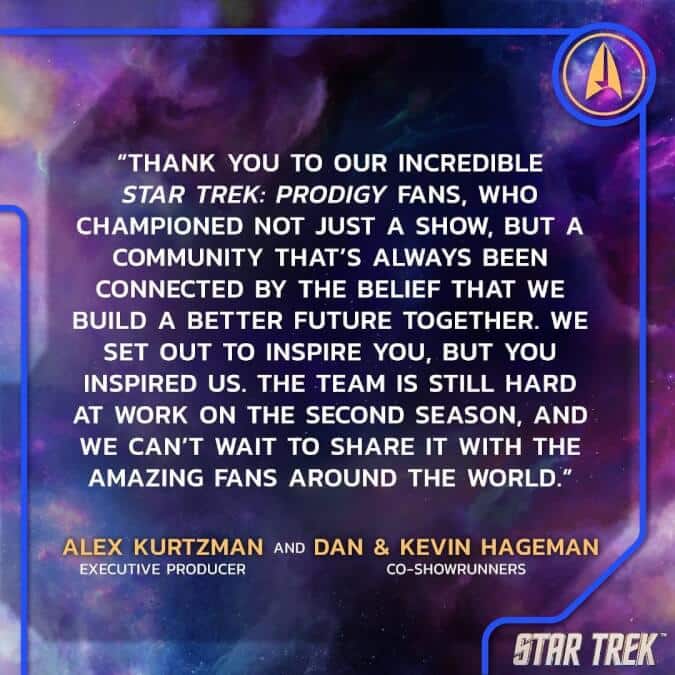
Statement by Alex Kurtzman and Dan & Kevin Hageman on the Star Trek: Prodigy revival
Aaron J. Waltke, a producer and screenwriter on Star Trek: Prodigy , posted shortly following the announcement with the hashtag “WeSavedStarTrekProdigy,” saying:
“At last, we can share the news… Star Trek: Prodigy has landed! Our show is beyond thrilled to be joining NETFLIX for the ongoing adventures of the Protostar crew. Star Trek fans across the galaxy — and young cadets in the making — have been granted the chance to see our series, many for the very first time. With a truly global audience, it is an extraordinary opportunity to grow our already formidable fanbase. It is in no small part thanks to you, the fandom — who demonstrated through your extraordinary efforts that the stories of Starfleet, and the outsiders who aspire to it, will endure. We are so deeply humbled and grateful beyond words. Many on the Prodigy team, including myself and the Hagemans, have created some exceptional television with Netflix — and we very much look forward to doing so again. The possibilities are endless now that the world can see all 40 episodes of Prodigy’s first and second seasons in one place which our passionate cast and crew have worked so tirelessly on – with the potential for more as we boldly go and seek out this new horizon. If you wish to see more Dal and Gwyn and Rok-Tahk and Zero and Jankom and Murf, viewing the show on Netflix as soon as it drops – and telling others the good news, to do the same — is unequivocally the way. There’s not much more to say. Other than… Go fast. Spread the word. Together… …We Saved Star Trek: Prodigy. Set a course for home.”
This is part of a recent strategy shift from Paramount Global, which has been much keener on licensing titles, to places like Netflix. Earlier in 2023, we saw them shop Ripley to Netflix, which was originally due to be released on Showtime. That’s in addition to other licensing, such as Super Pumped: The Battle for Uber being licensed in the US in October 2023 after being yanked from Paramount+.
On the kid’s side, we’ve also seen them license some of its Nickelodeon content to the service in recent years and work on a brand new Original Spongebob movie scheduled for 2024. We also see Nickelodeon titles arrive exclusively on Netflix from the 2019 output deal that includes the Erin & Aaron, slated for a November release .
At one point, Netflix was streaming home to the majority of older Star Trek shows. It had the complete collection of Deep Space Nine , Voyager, Enterprise, The Next Generation , and even The Animated Series for a period of time, but they slowly departed throughout 2021 and into 2022 .
Internationally, Netflix was also the distributor for Star Trek: Discovery until late 2021, when the first three seasons (marked as Netflix Originals) were unceremoniously removed , with all future seasons exclusive to Paramount+.
Are you looking forward to Star Trek: Prodigy being part of Netflix’s lineup? Let us know in the comments below.
Founder of What's on Netflix, Kasey has been tracking the comings and goings of the Netflix library for over a decade. Covering everything from new movies, series and games from around the world, Kasey is in charge of covering breaking news, covering all the new additions now available on Netflix and what's coming next.
More on Star Trek: Prodigy
- ‘Star Trek: Prodigy’ Season 2 Confirms July 2024 Netflix Return
- Upcoming Netflix Movies and Series Coming in 2024
- What’s Coming to Netflix This Week: Christmas Day to New Year’s Eve, 2023
Newest Articles - Netflix News and Previews
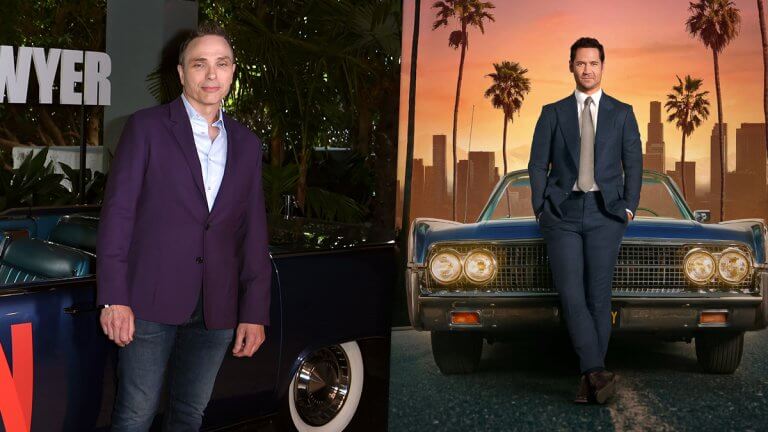
'The Lincoln Lawyer' Showrunner Talks Season 3 & Why Netflix Was The Perfect Home Over CBS
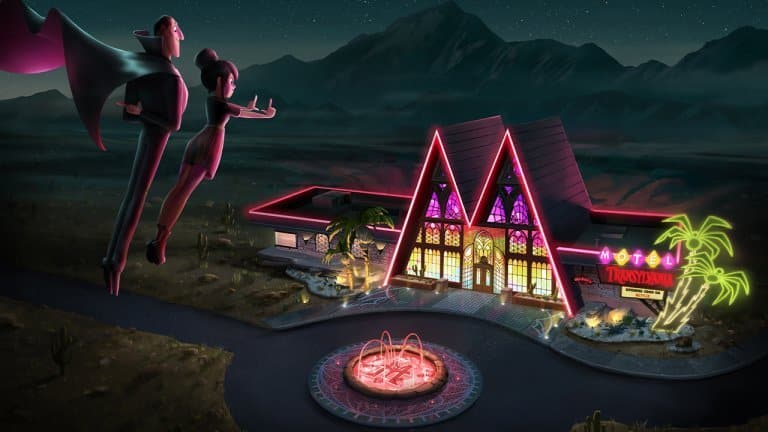
'Motel Transylvania' Sony Animation TV Series Coming to Netflix in 2025
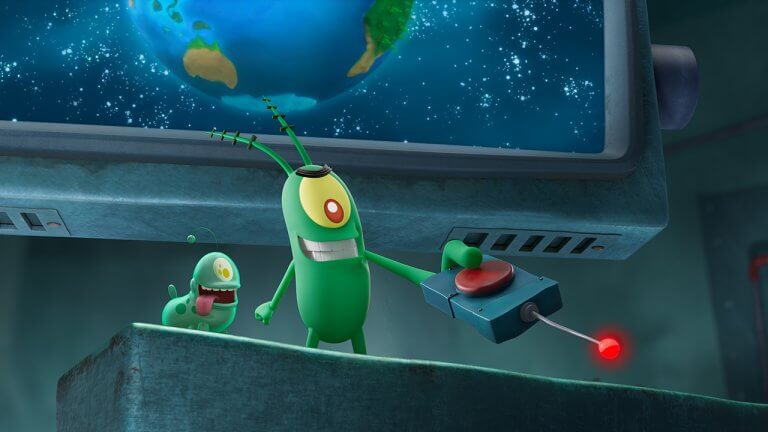
'Plankton: The Movie': Second SpongeBob SquarePants Movie Drops on Netflix in 2025

When will 'Bad Boys: Ride or Die' be on Netflix?
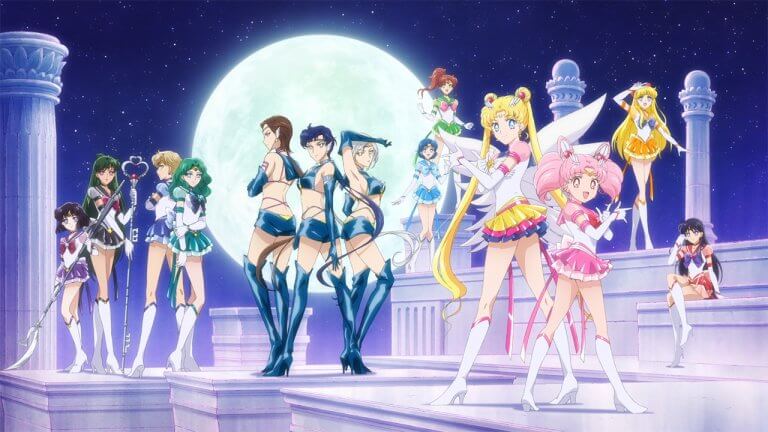
'Pretty Guardian Sailor Moon Cosmos: The Movie' Part 1 & Part 2 Coming to Netflix in August 2024
Search What's on Netflix
Most recent tags, popular tags, notifications from what's on netflix.

COMMENTS
(Star Trek: The Next Generation Companion, 2nd ed., p. 296) This episode is director Cliff Bole's 25th (and last), making him the most prolific director in TNG annals. He would go on to direct another 15 Star Trek episodes for DS9 and VOY. Reception [] Ron Moore remarked, "I think that holodeck stuff is a riot. The re-creation of the Orient ...
"Emergence" is an episode of the American science fiction television series Star Trek: The Next Generation. It is the 175th episode of the series, and the 23rd episode of the seventh season.Set in the 24th century, the series follows the adventures of the Starfleet crew of the Federation starship Enterprise-D.The crew has a bizarre experience on the holodeck and trouble with the Enterprise.
Emergence: Directed by Cliff Bole. With Patrick Stewart, Jonathan Frakes, LeVar Burton, Michael Dorn. Strange images begin appearing throughout the ship's decks and holodecks. Data and the rest of the crew begin to investigate only to discover that the ship's computer itself is exhibiting the strange behavior as it begins to become self-aware.
Star Trek The Next Generation episode transcripts. Emergence Stardate: 47869.2 Original Airdate: 9 May, 1994 [Holodeck - Prospero's island] (Shakespeare time, and Data is playing Prospero, from The Tempest, in near darkness) DATA: Graves at my command have wak'd their sleepers, op'd, and let 'em forth by my so potent art. ...
"Star Trek: The Next Generation" Emergence (TV Episode 1994) cast and crew credits, including actors, actresses, directors, writers and more. Menu. ... STAR TREK THE NEXT GENERATION SEASON 7 (1993) (8.5/10) a list of 25 titles created 11 Aug 2012 TNG '21 a list of 91 titles ...
Probably when everyone on the train started drinking champagne after the ship completed its mission. "Preemptive Strike" (season 7, episode 24; originally aired 5/14/1994) Or The One Where ...
Emergence Star Trek: The Next Generation. Jump to. Edit. Summaries. Strange images begin appearing throughout the ship's decks and holodecks. Data and the rest of the crew begin to investigate only to discover that the ship's computer itself is exhibiting the strange behavior as it begins to become self-aware. —Good2Go. After Holodeck 3 is ...
In "Emergence", puzzling events lead the crew of the Enterprise to a surprising conclusion: the ship is creating its own offspring. ... The gangster character takes a brick from the engineer and gets off at the next stop - Keystone City - which the three follow. The gangster places the brick in a wall, completing it; at the same time, La ...
The lives of the Enterprise crew are endangered when the ship suddenly develops its own intelligence.
Geordi and Data investigate an unexplained series of malfunctions, from which they deduce the ship is forming its own intelligence.
In-depth critical reviews of Star Trek and some other sci-fi series. Includes all episodes of Star Trek: The Original Series, The Animated Series, The Next Generation, Deep Space Nine, Voyager, Enterprise, Discovery, Picard, Lower Decks, Prodigy, and Strange New Worlds. Also, Star Wars, the new Battlestar Galactica, and The Orville.
Original air date: May 10, 1994. Data is on the holodeck, performing a rendition of The Tempest for Picard. As they are musing over the symbolism of Prospero's character, they notice what appears to be a steam train approaching them from out of the darkness. When the computer fails to respond to Picard's order to shut down the program, Data ...
Star Trek The Next Generation: Emergence. by Samantha M. Quinn. "Unlikely as it may sound, I believe the Enterprise may be forming an intelligence.". Unlikely, indeed. With three episodes left in the entire series, they decided to do a holodeck episode about the Enterprise suddenly and inexplicably evolving into something vaguely intelligent.
The Pegasus. Riker finds out his former commander from the starship Pegasus has orders that entail more than what is revealed to Picard, who thinks the Enterprise is en route to recover the lost ship. And Riker is ordered to secrecy. Episode 13 • Jan 15, 1994 • 46 m.
Star Trek: The Next Generation (TNG) is an American science fiction television series created by Gene Roddenberry. It originally aired from September 28, 1987, to May 23, 1994, in syndication, spanning 178 episodes over seven seasons. ... Star Trek harnessed the emergence of home video technologies that rose to prominence in the 1980s as new ...
Watch Star Trek: The Next Generation (full episodes) by streaming online with Philo. This series is set in the 24th century, featuring a bigger USS Enterprise.
Episode Guide for Star Trek: The Next Generation 7x23: Emergence. Episode summary, trailer and screencaps; guest stars and main cast list; and more.
1701-D's holodeck goes crazy, for one last time.This podcast is a run through and break down of every single Star Trek: The Next Generation episode. From "En...
ST:TNG:175 - "Emergence" (Stardate: 47869.2) - this is the 23rd episode of the 7th and last season of Star Trek: The Next Generation. After a series of malfunctions onboard the Enterprise, including the Orient Express train (from Dr. Crusher's program) interrupting Data's rendition of Prospero's Island for Captain Picard, the captain orders an emergency core shutdown.
About Press Copyright Contact us Creators Advertise Developers Terms Privacy Policy & Safety How YouTube works Test new features NFL Sunday Ticket Press Copyright ...
If you find our videos helpful you can support us by buying something from amazon.https://www.amazon.com/?tag=wiki-audio-20Emergence (Star Trek: The Next Gen...
The lives of the Enterprise crew are endangered when the ship suddenly develops its own intelligence.
Introduced in Star Trek: The Next Generation's first season episode "Conspiracy," the parasites wormed their way into Starfleet's upper echelon. Picard and the crew of the Enterprise are able to stop them, but the episode ends on an ominous note: the parasites sent a signal to…somewhere. The episode never received a follow-up, and became one of the franchise's biggest dangling plot ...
Gene Roddenberry considered all of these actors for Star Trek: The Next Generation before casting Patrick Stewart, LeVar Burton, and Gates McFadden. However, the most surprising alternate idea for ...
The quest for the Progenitors' life-changing technology came to an astonishing conclusion in Star Trek: Discovery's series finale, "Life, Itself," as Captain Michael Burnham decided that such power was too great for any one individual or culture to wield.Since the Progenitors had brought infinite diversity in infinite combinations to the galaxy when they seeded humanoid life throughout the ...
We now begin an extended arc that embraces the iconic timeline of the Star Trek franchise. Join this long-term mission through undiscovered systems, with new content: officers, refits, events and much more. This month, along with The Next Generation, we're also launching a brand new feature previously mentioned in our Roadmap Update: Away Teams!
Star Trek: The Next Generation: Created by Gene Roddenberry. With Patrick Stewart, Jonathan Frakes, LeVar Burton, Marina Sirtis. Set almost 100 years after Captain Kirk's 5-year mission, a new generation of Starfleet officers sets off in the U.S.S. Enterprise-D on its own mission to go where no one has gone before.
It'll begin streaming the first season by the end of 2023. Netflix has announced that it will be saving the short-lived Paramount+ series Star Trek: Prodigy, which recently had its second renewal order scrapped. After shopping the project, Netflix has announced it'll soon be the new streaming home for both season 1 in 2023 and season 2 in 2024.